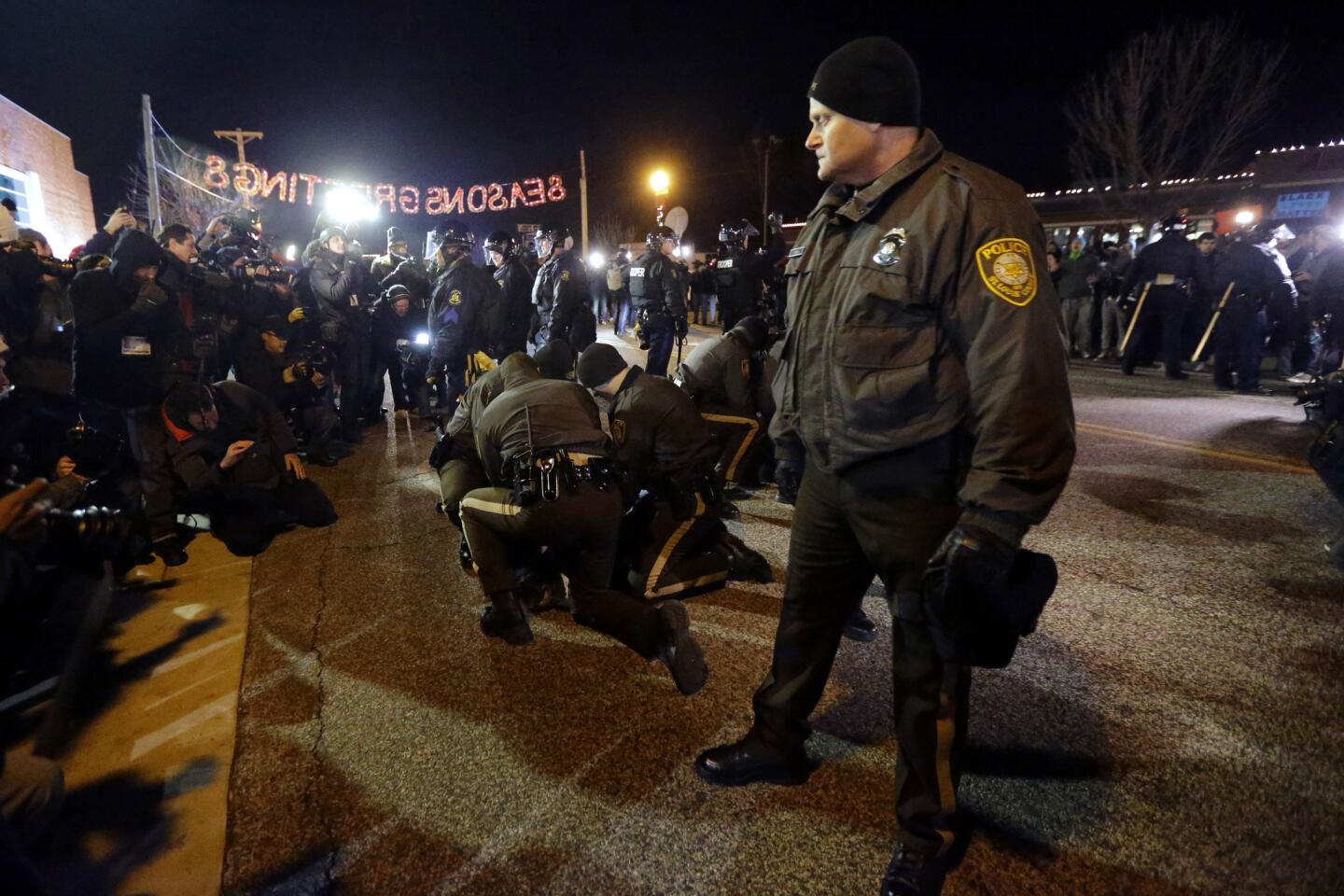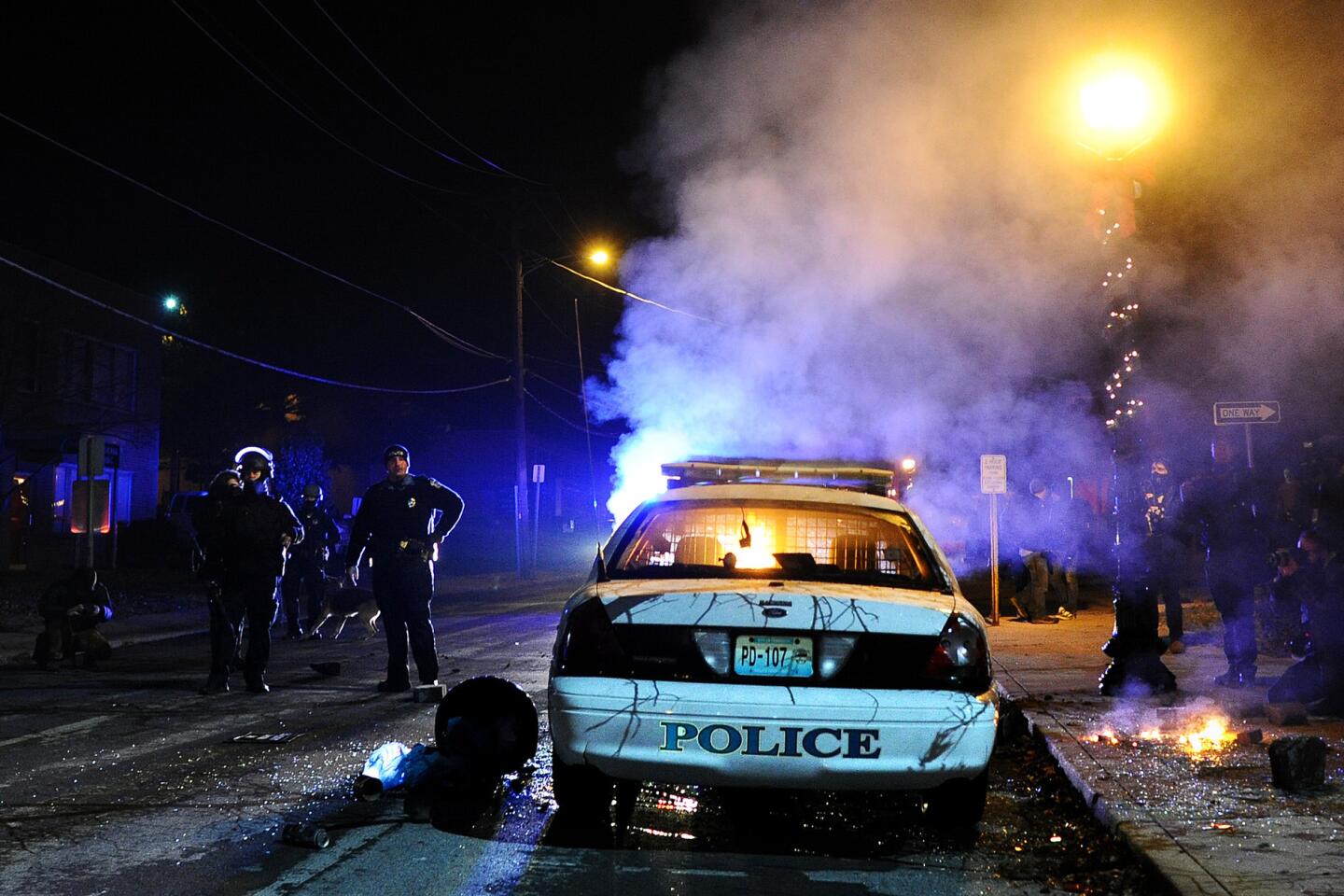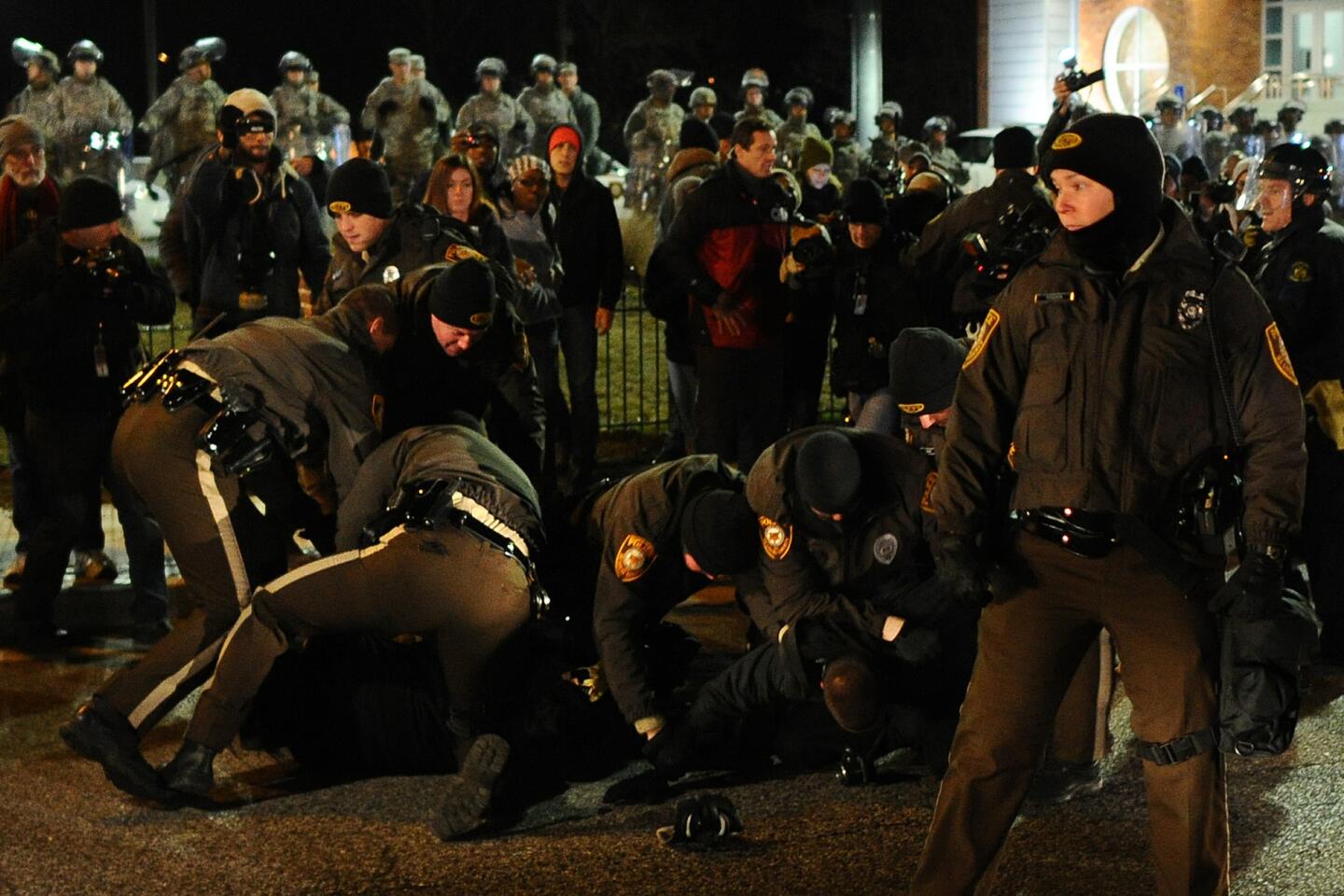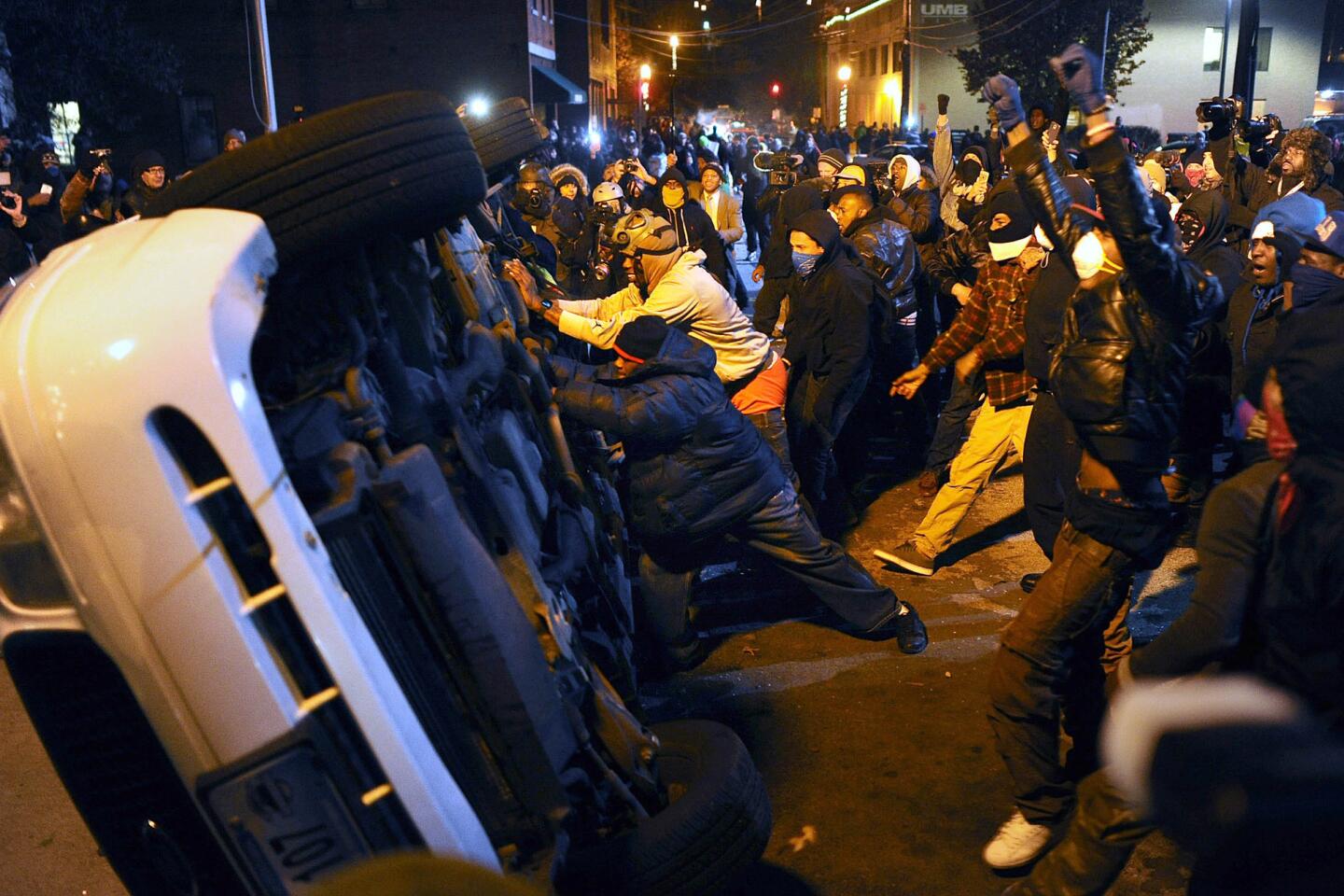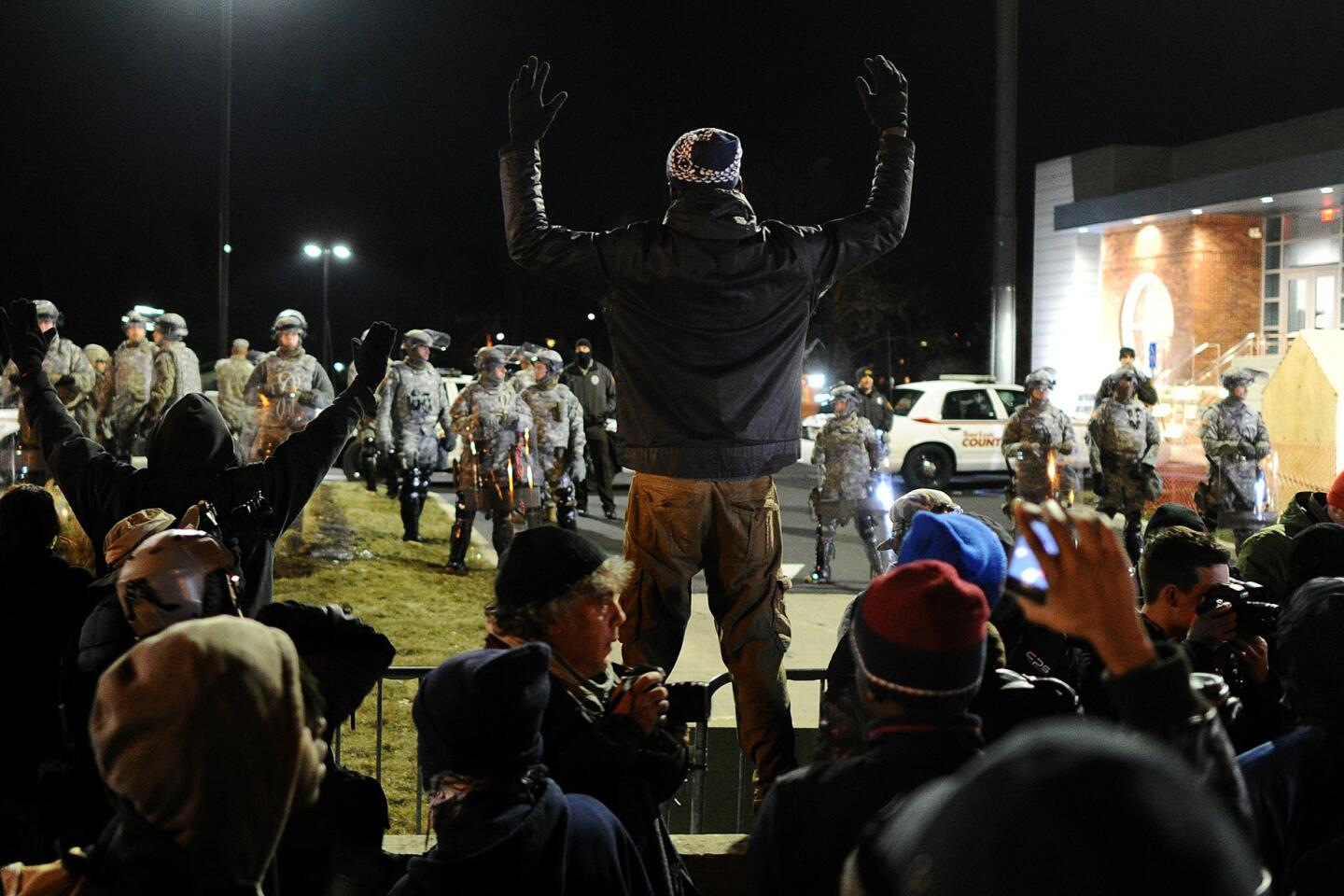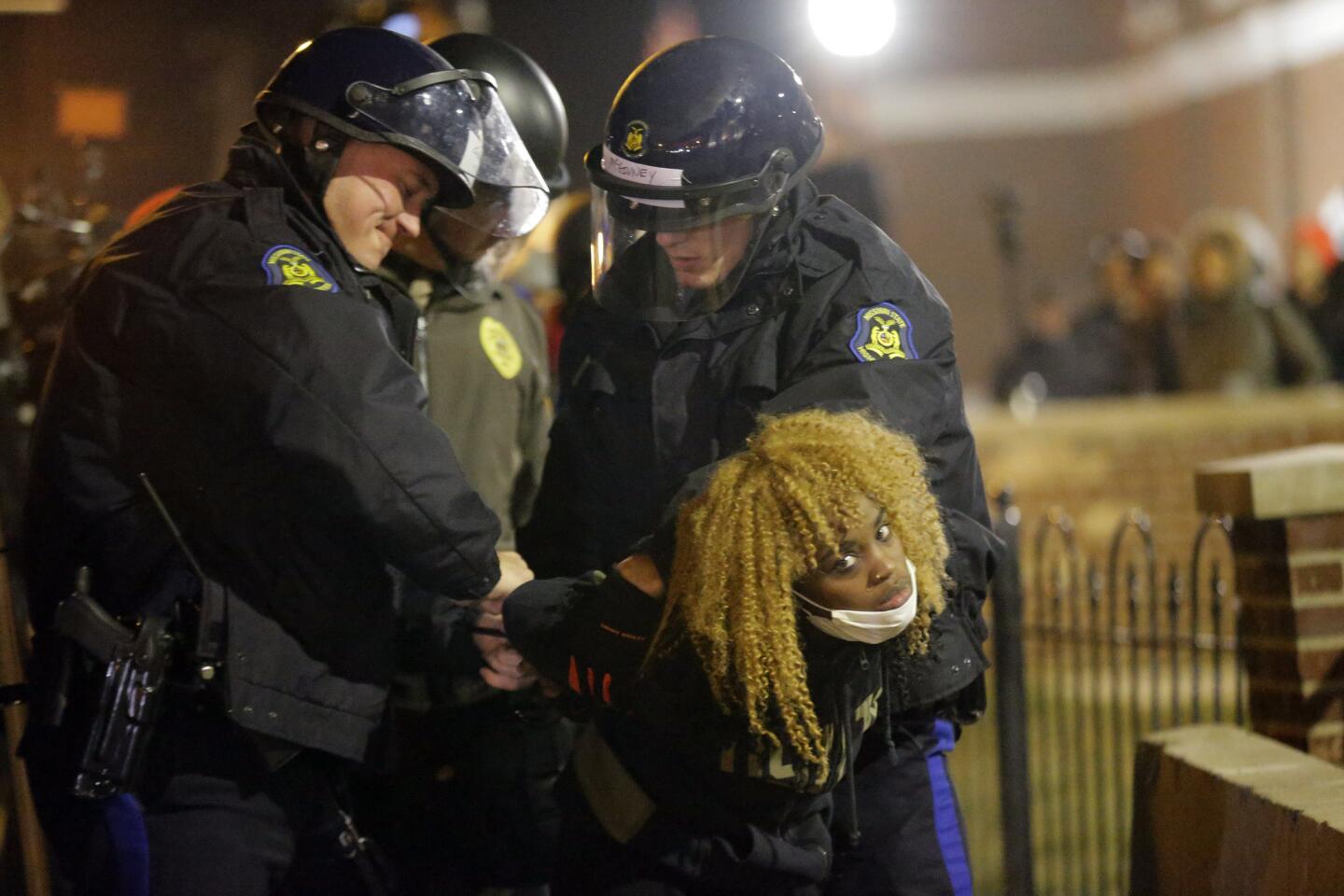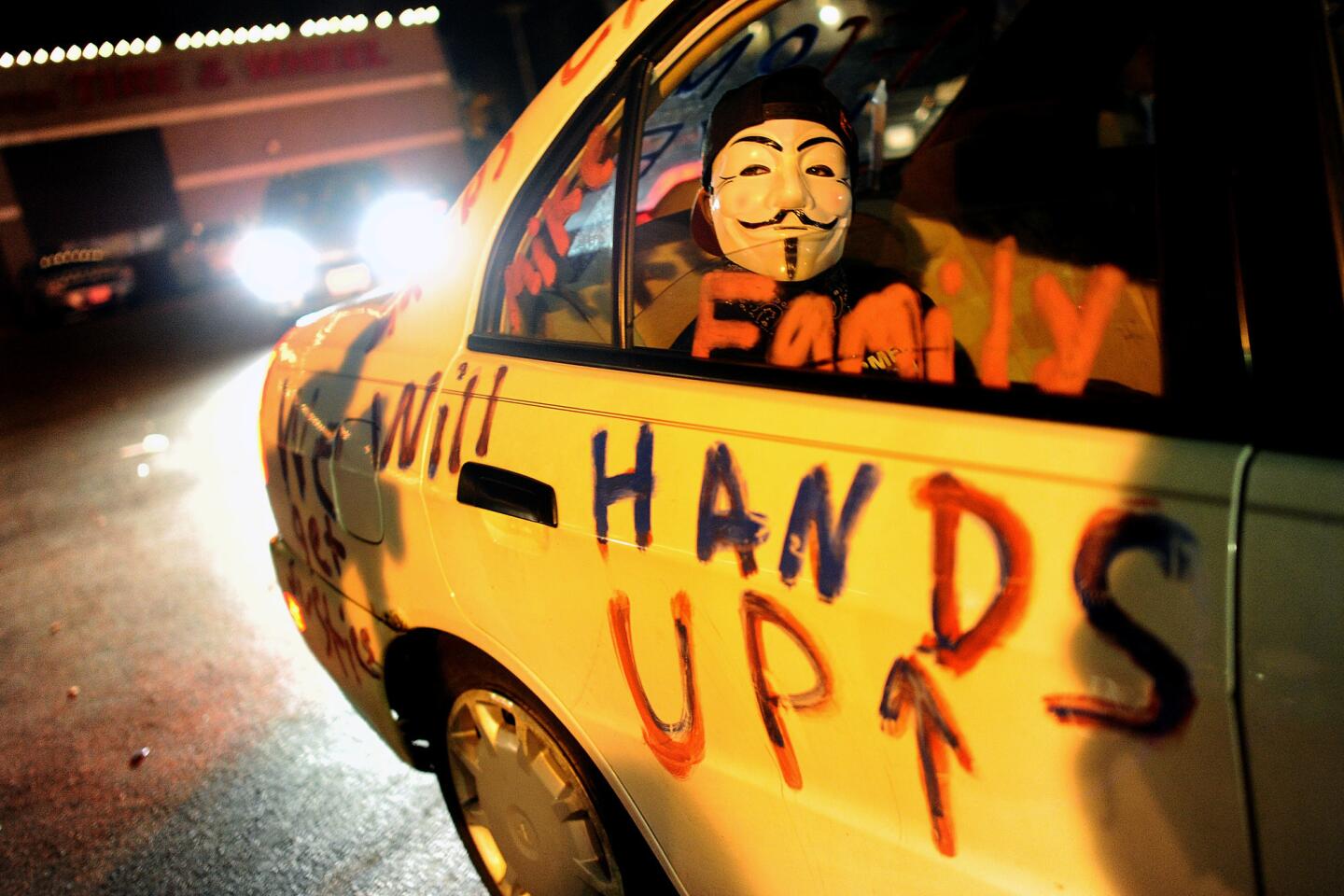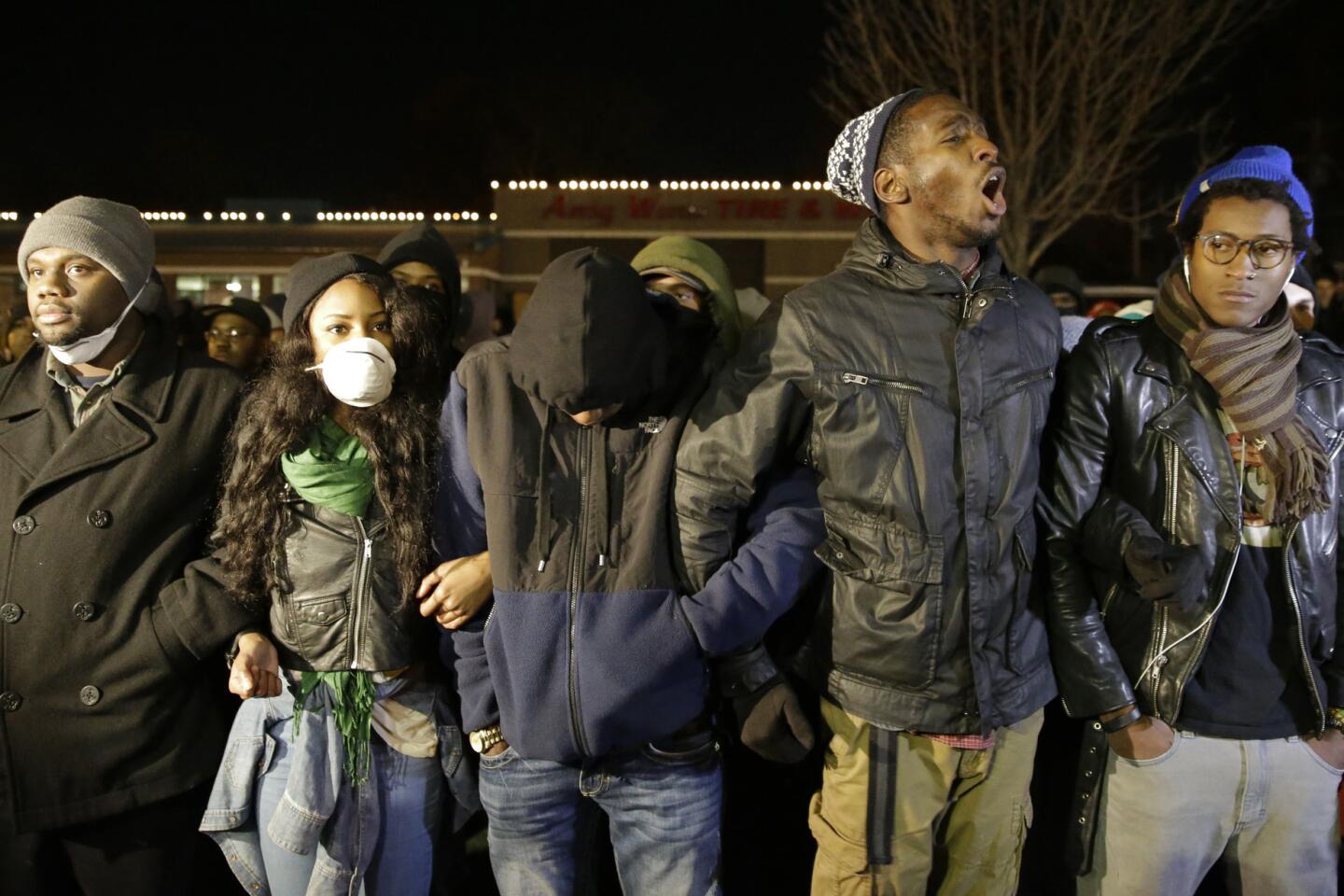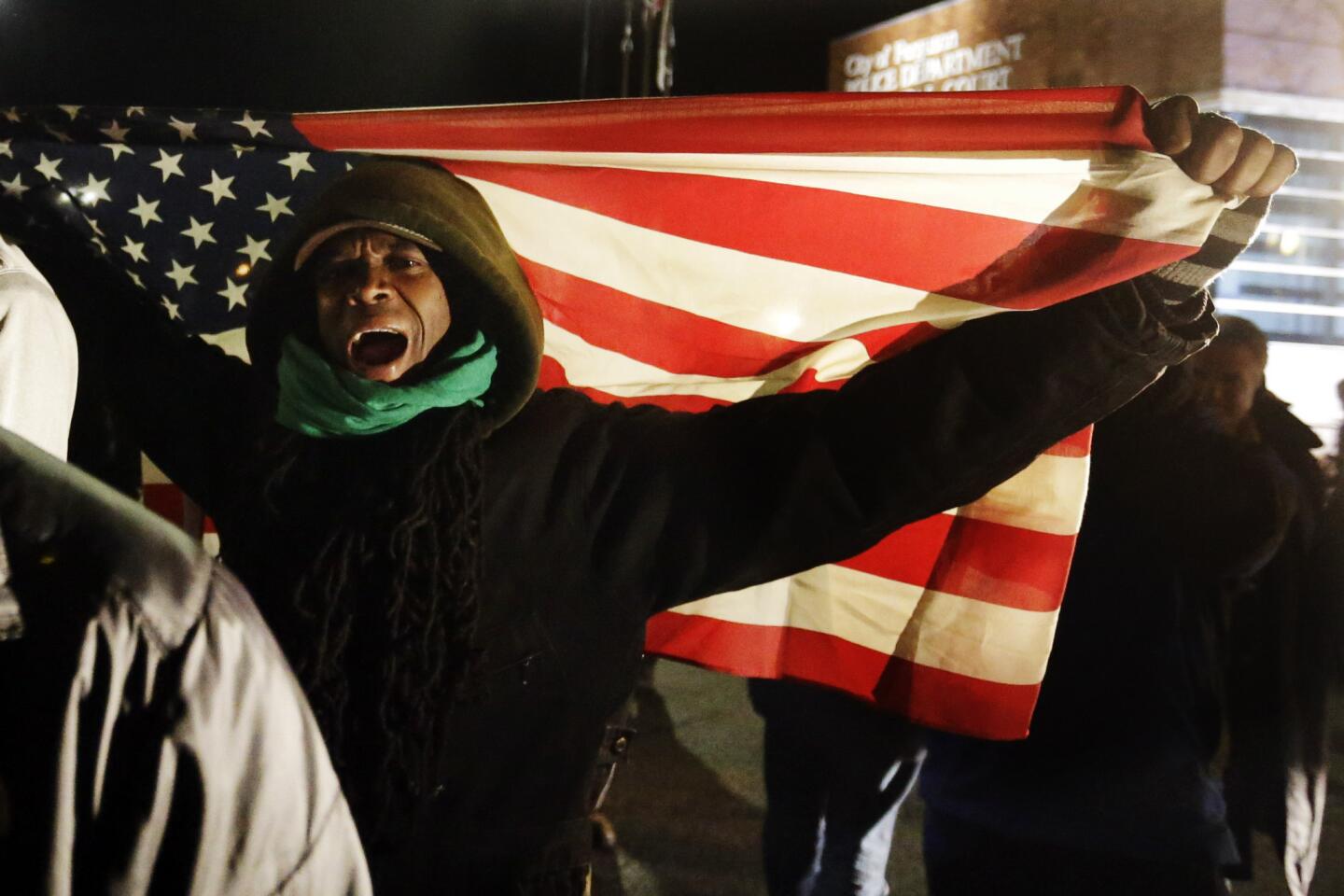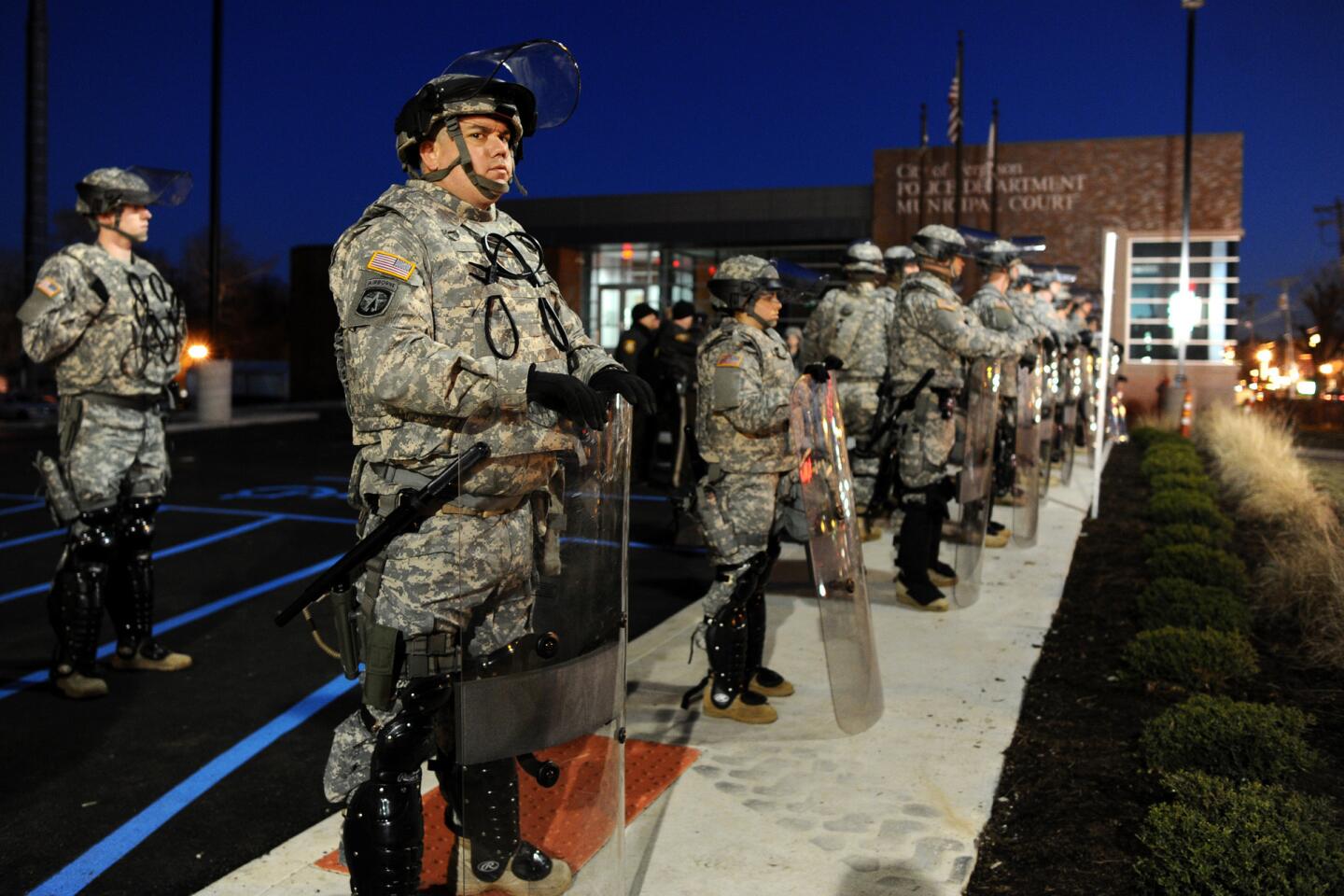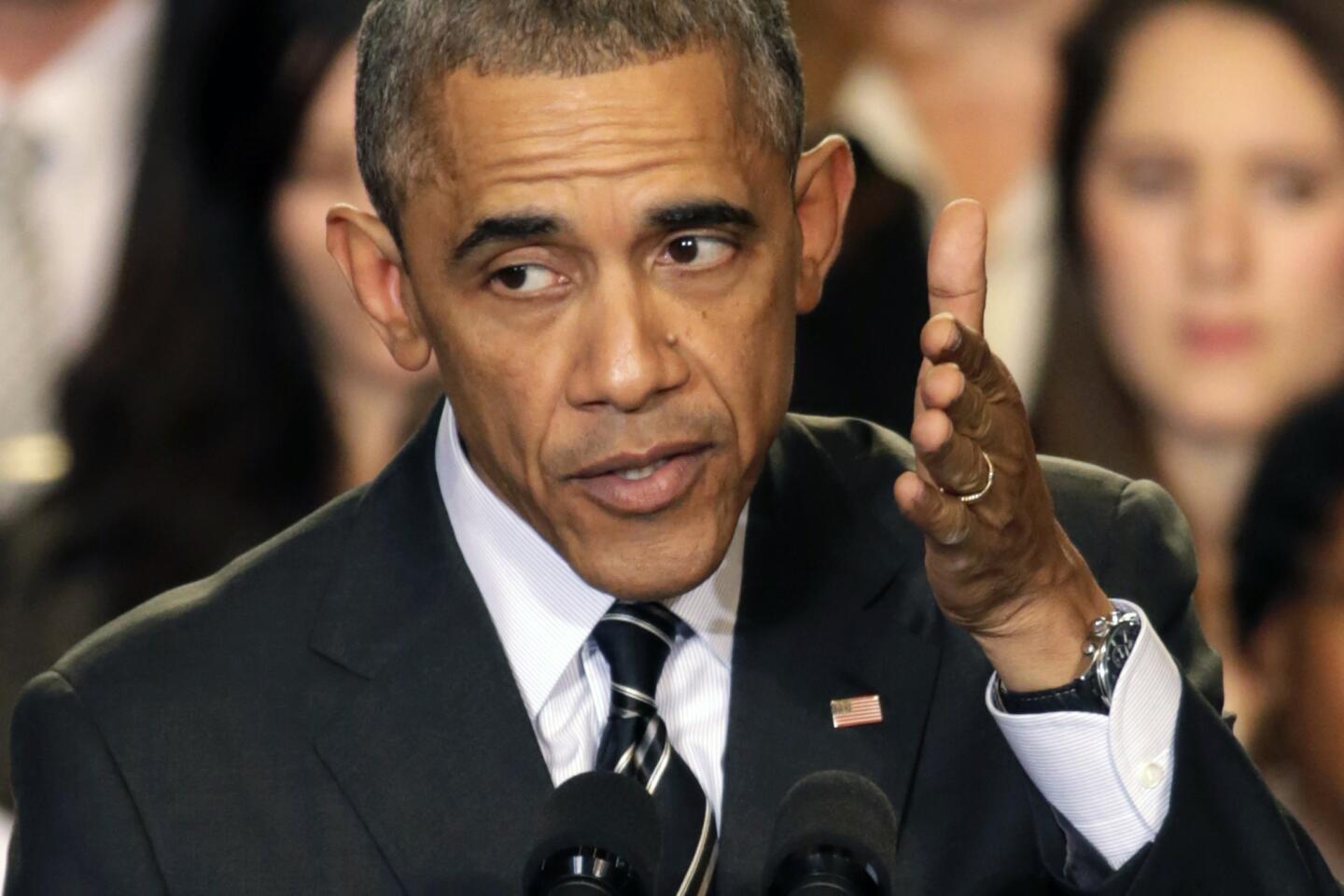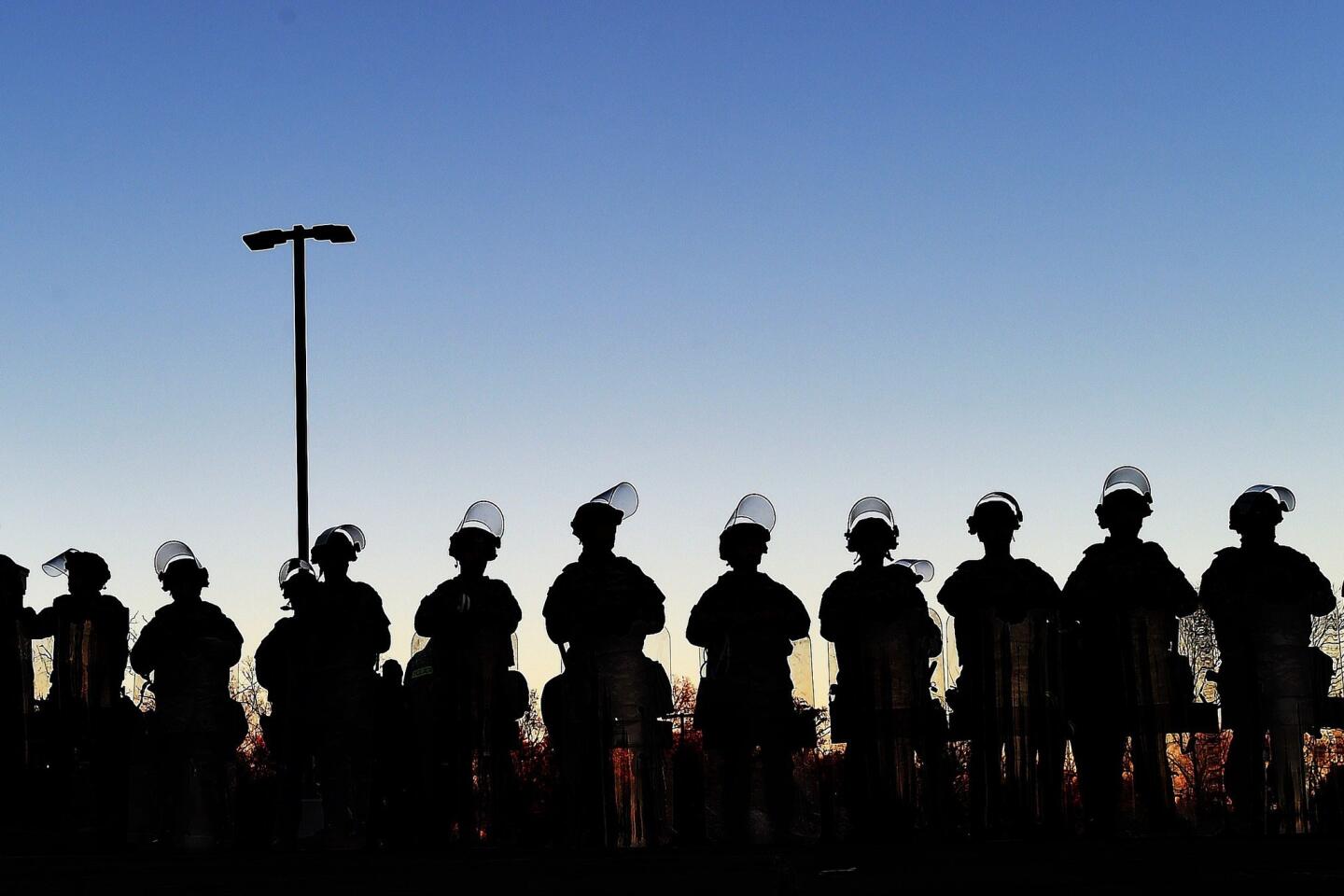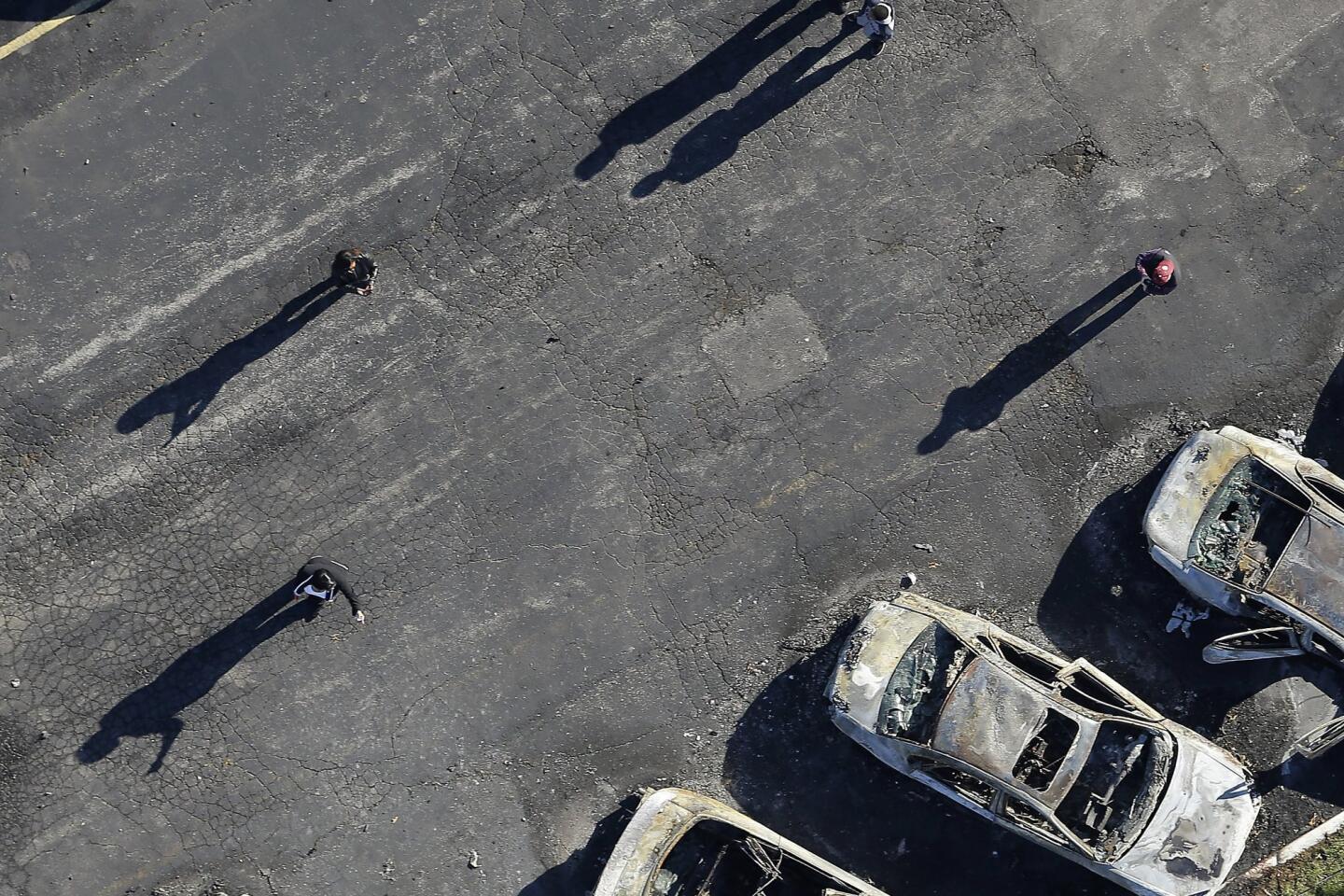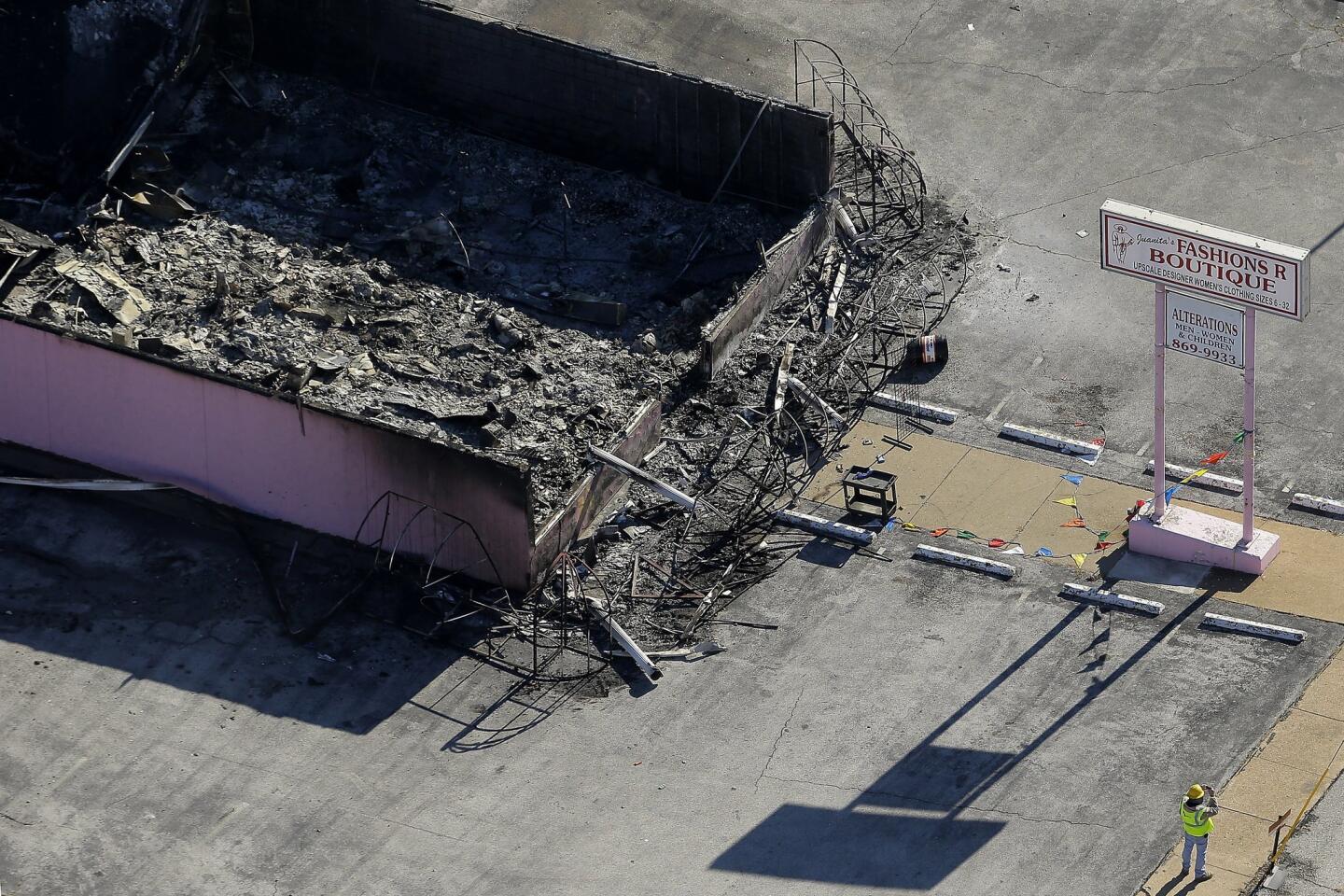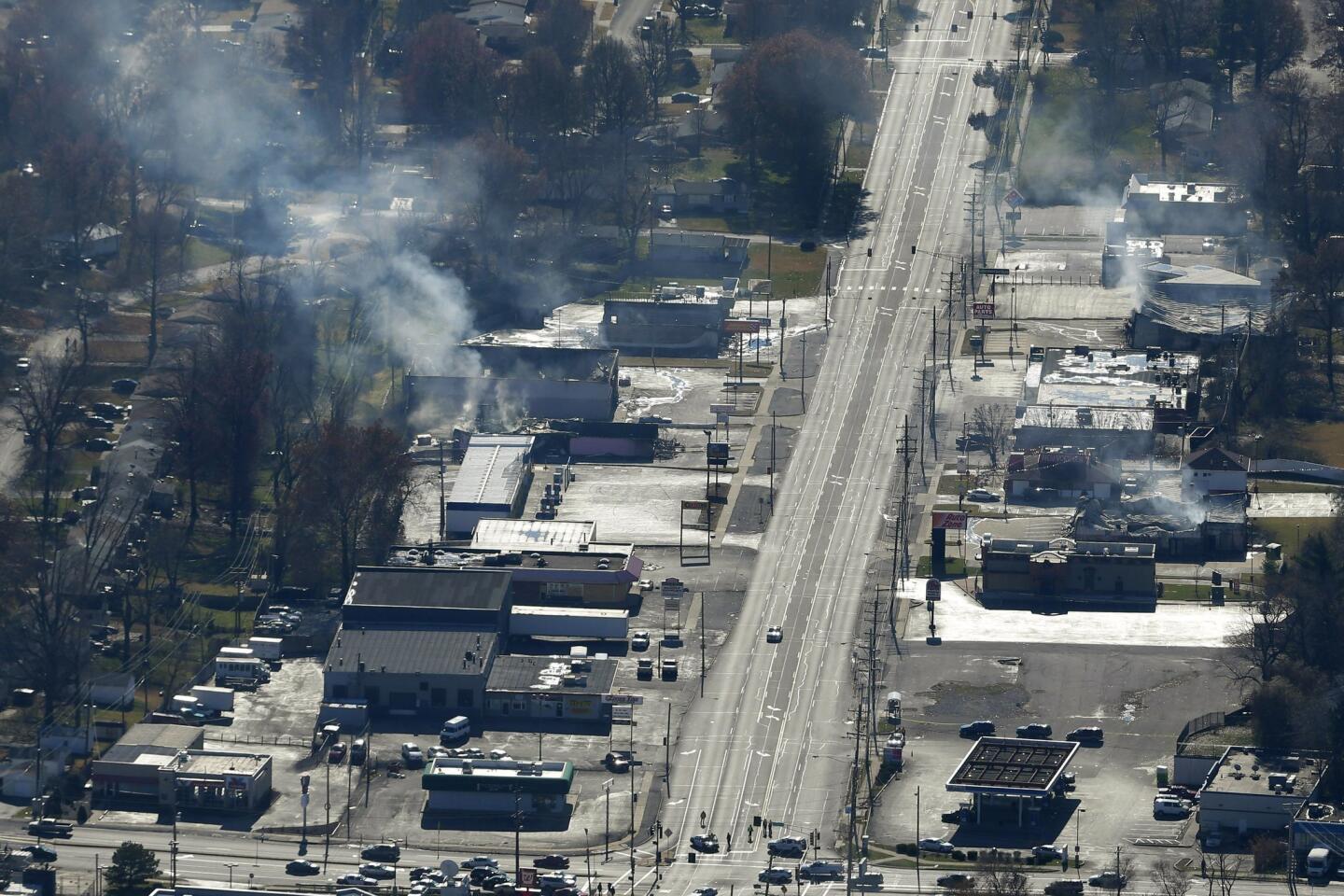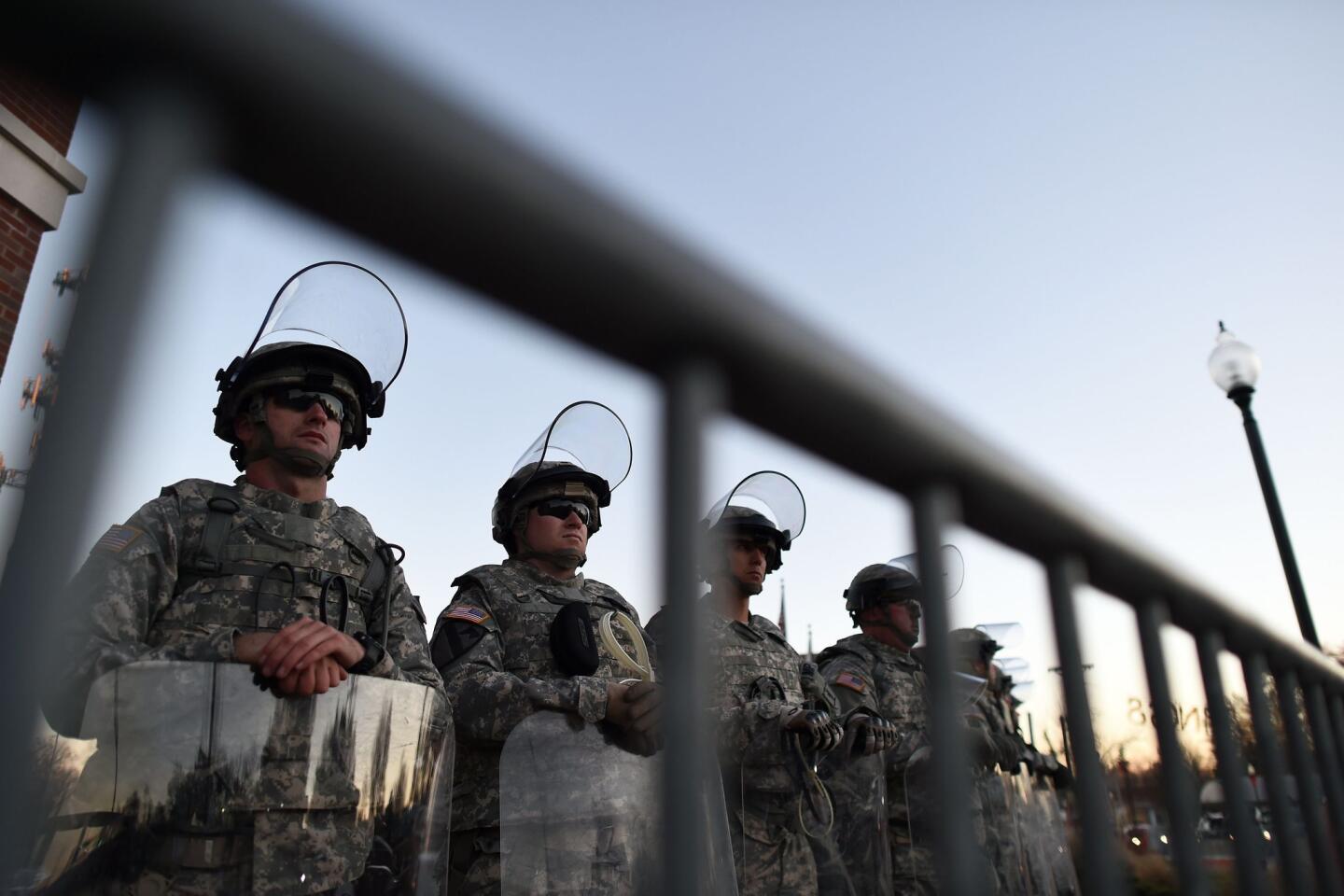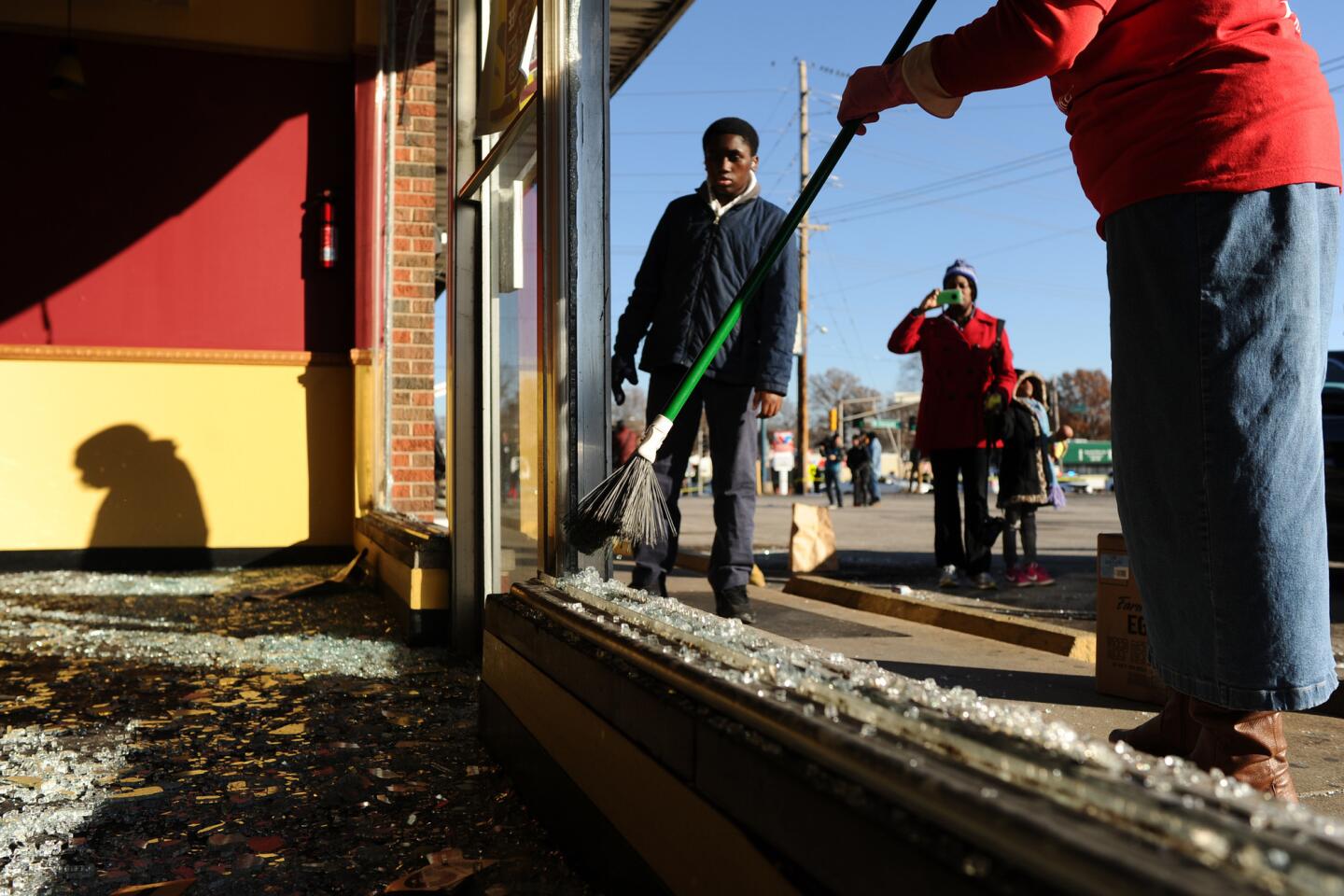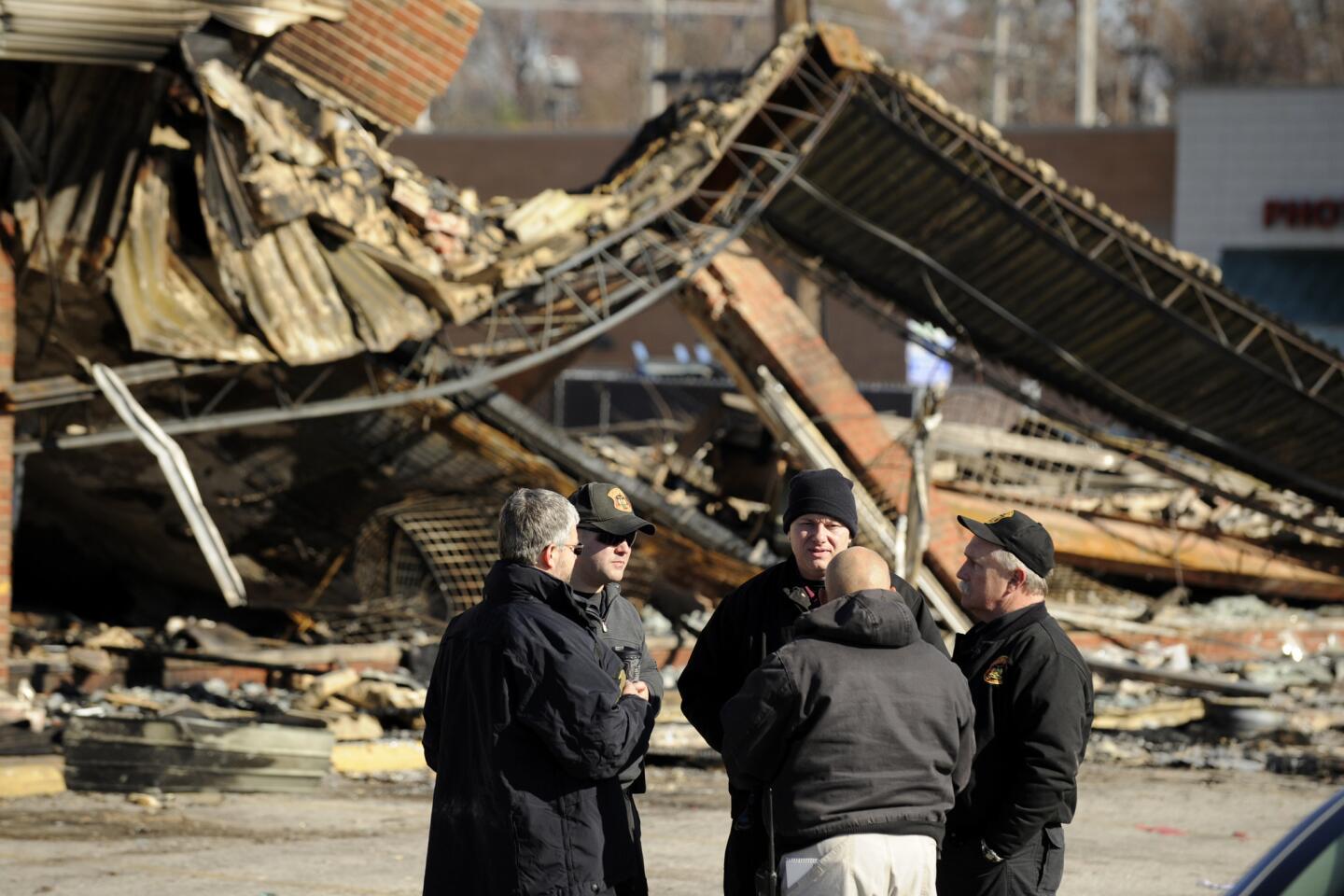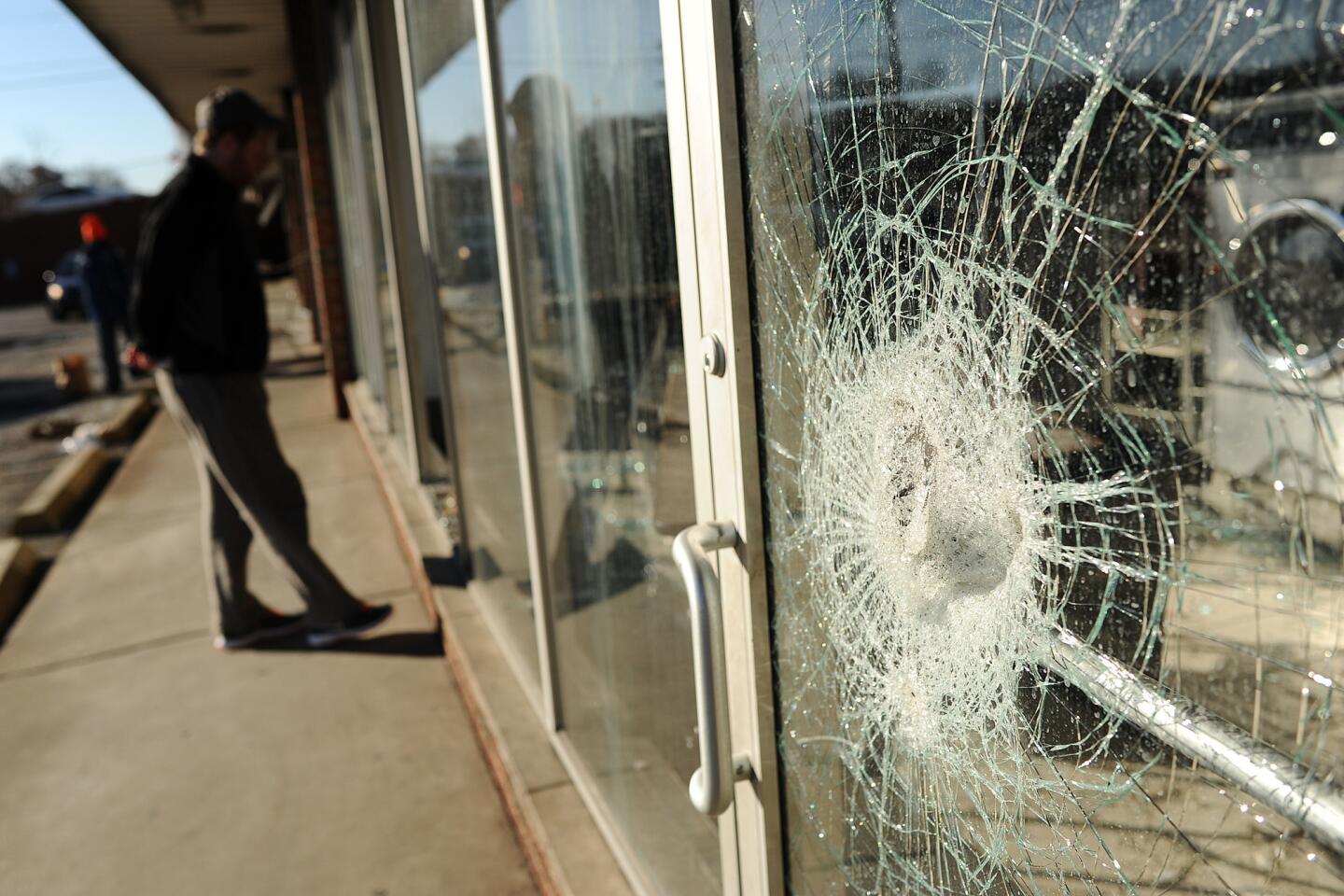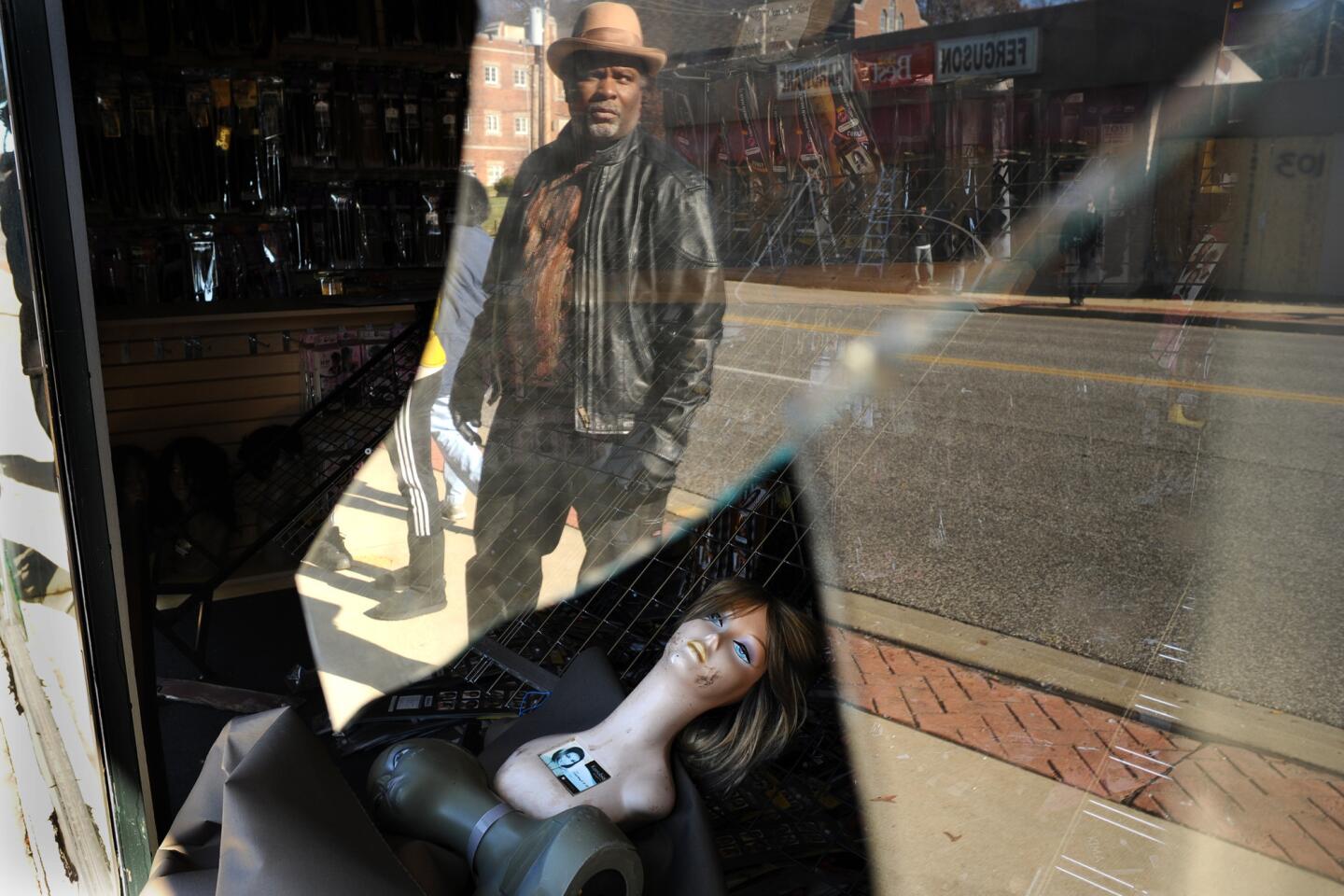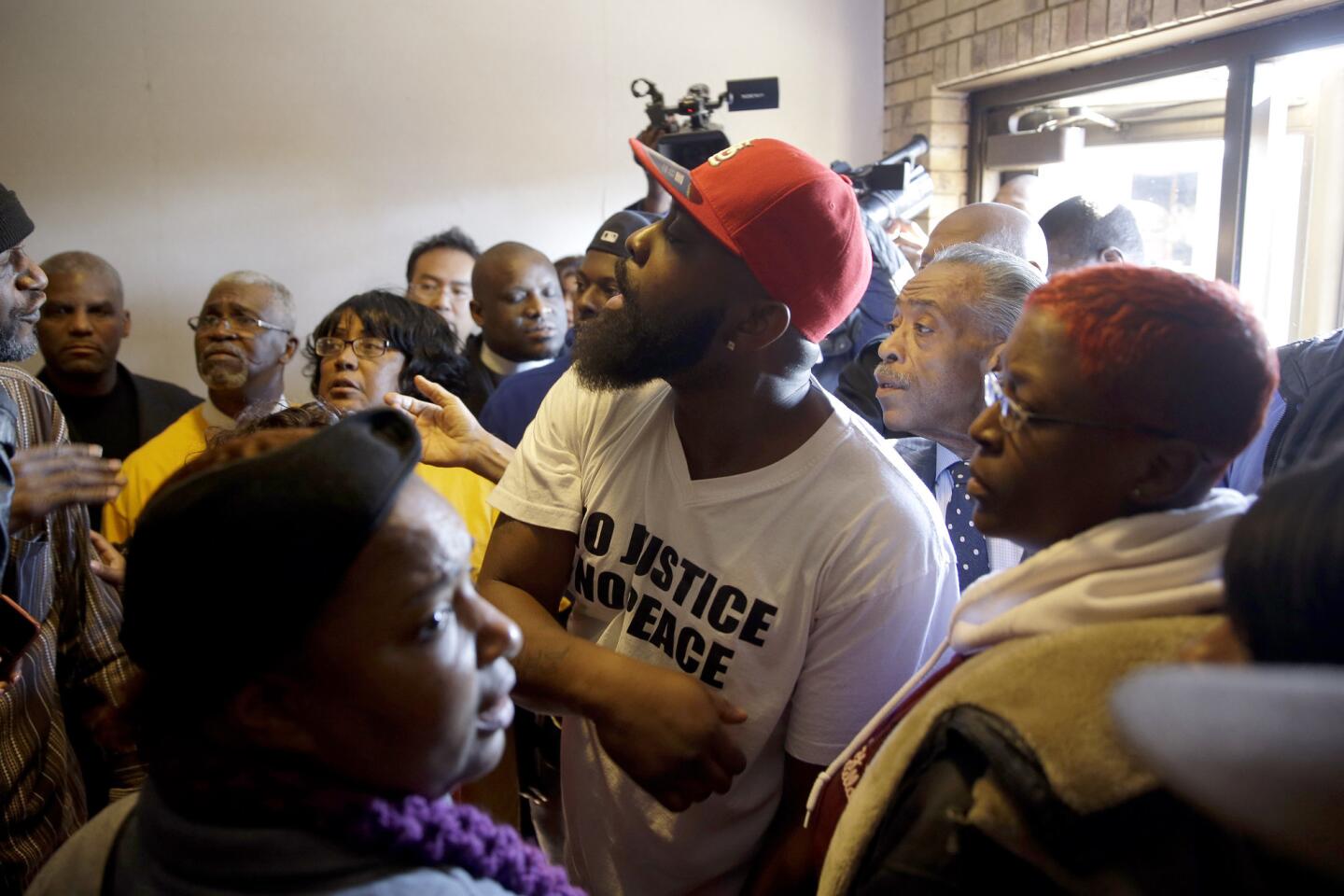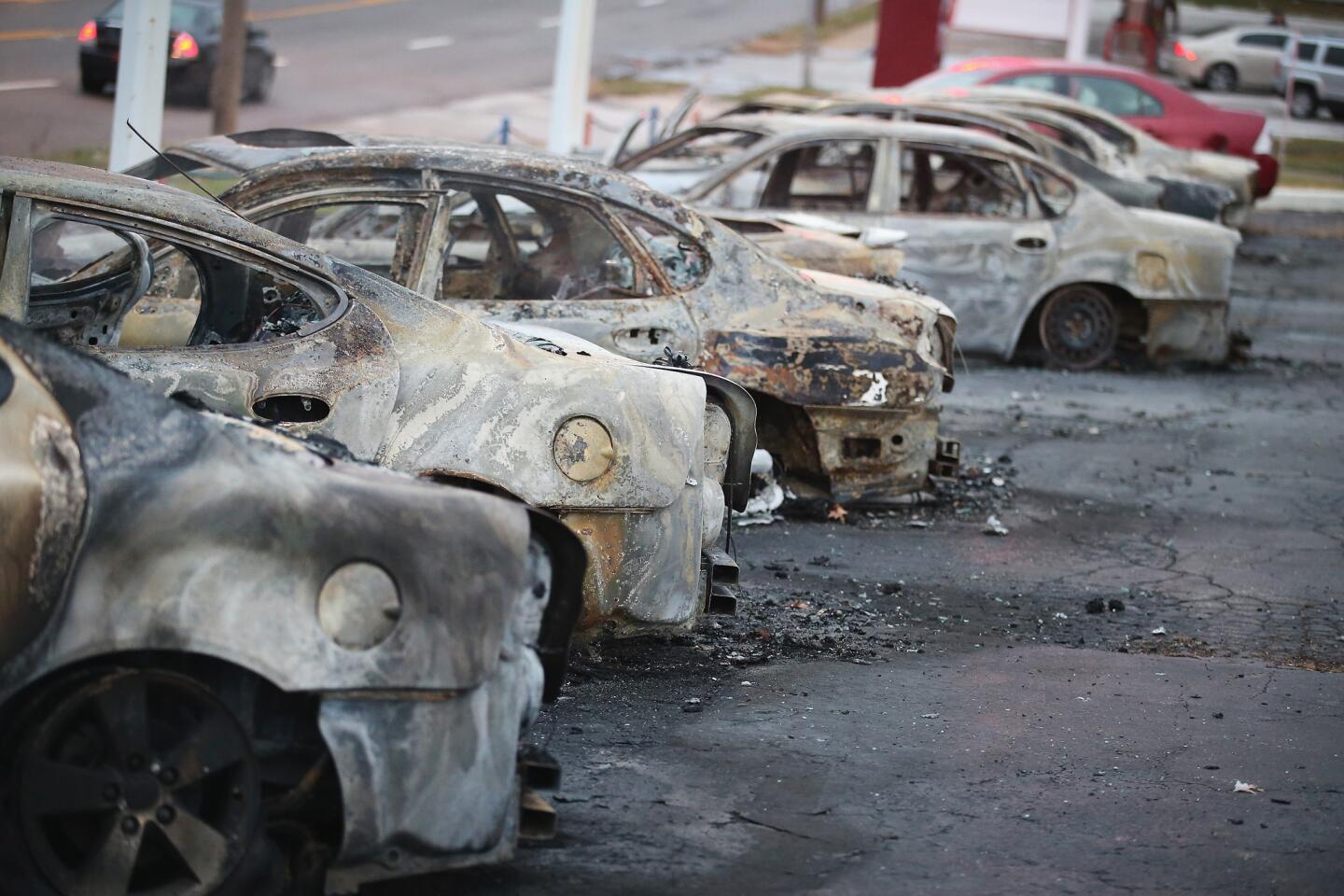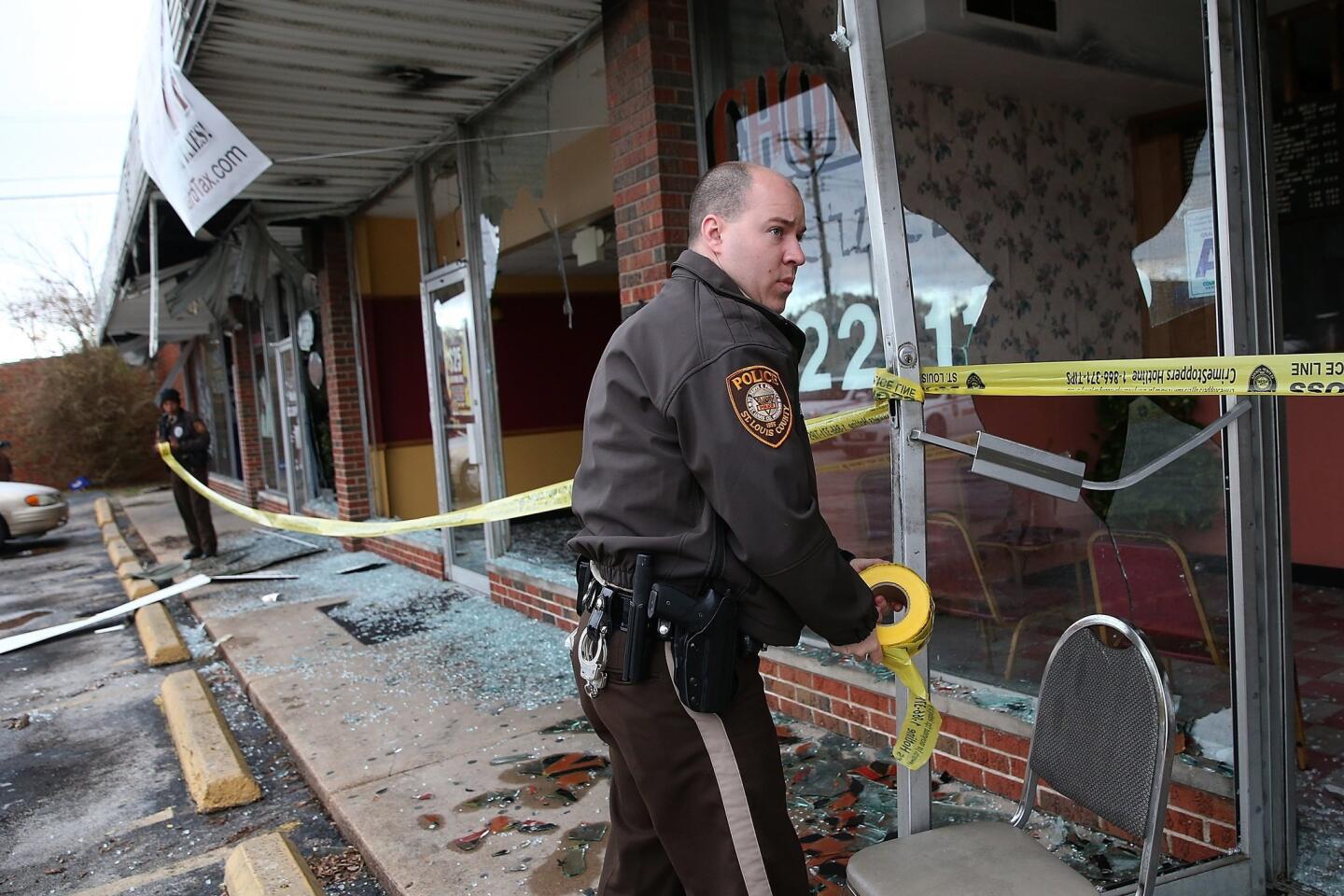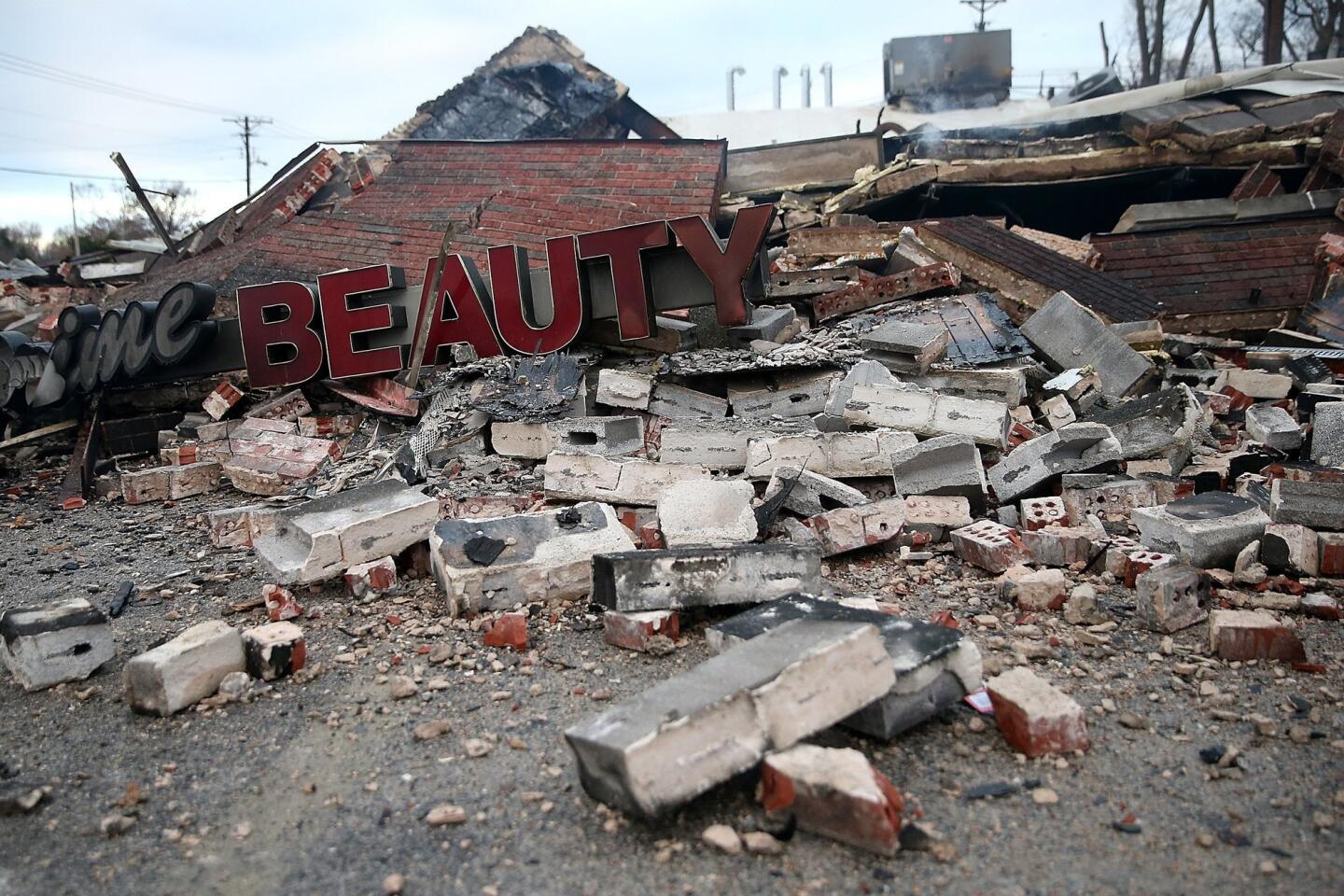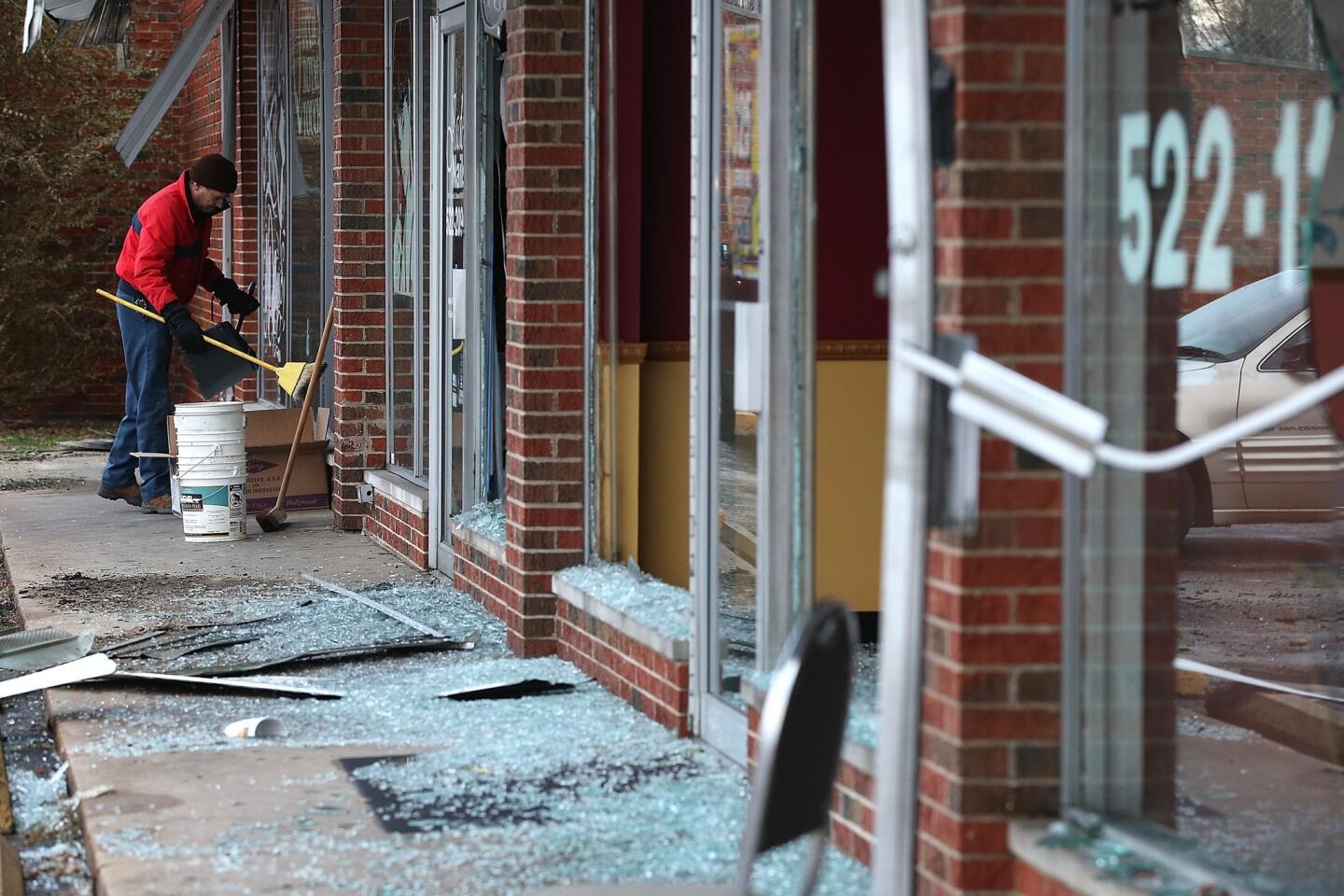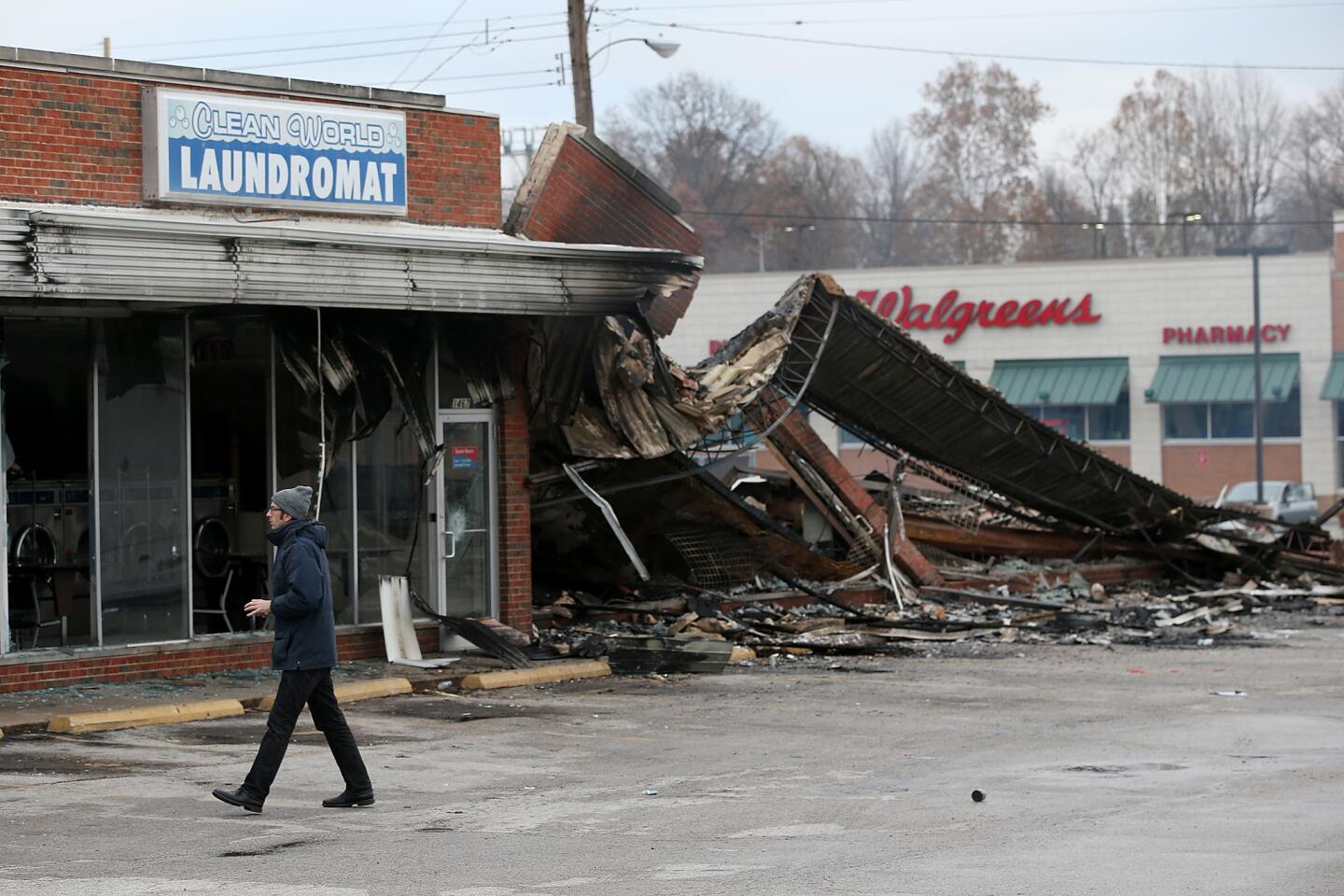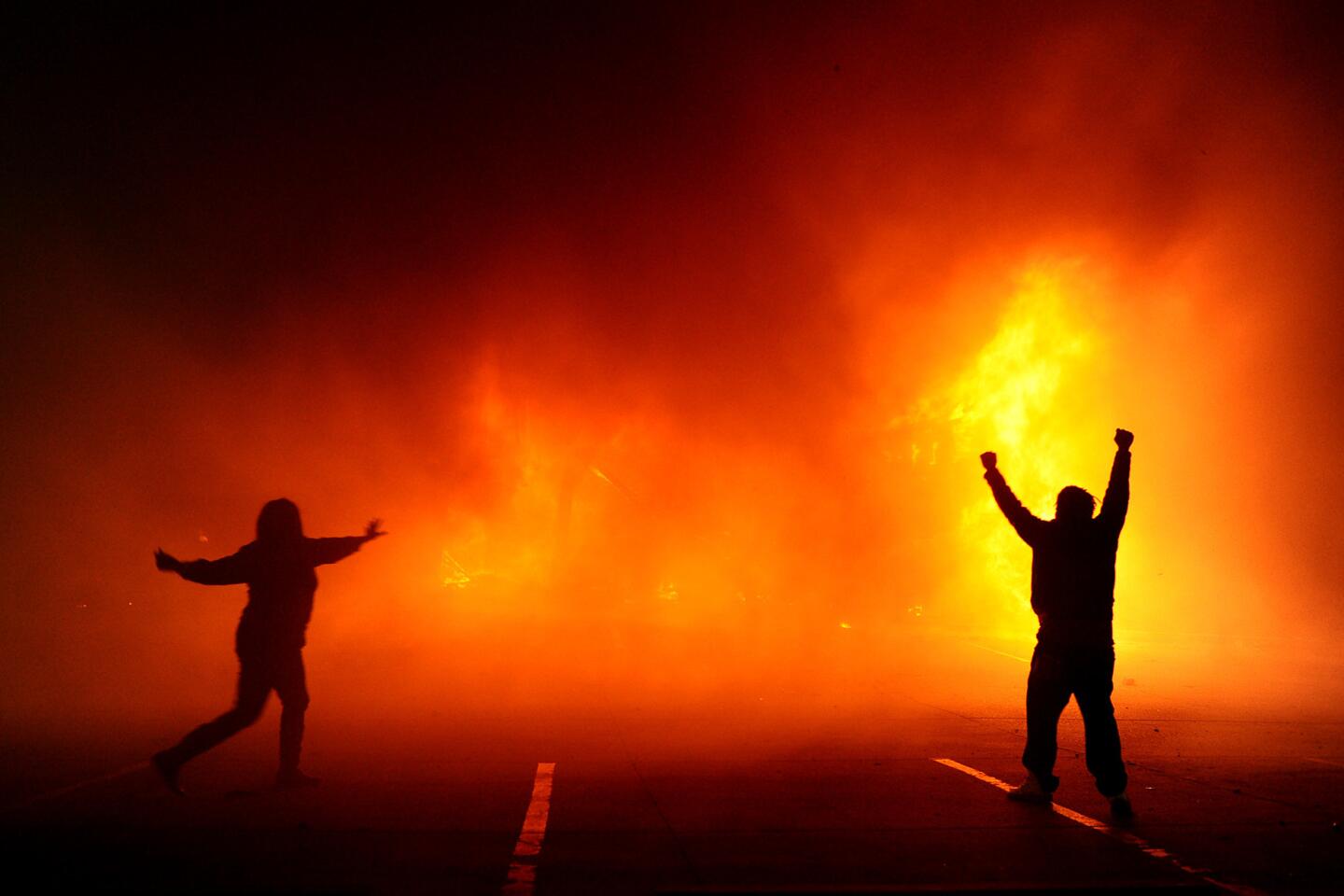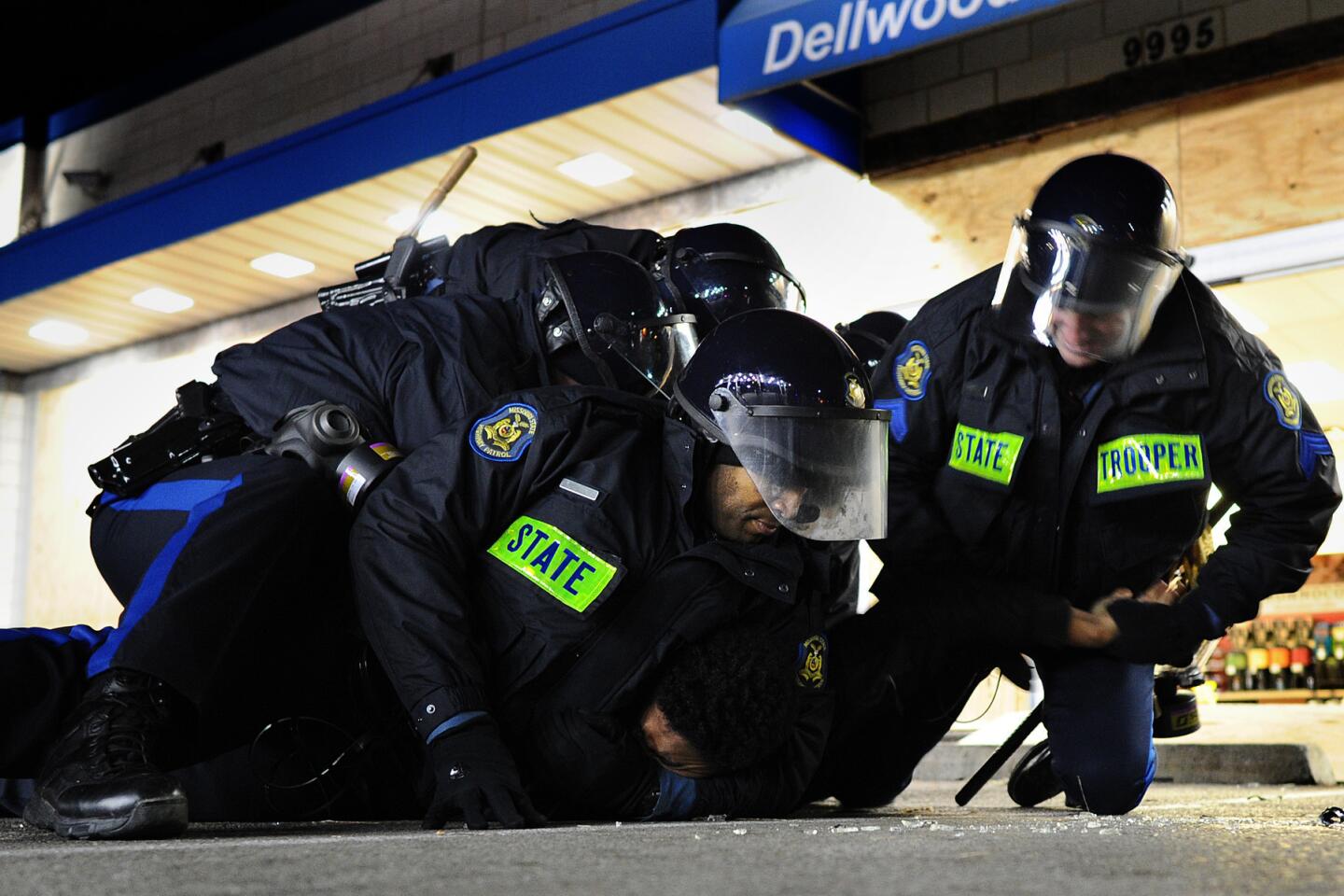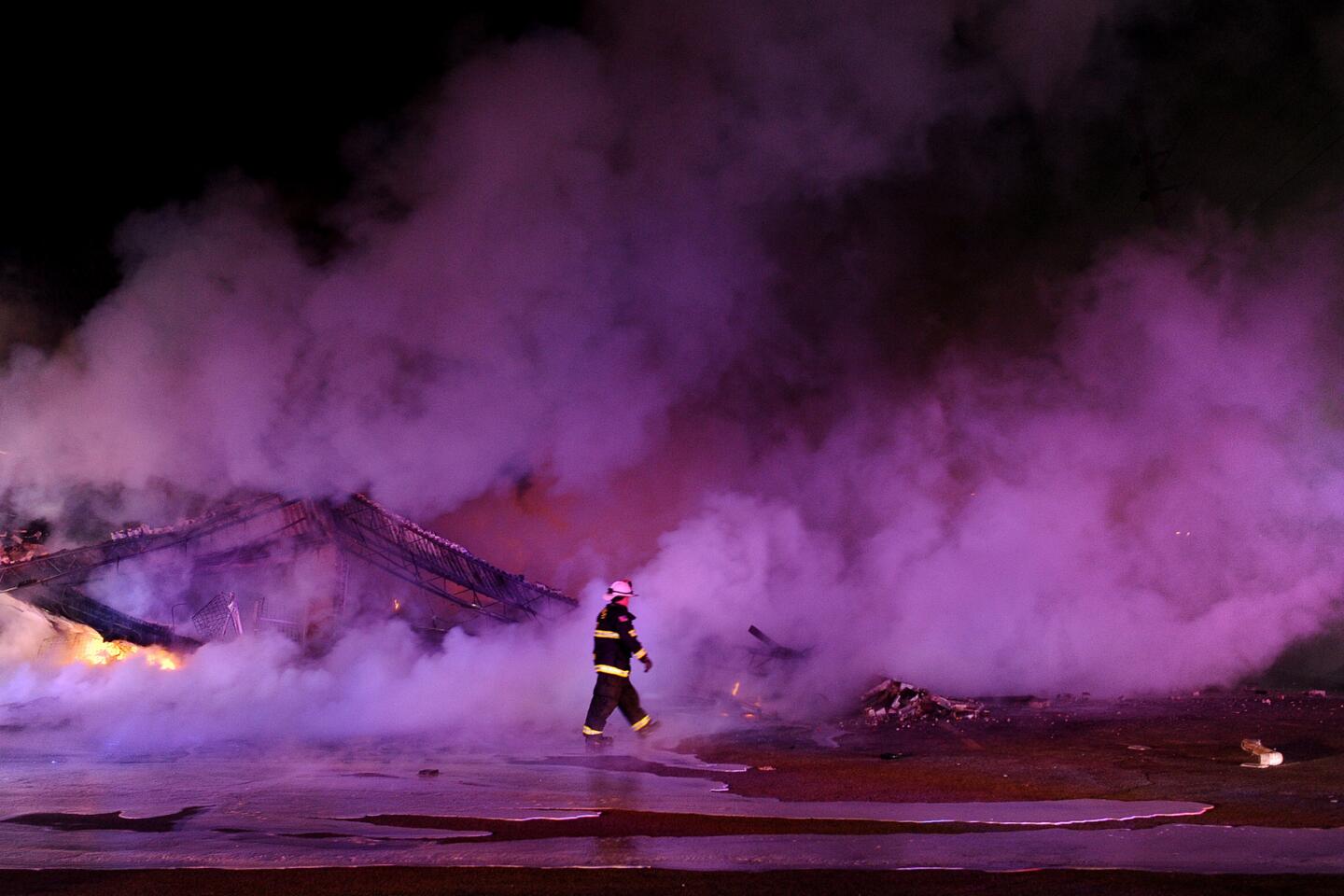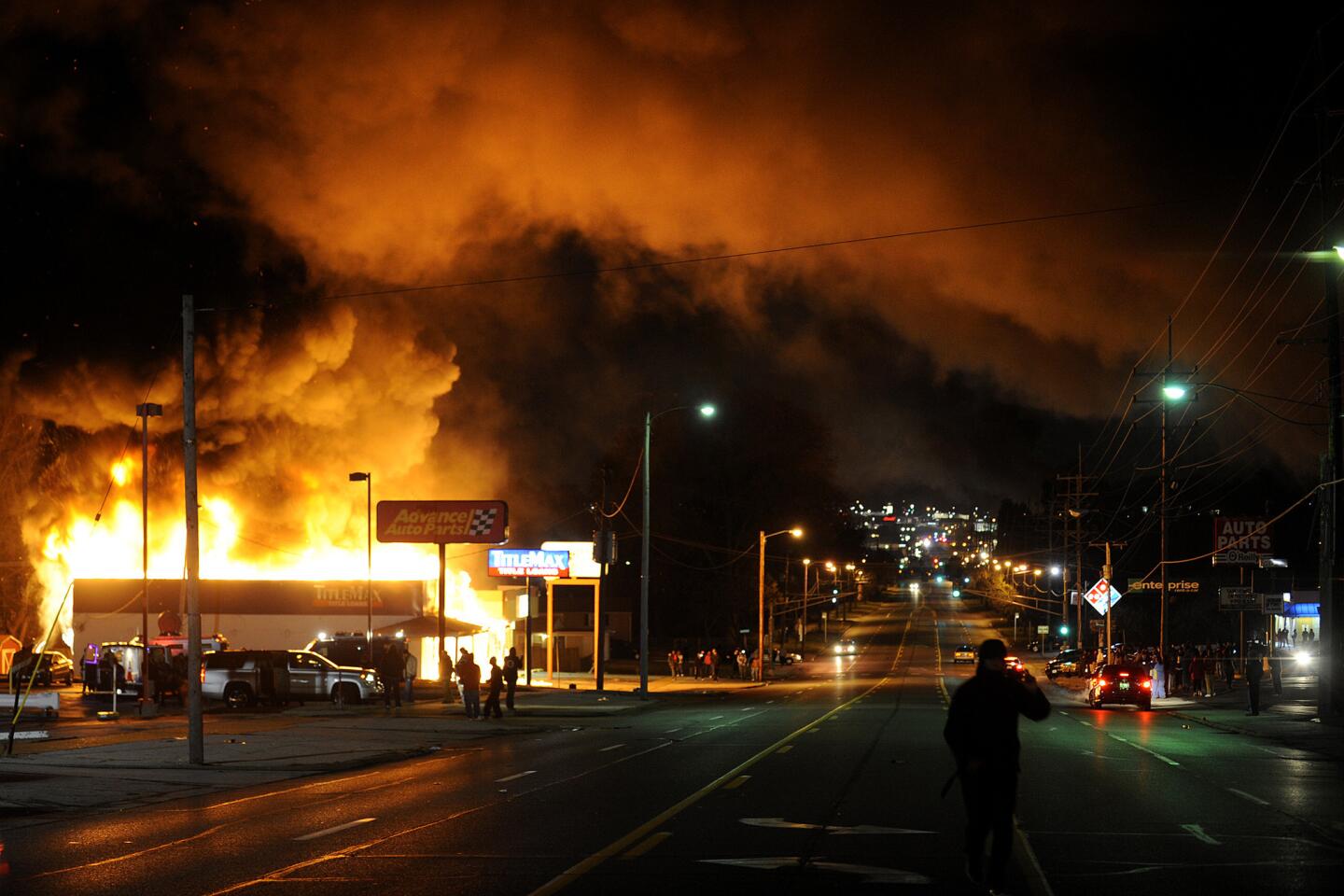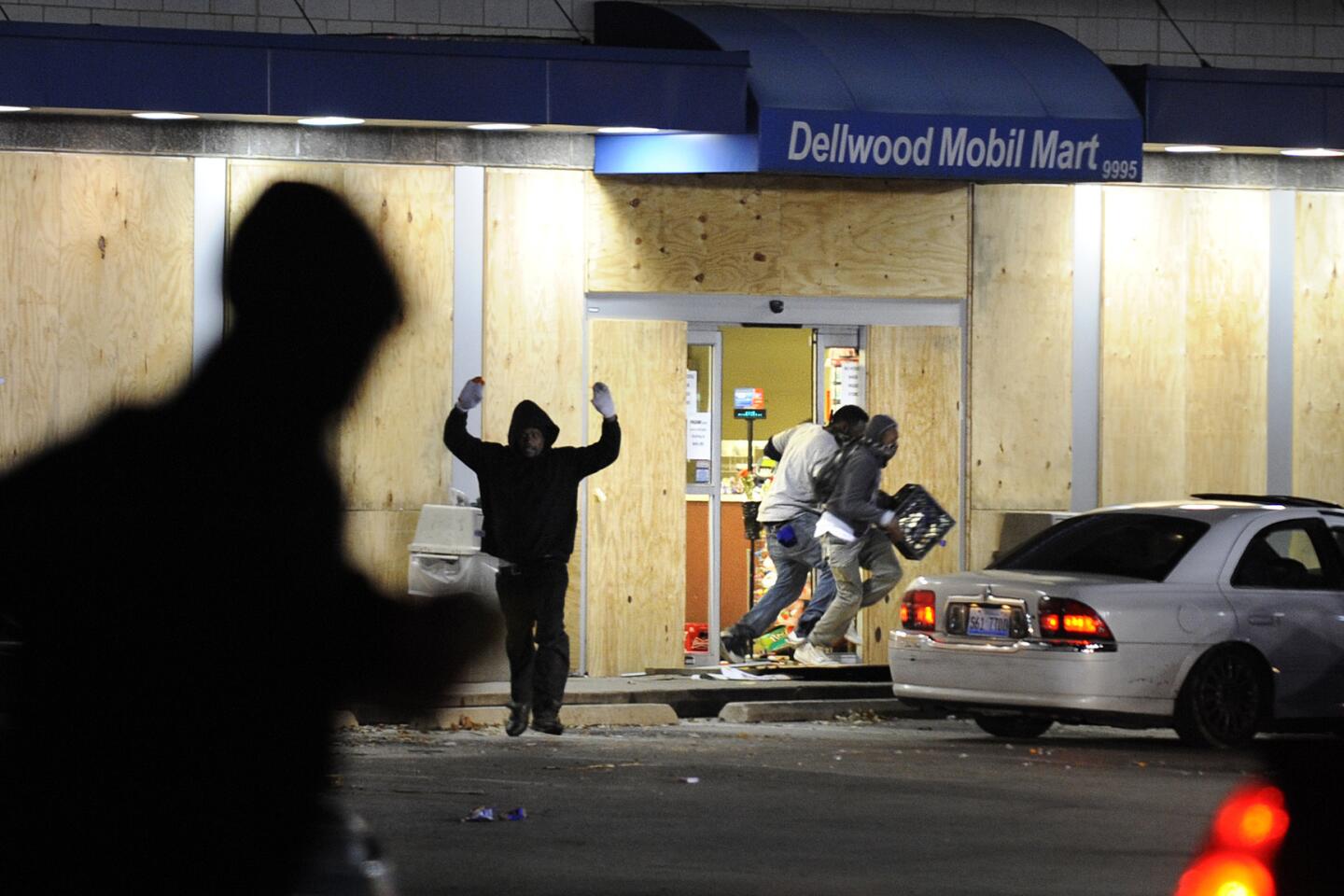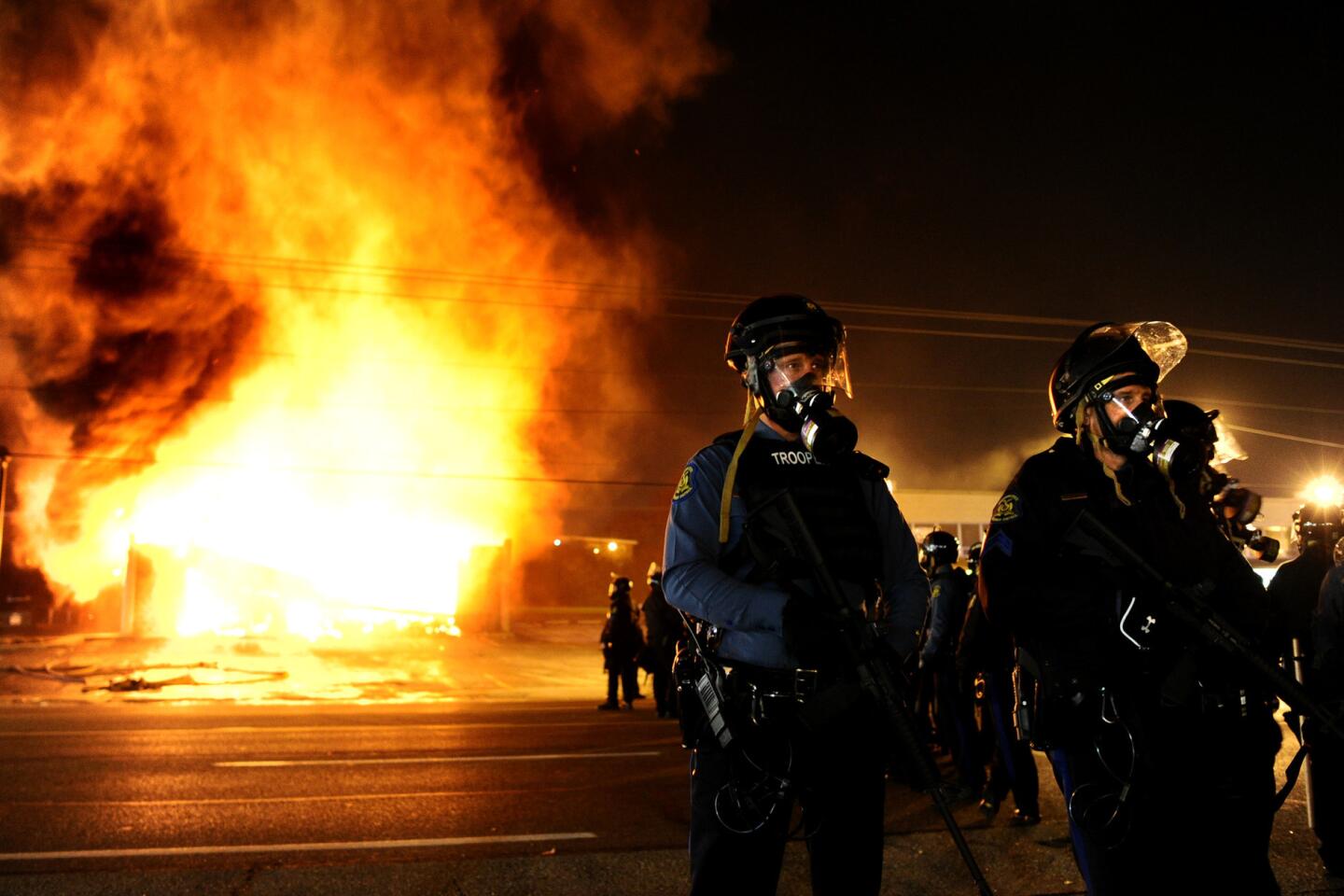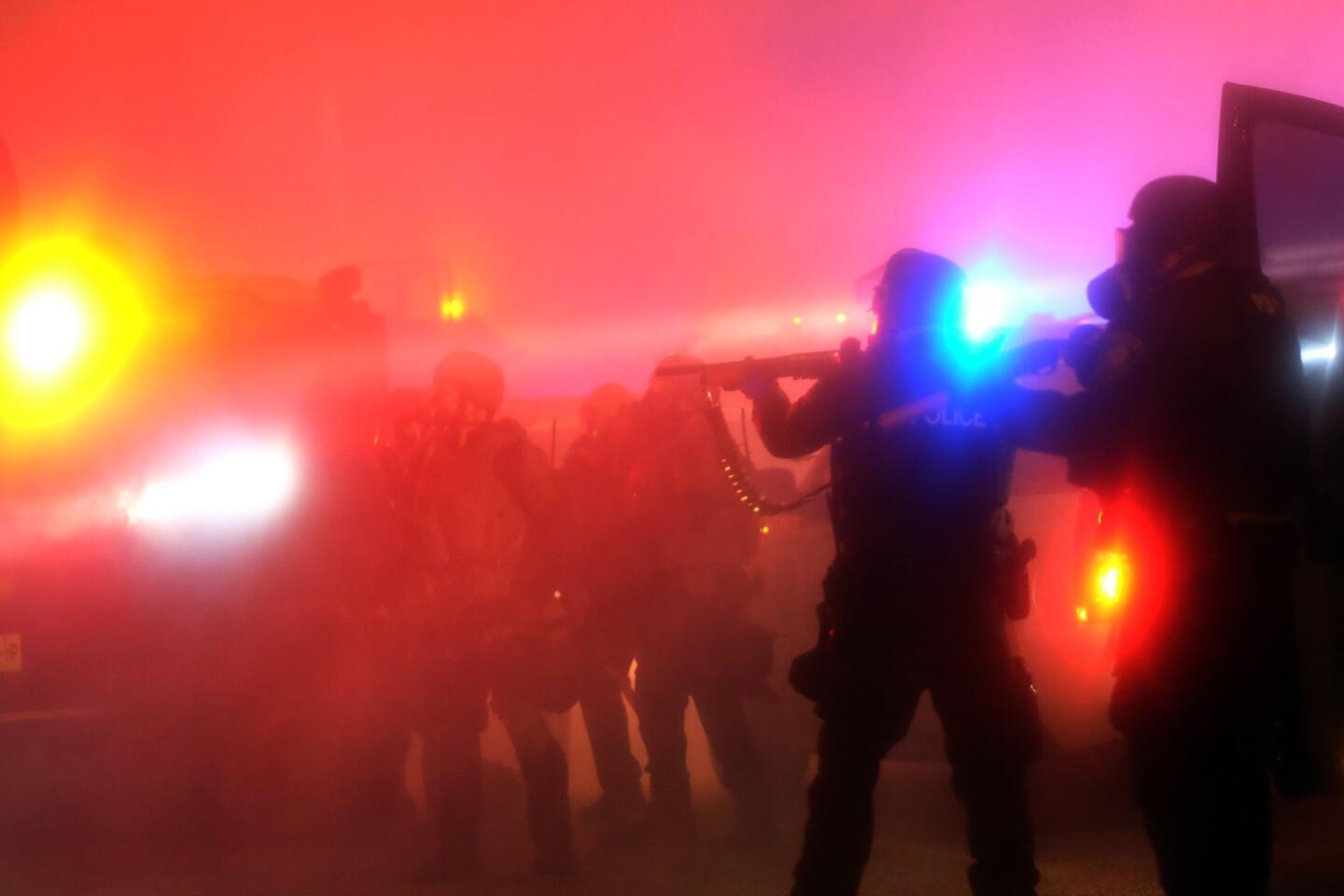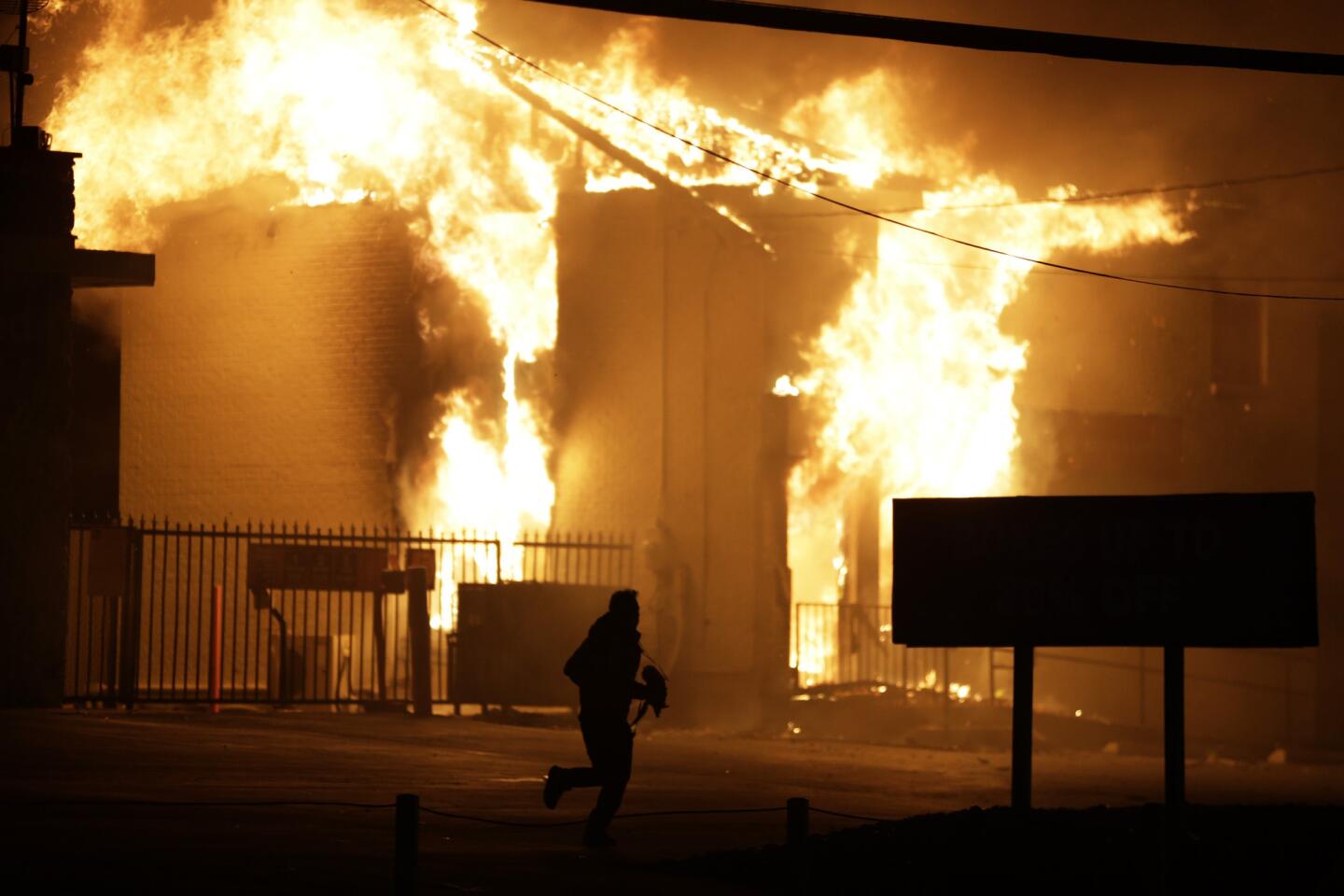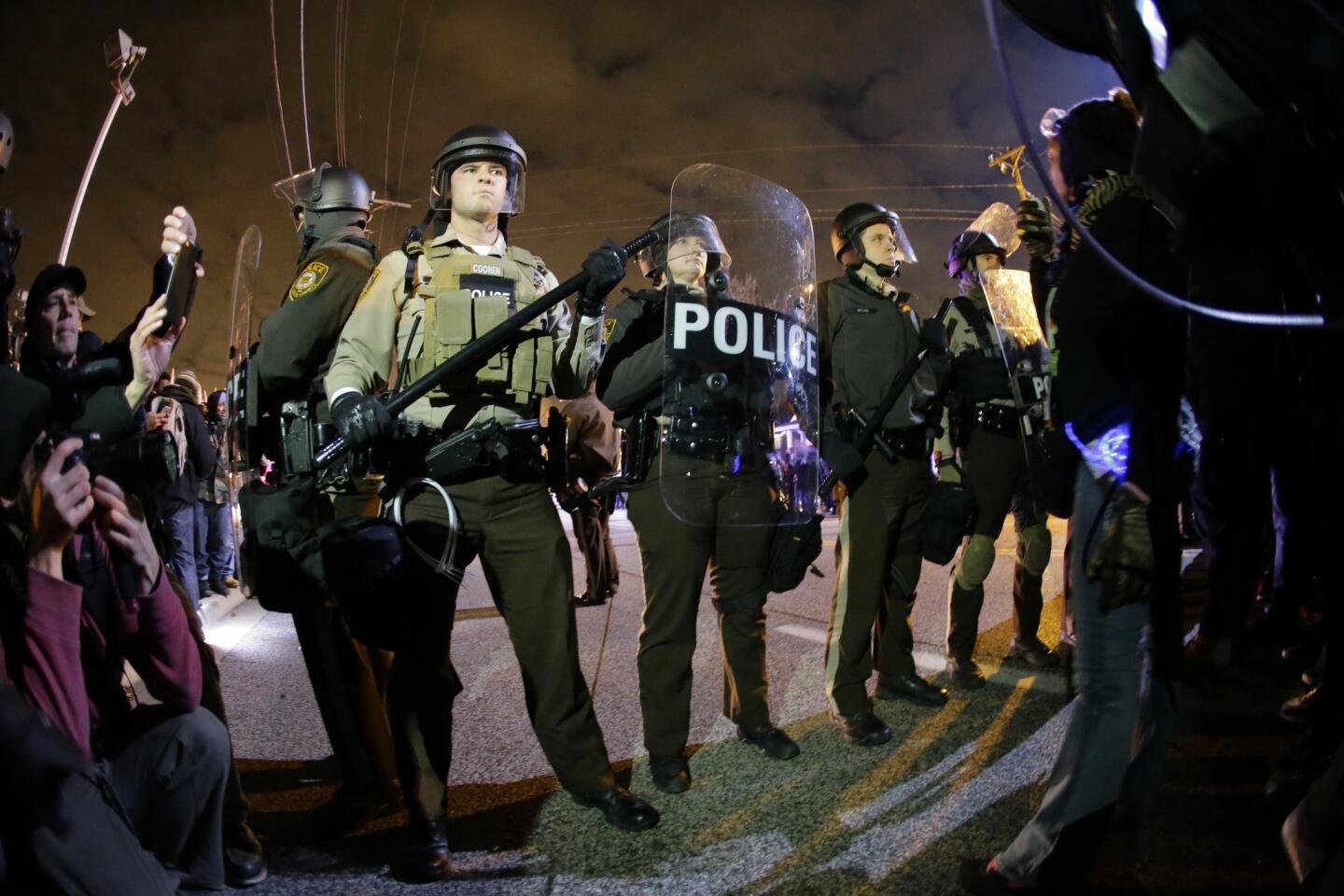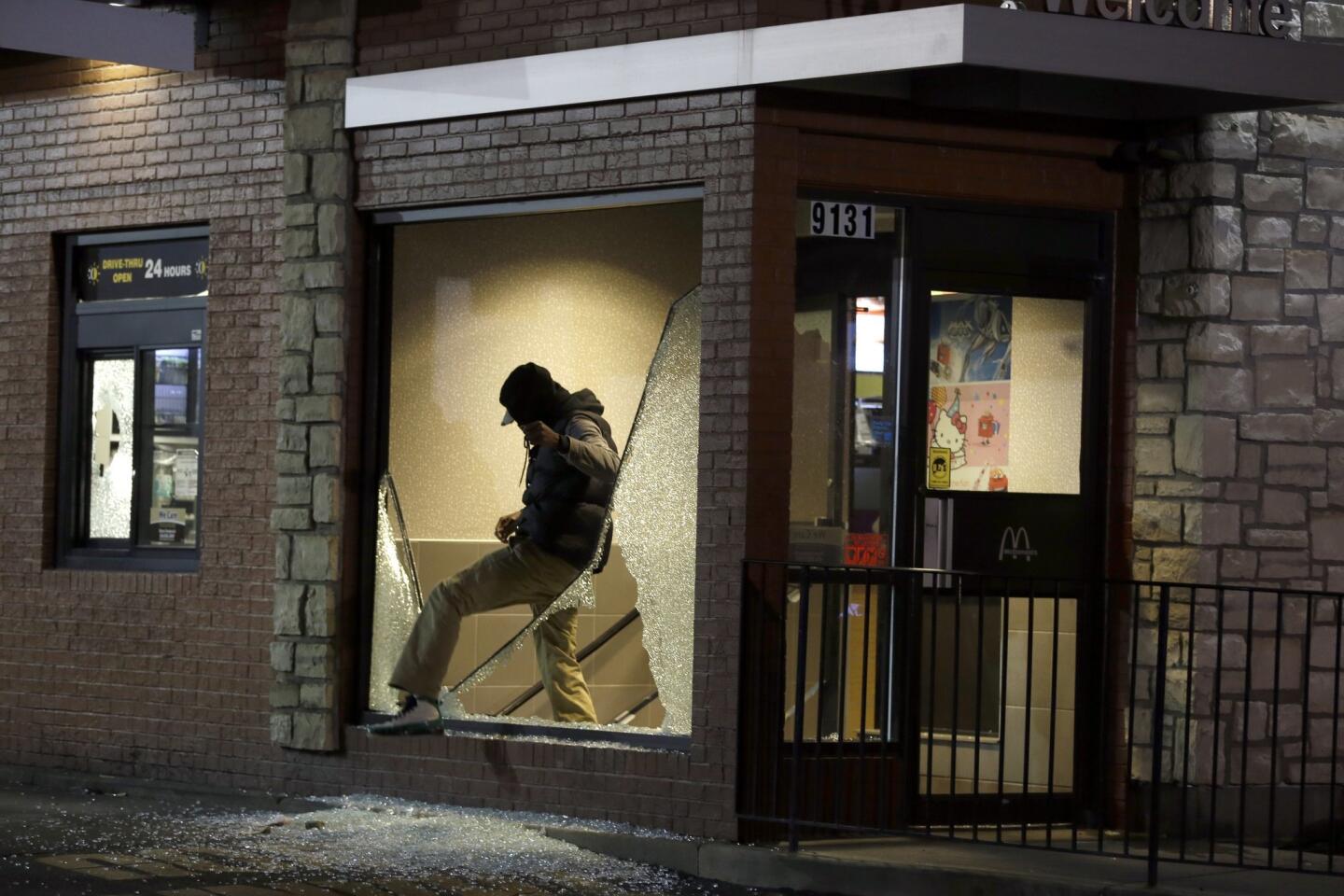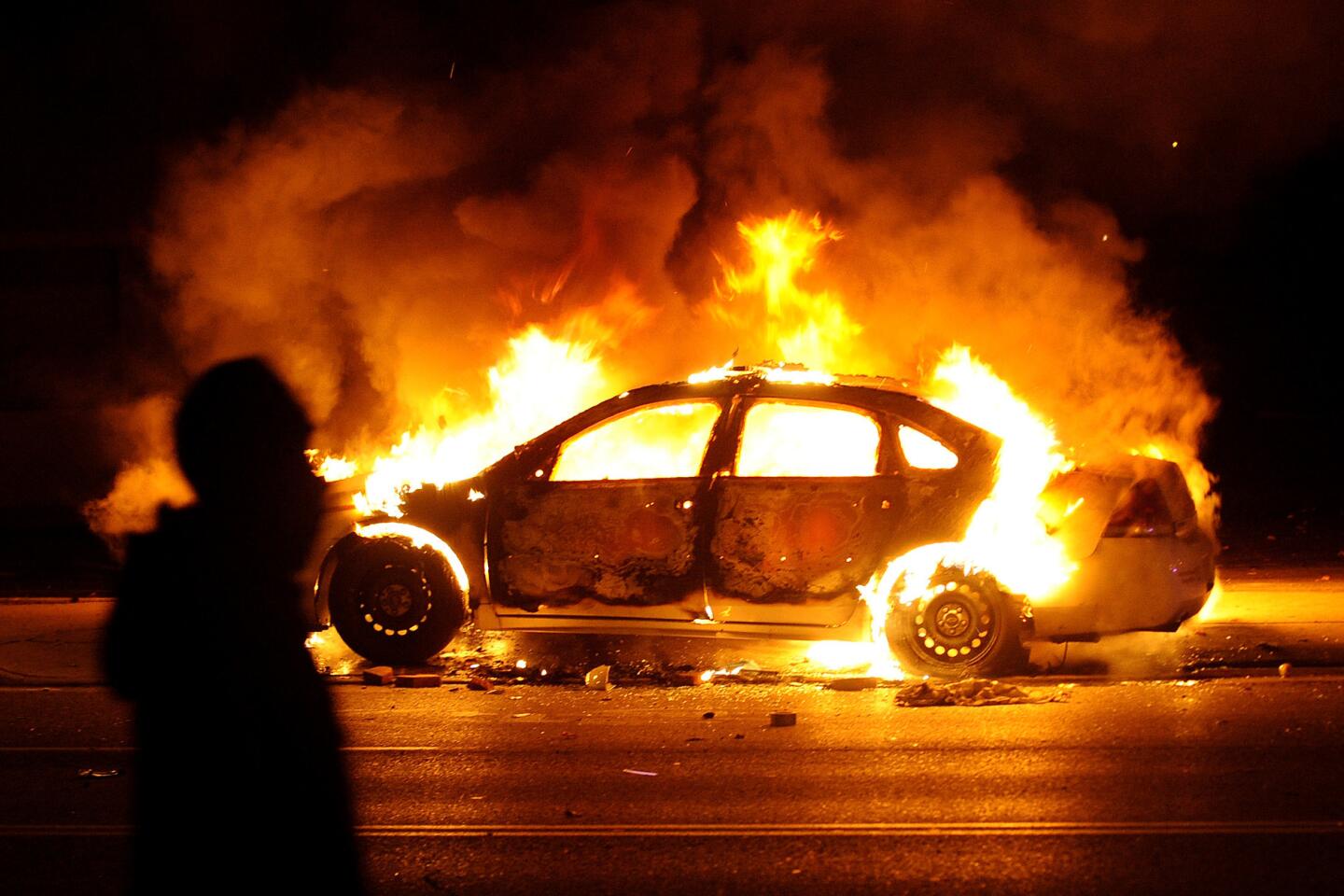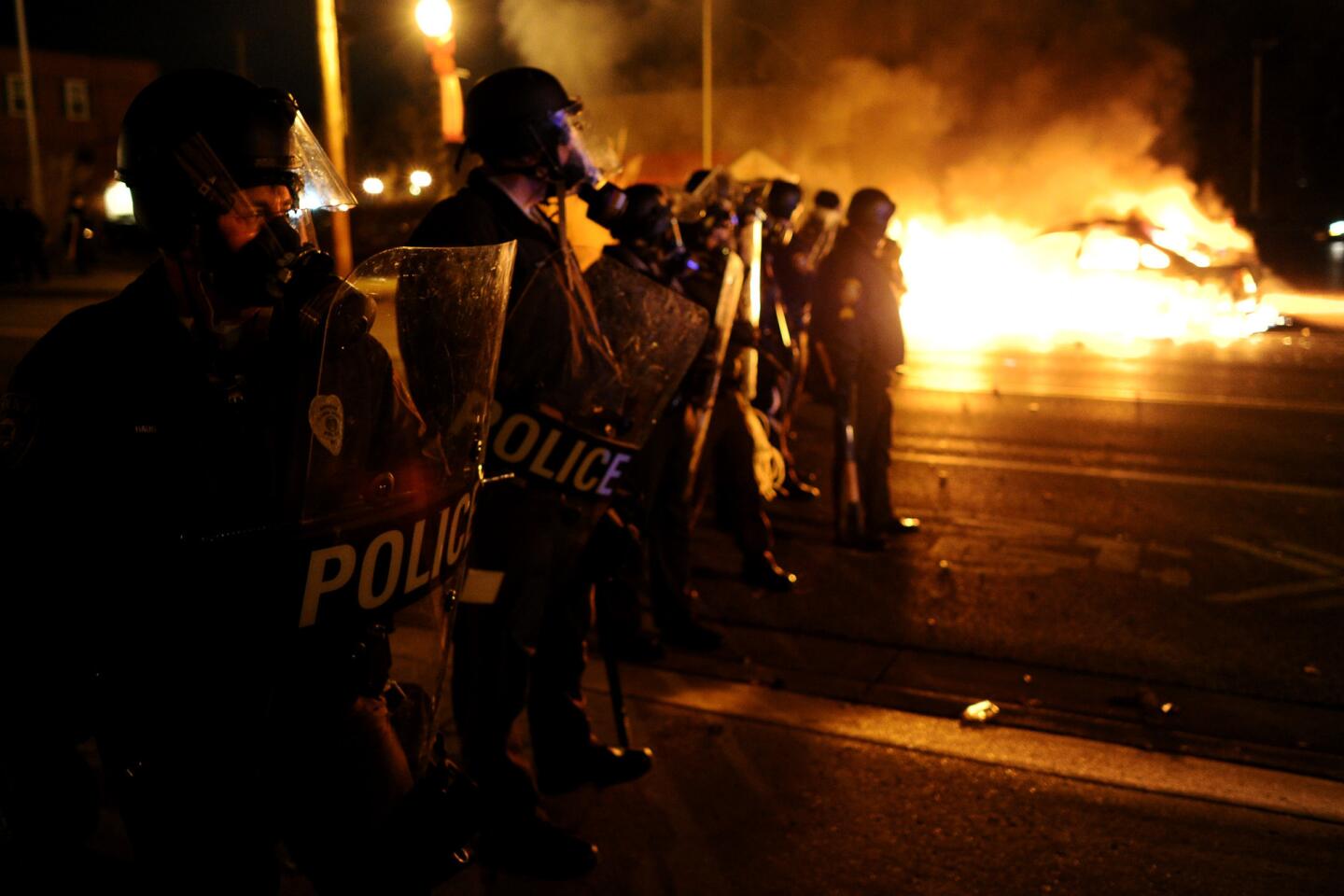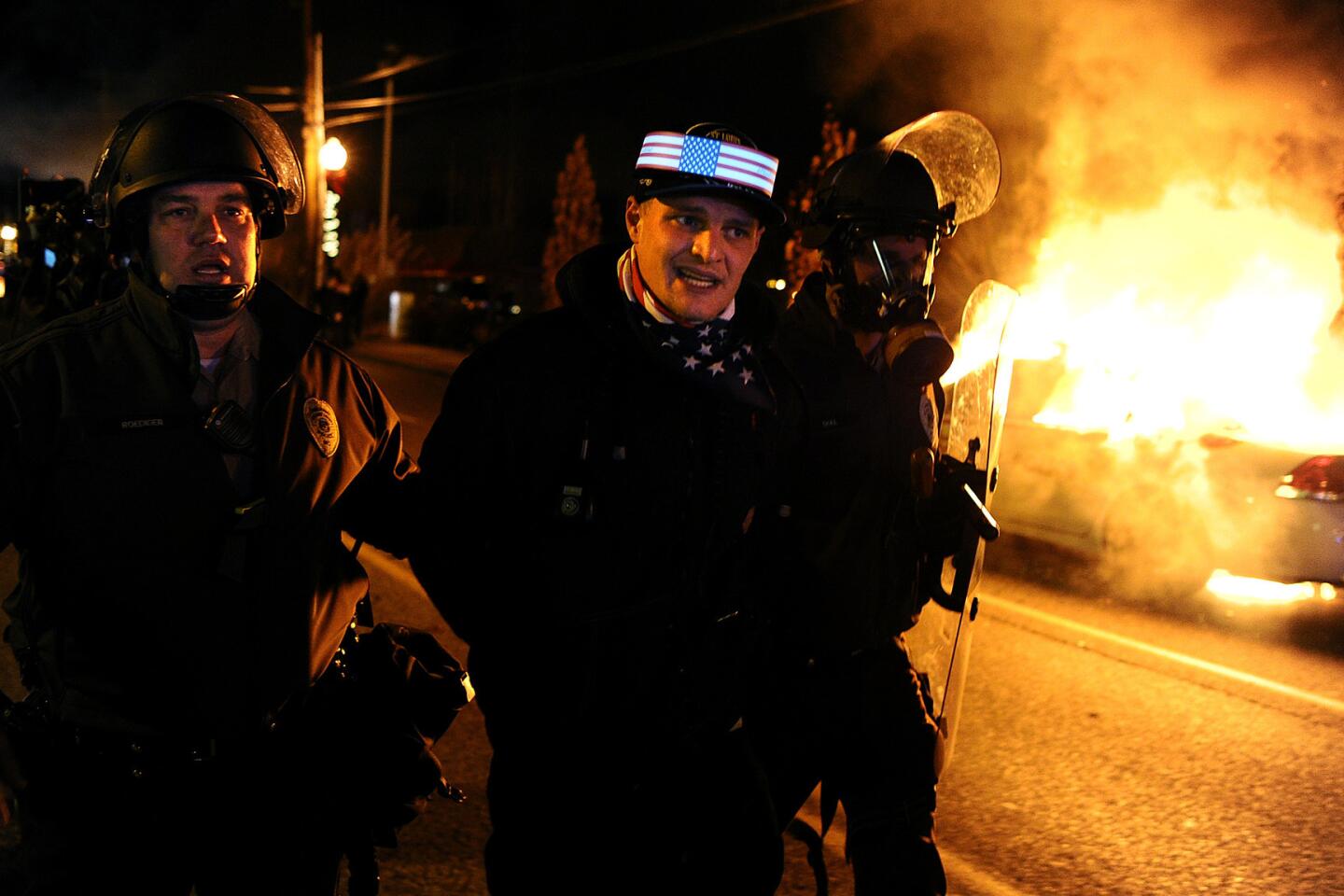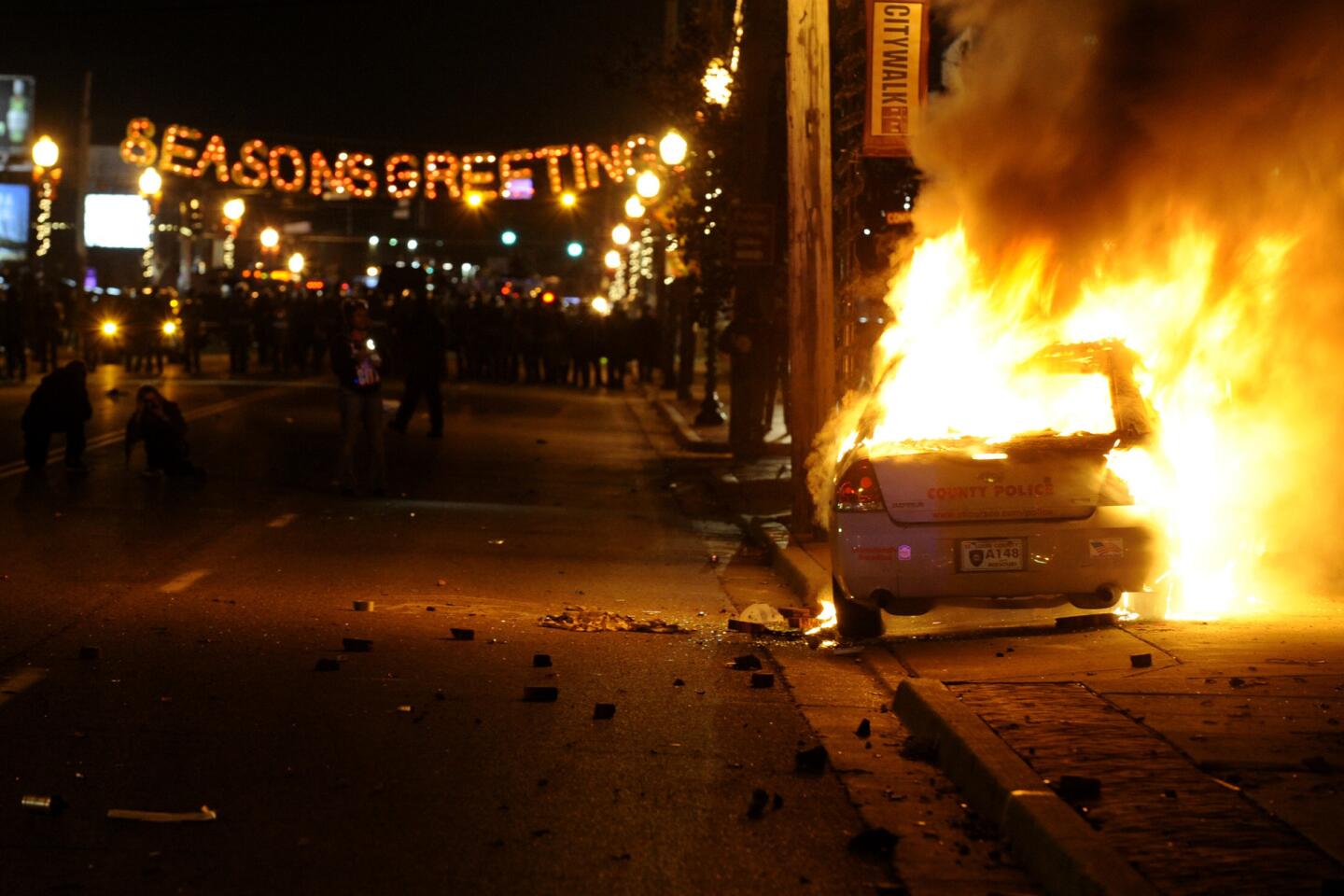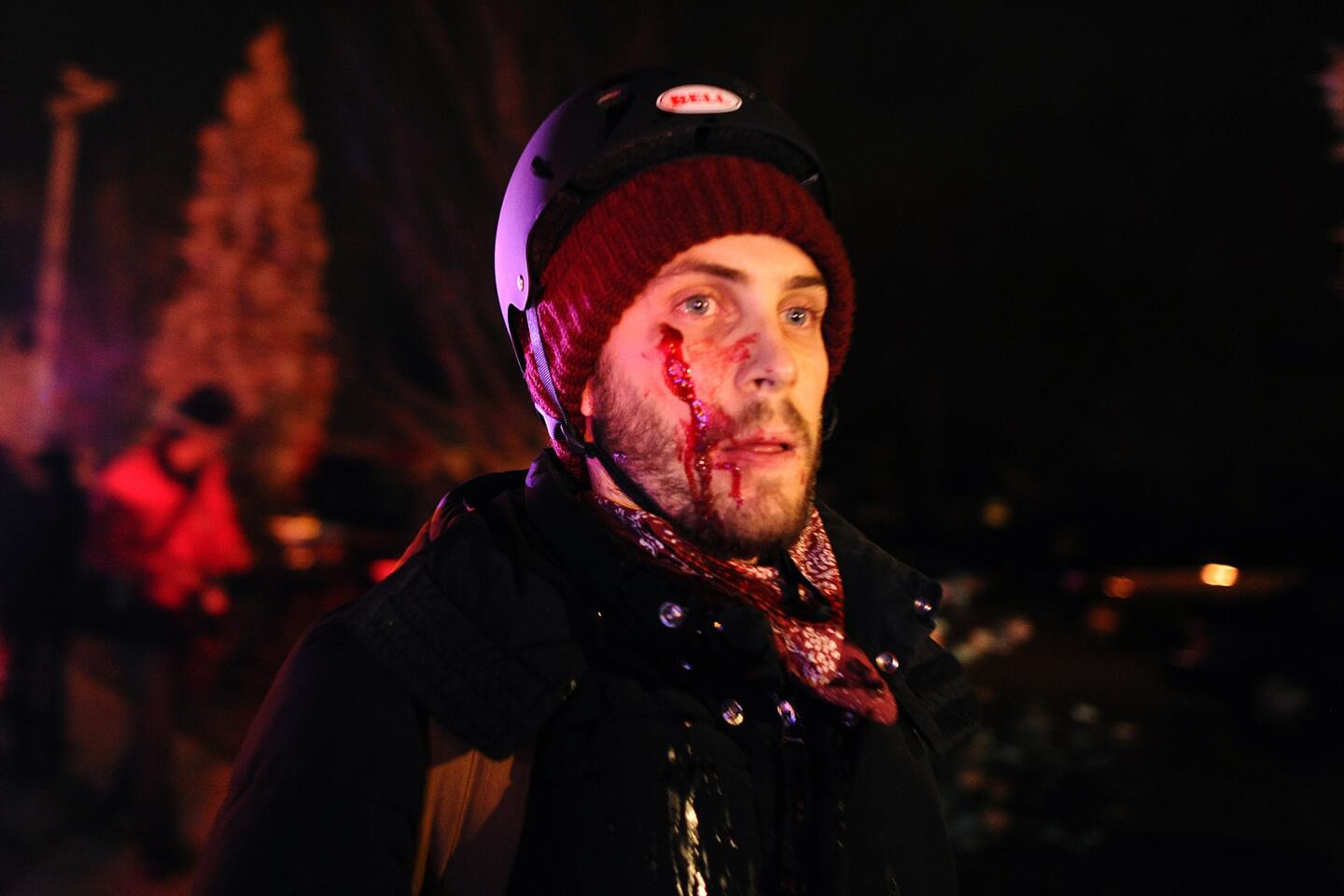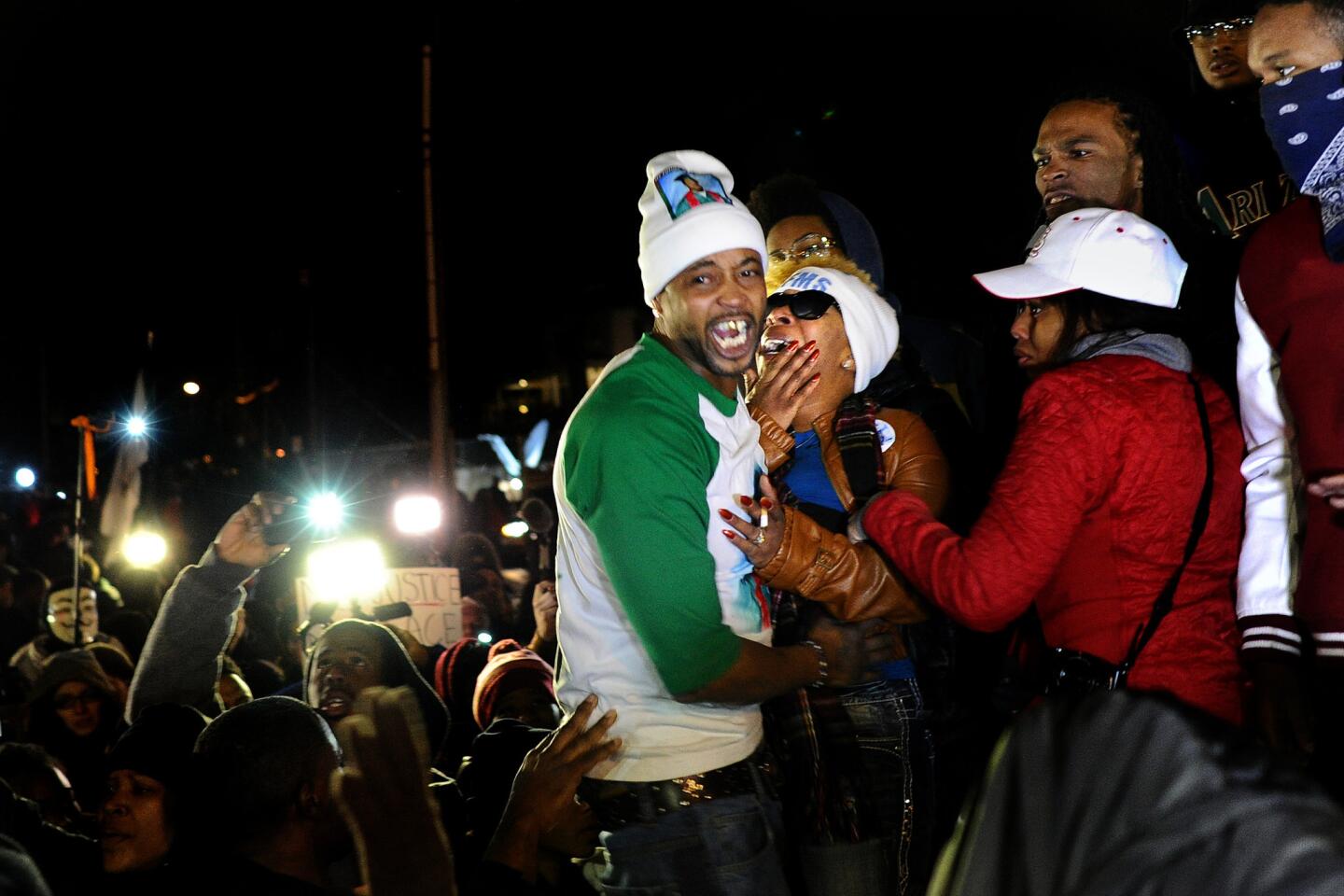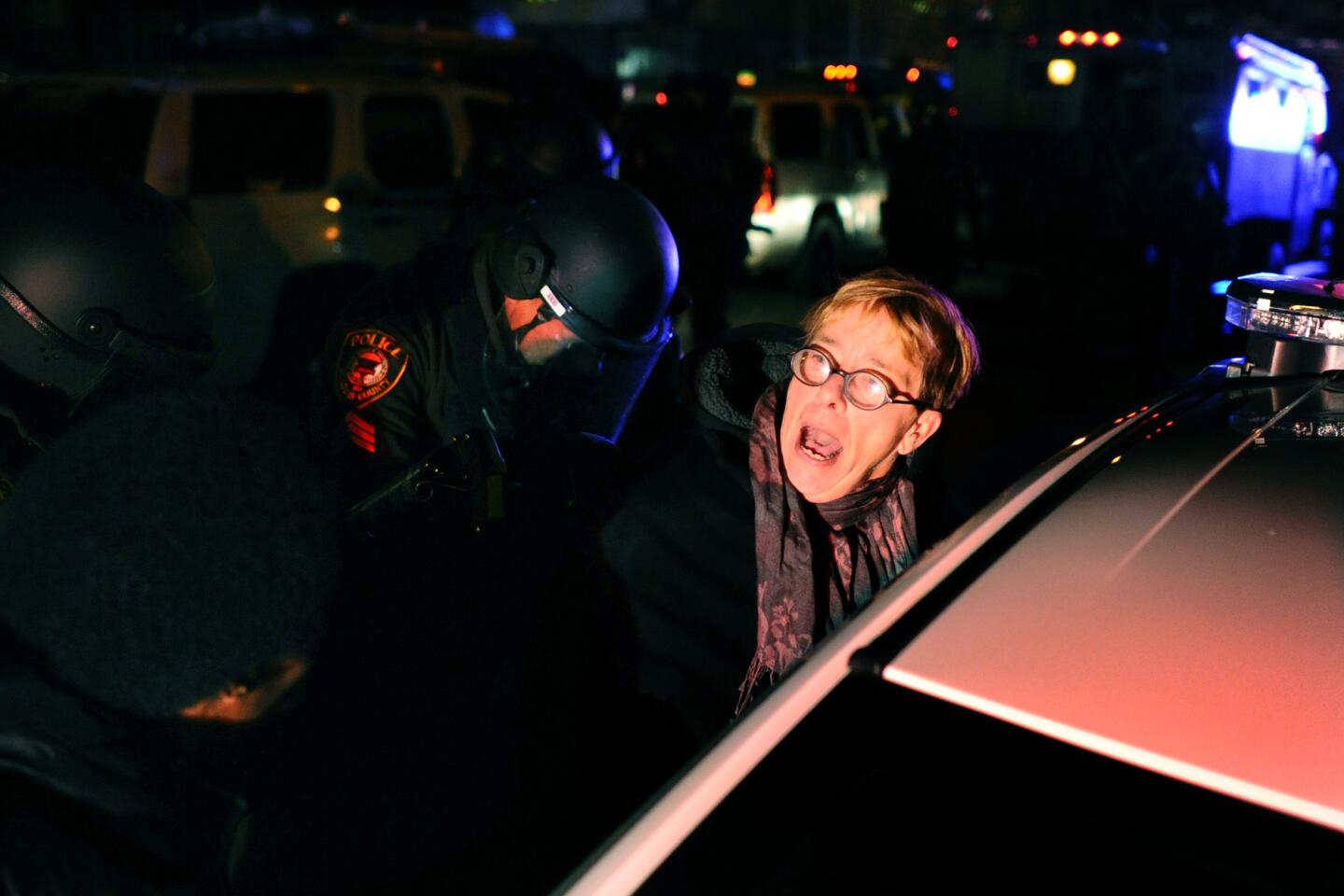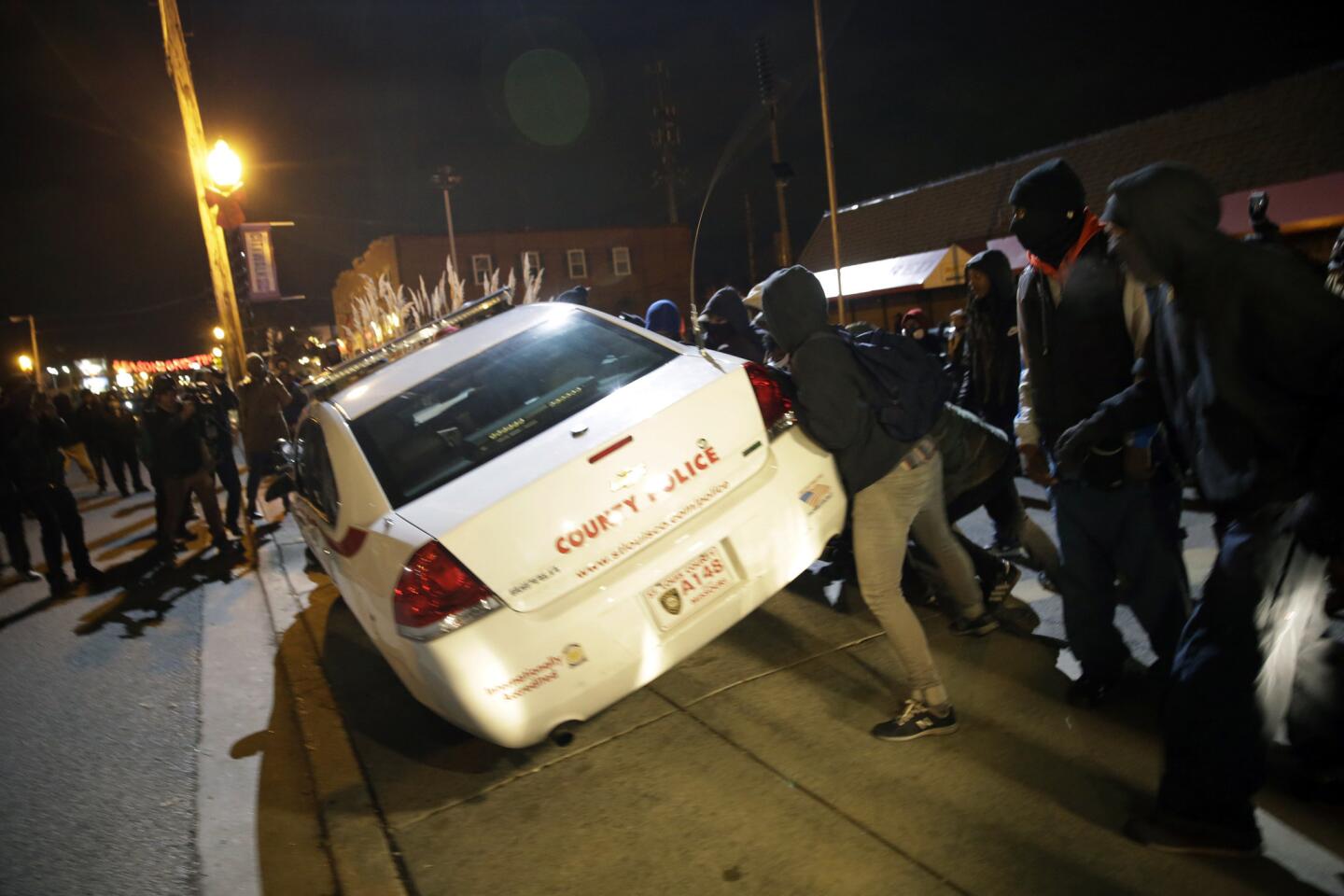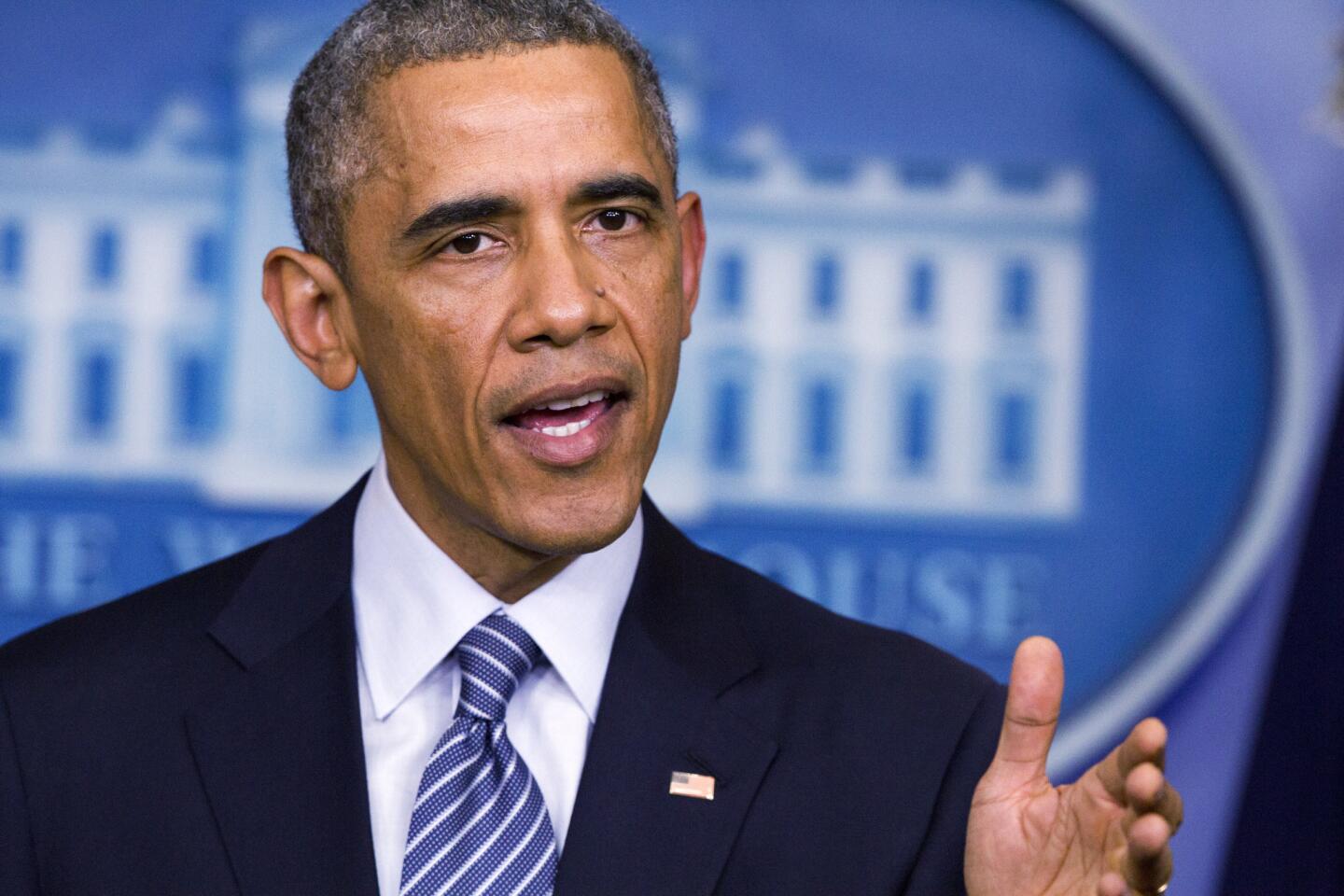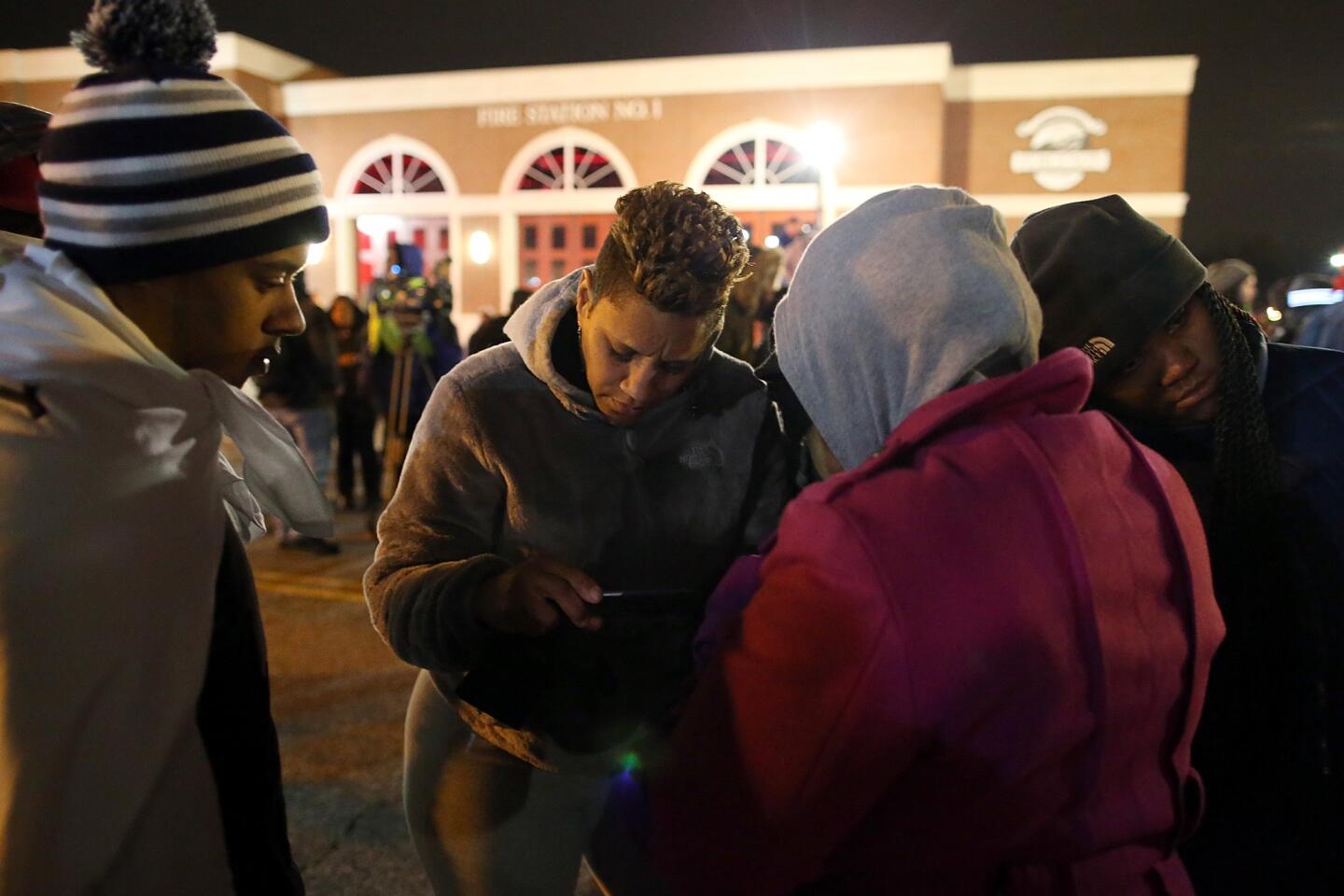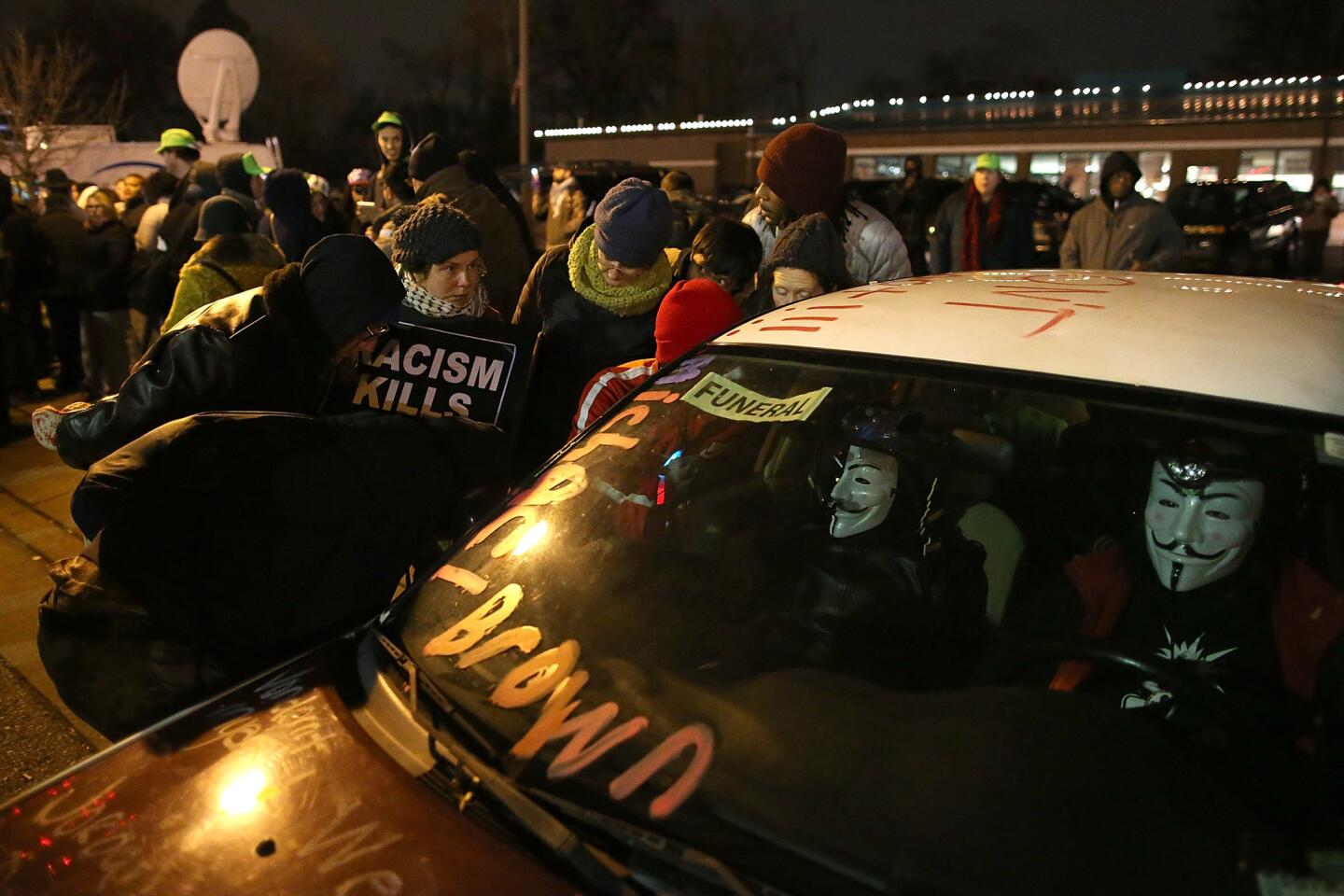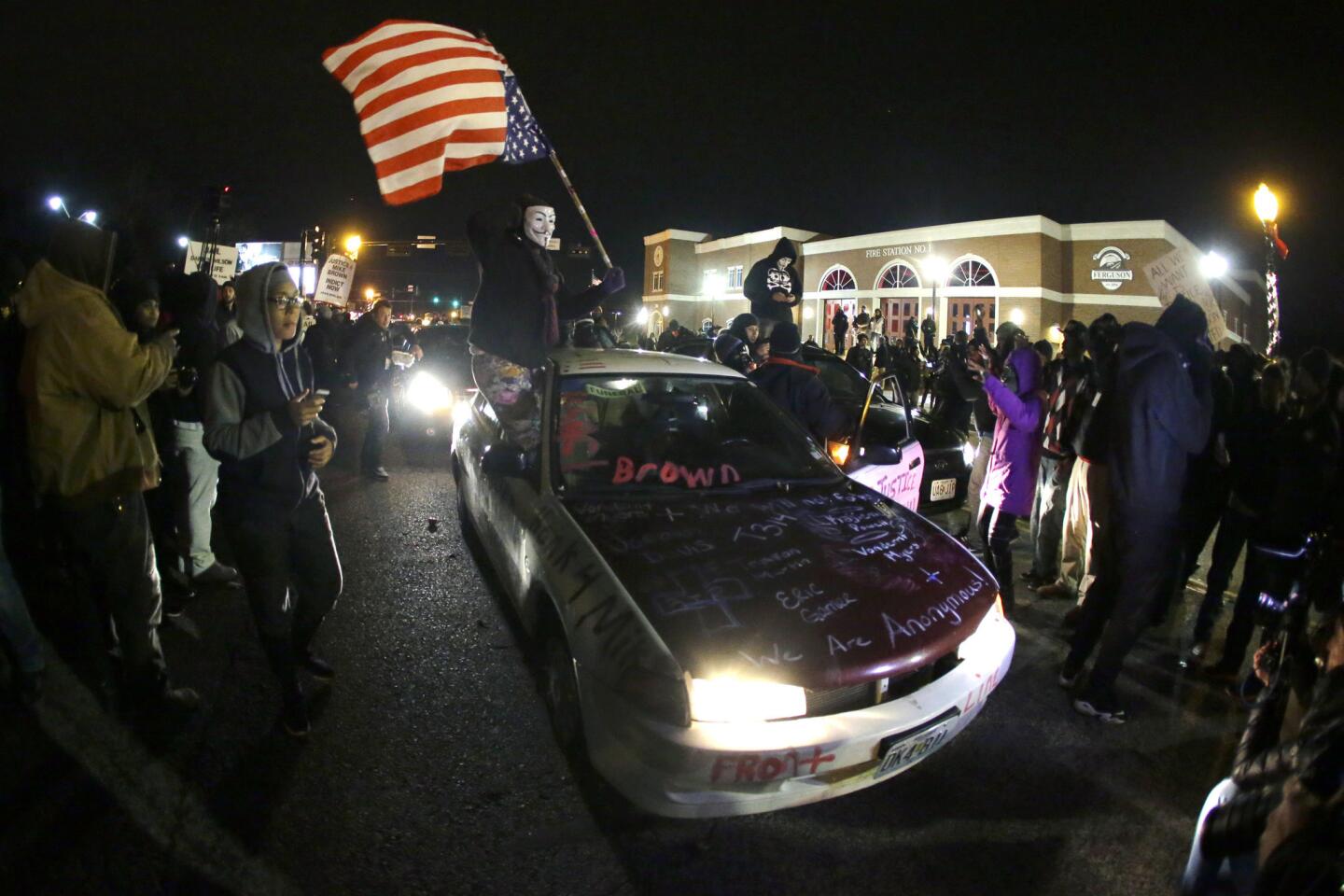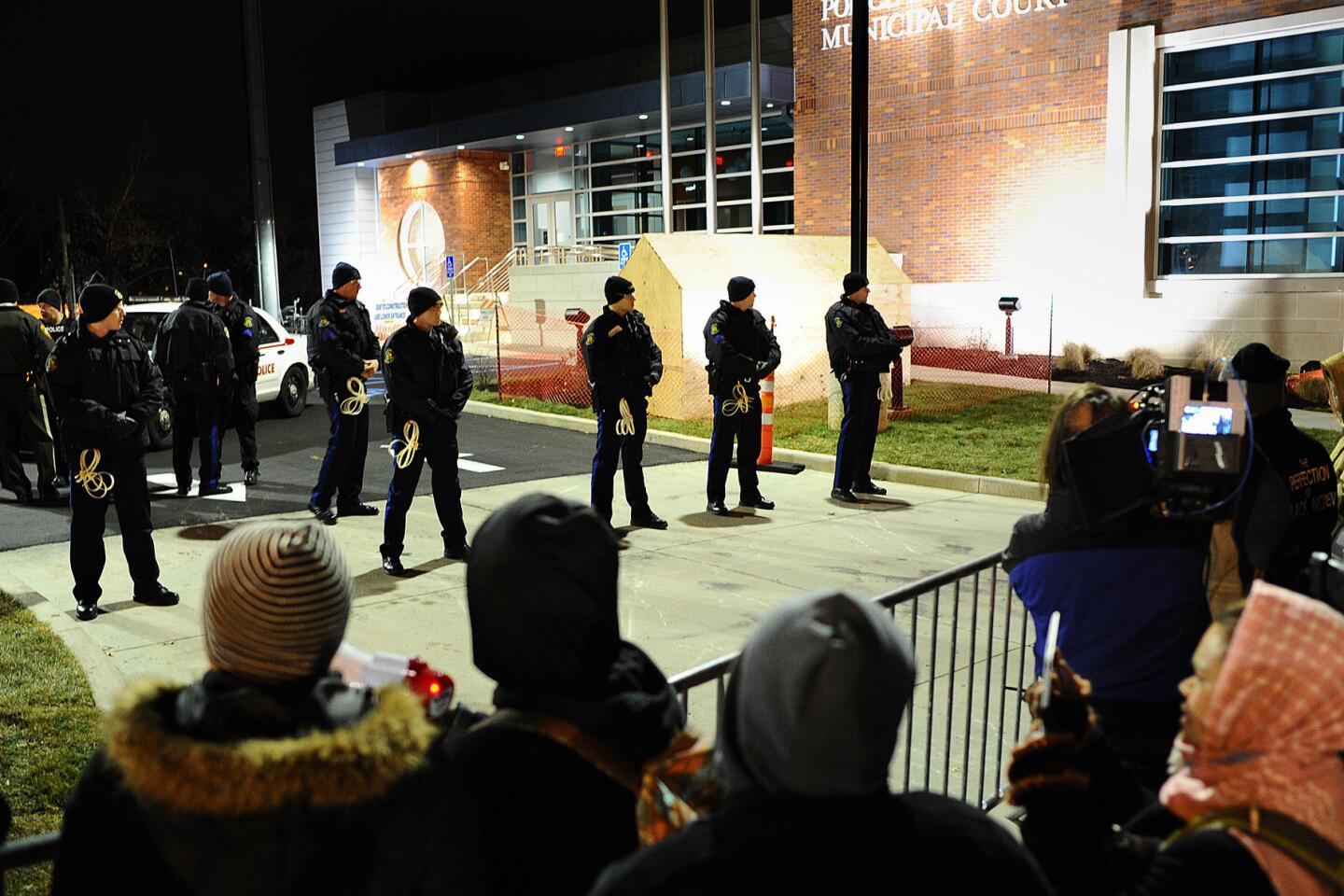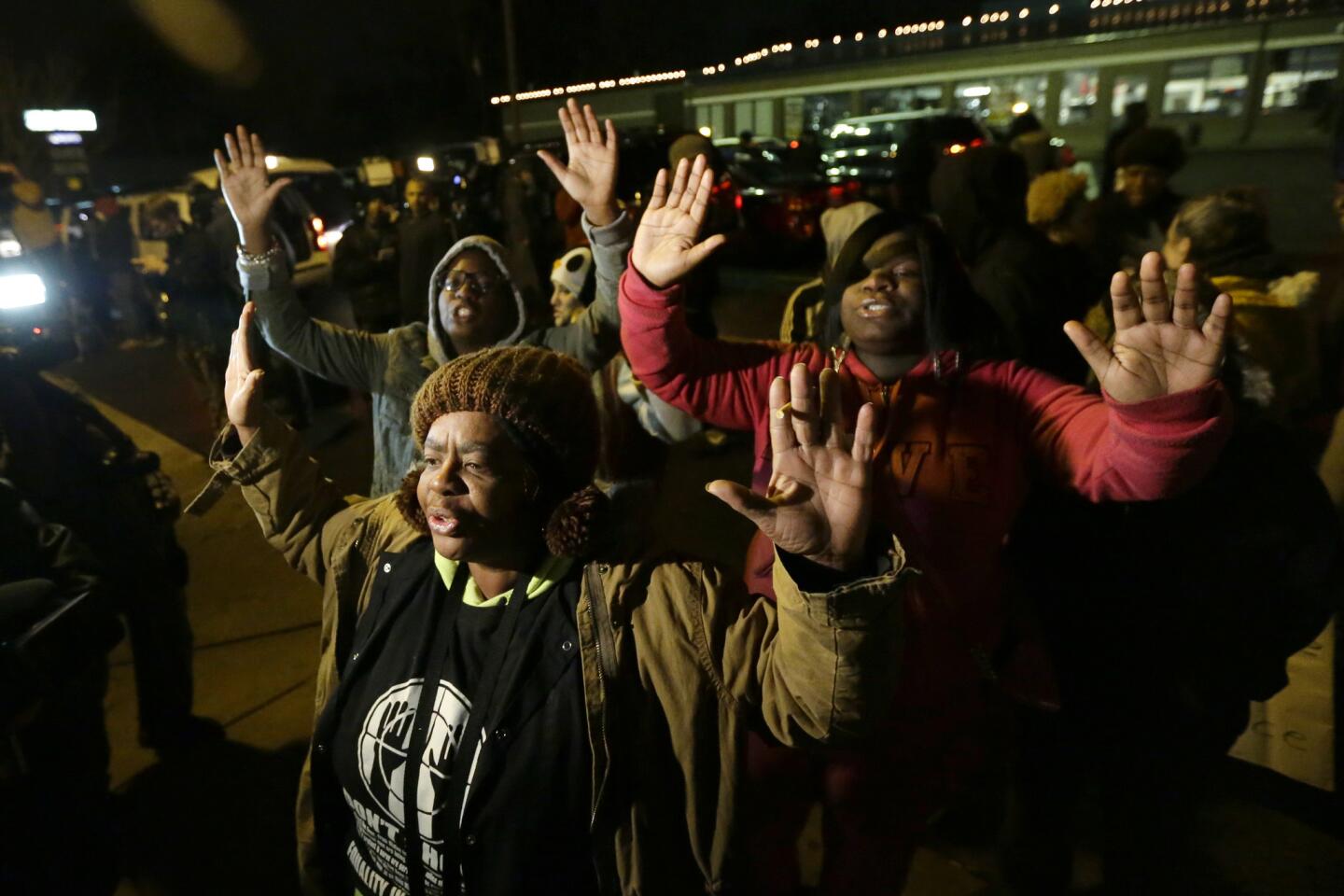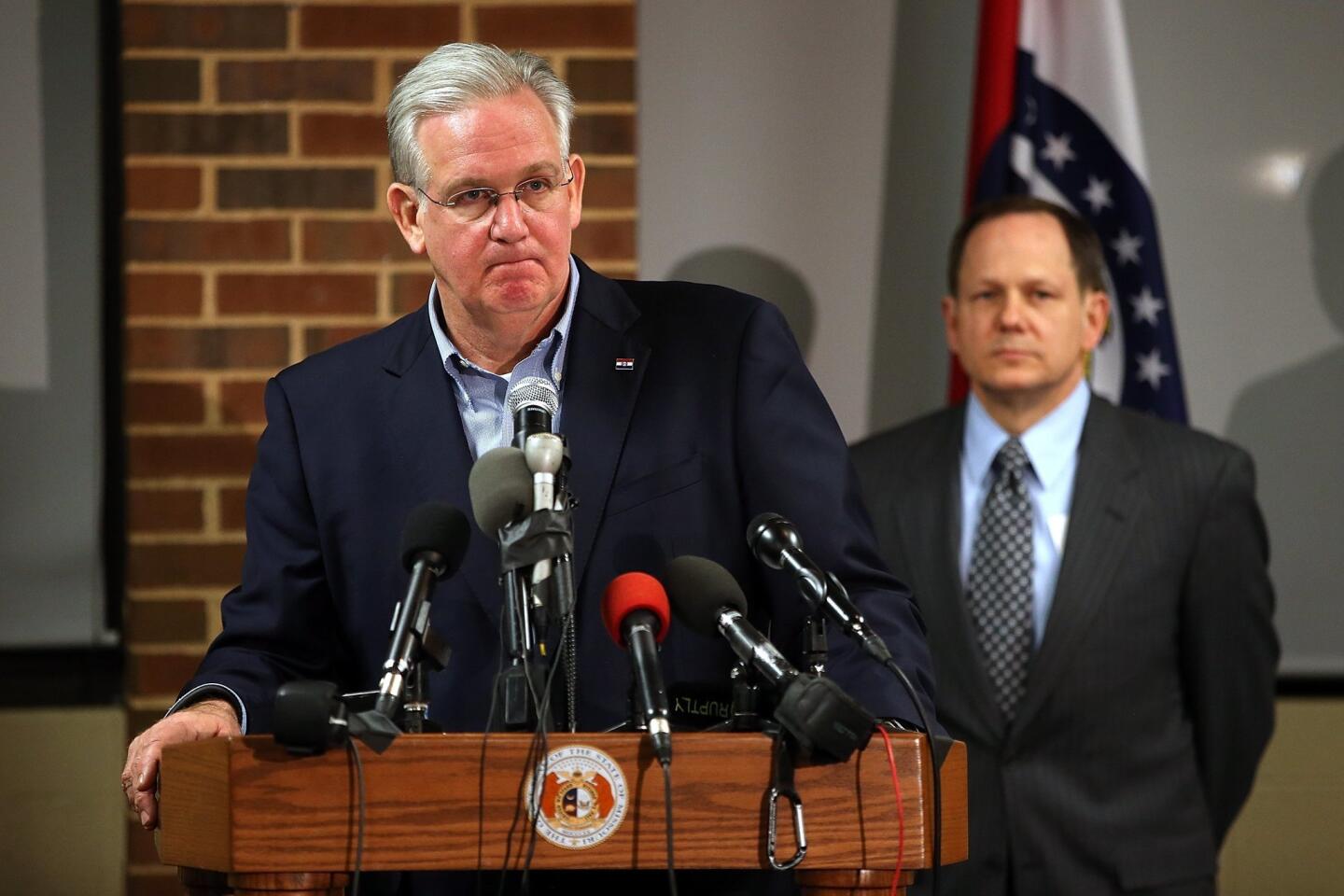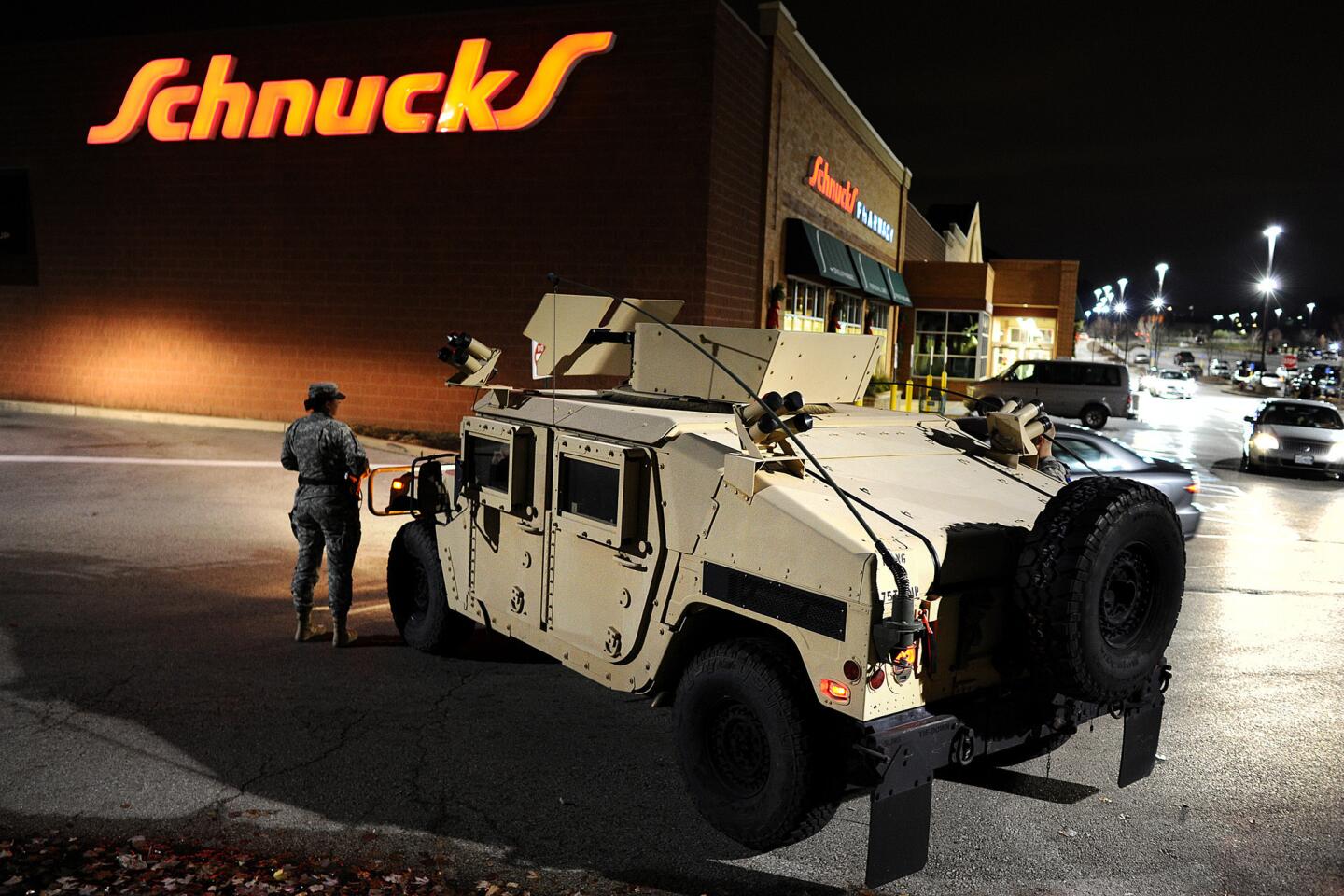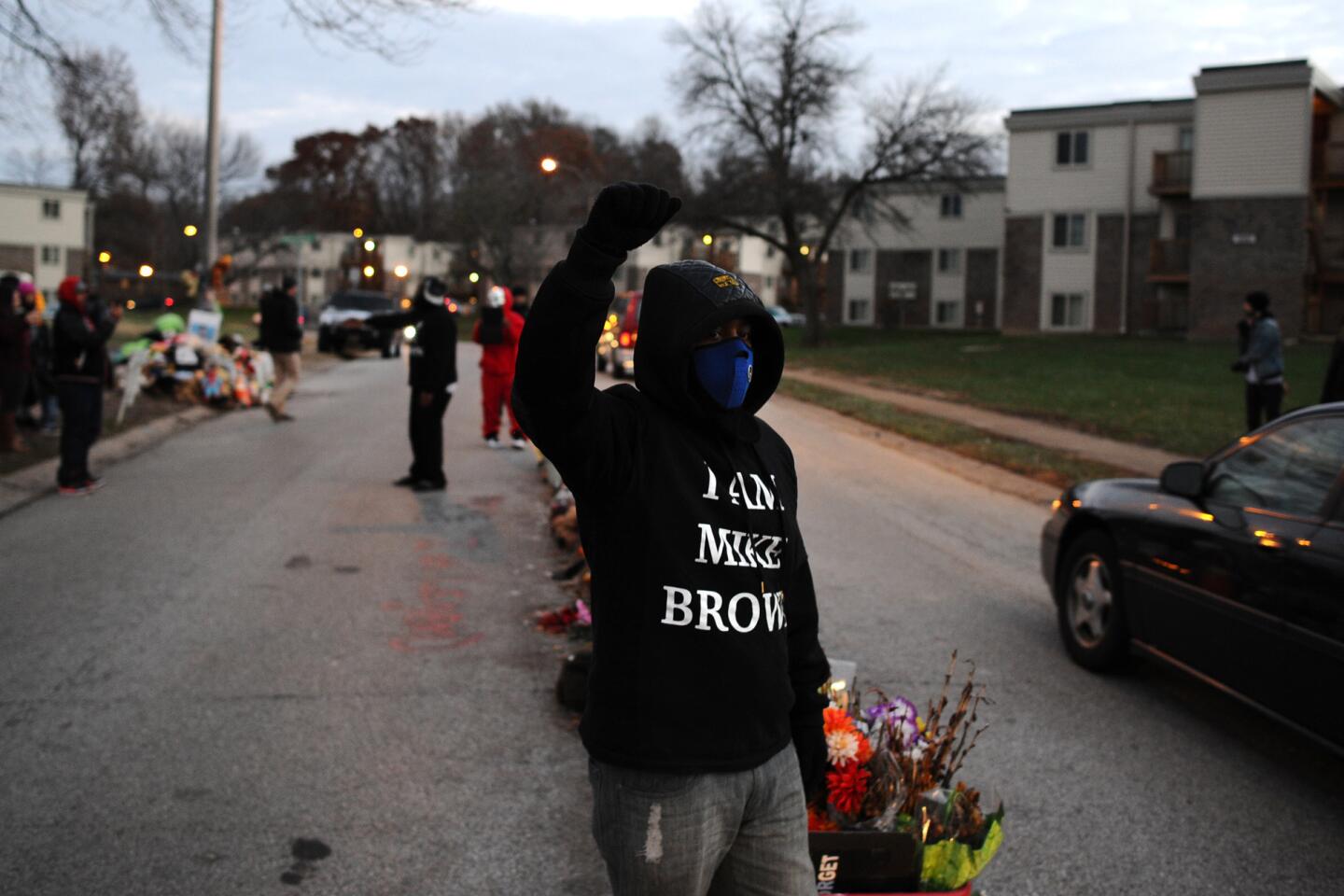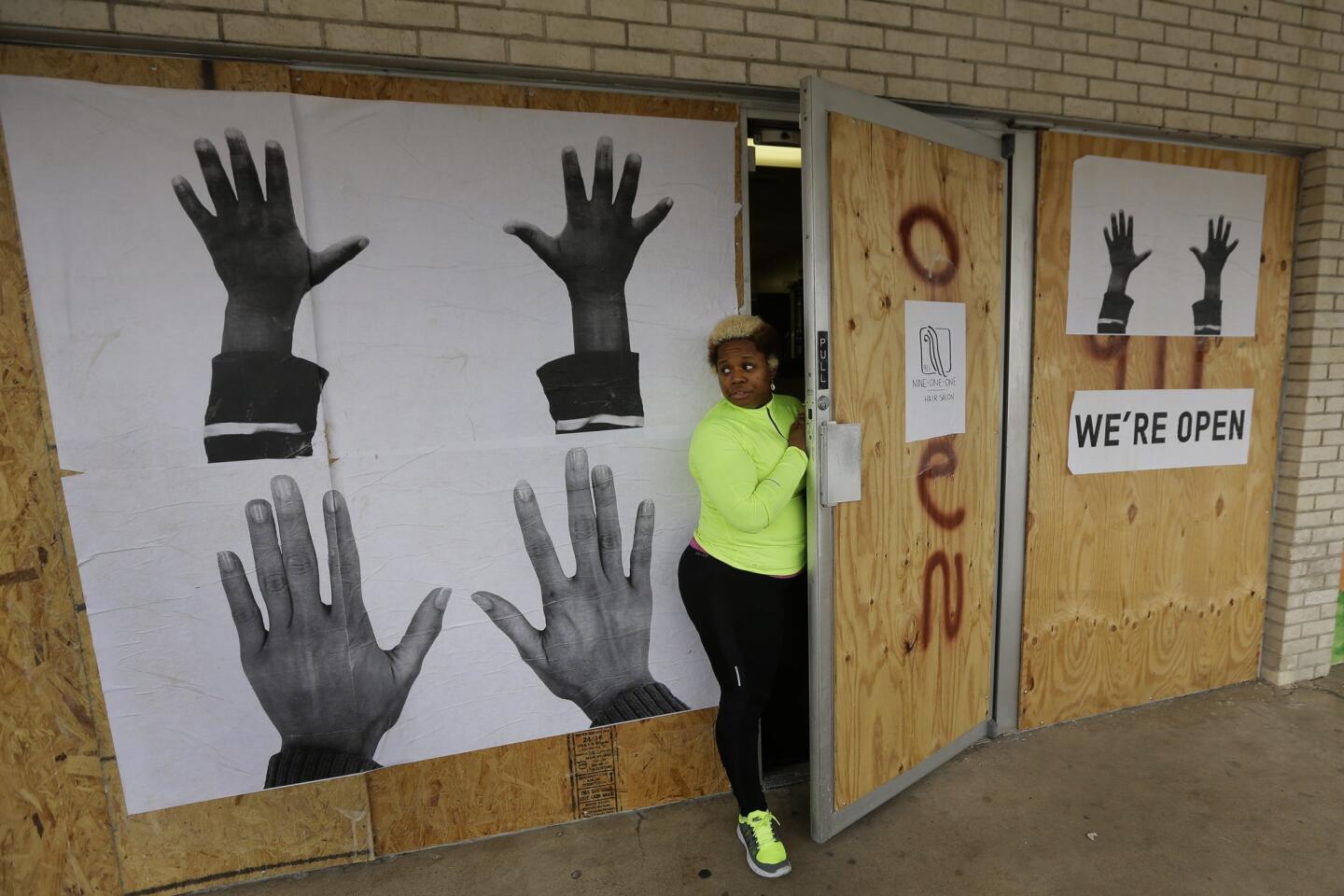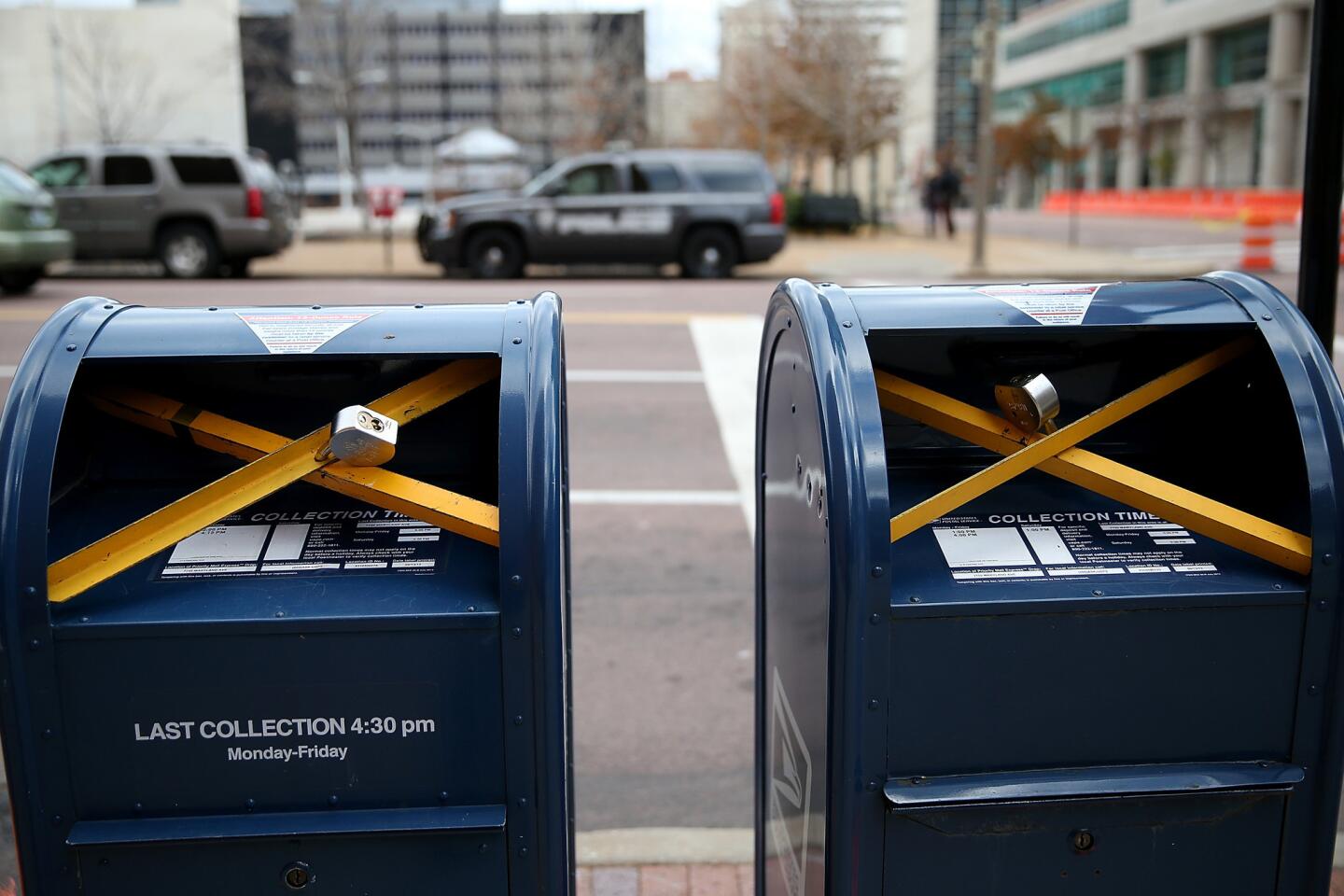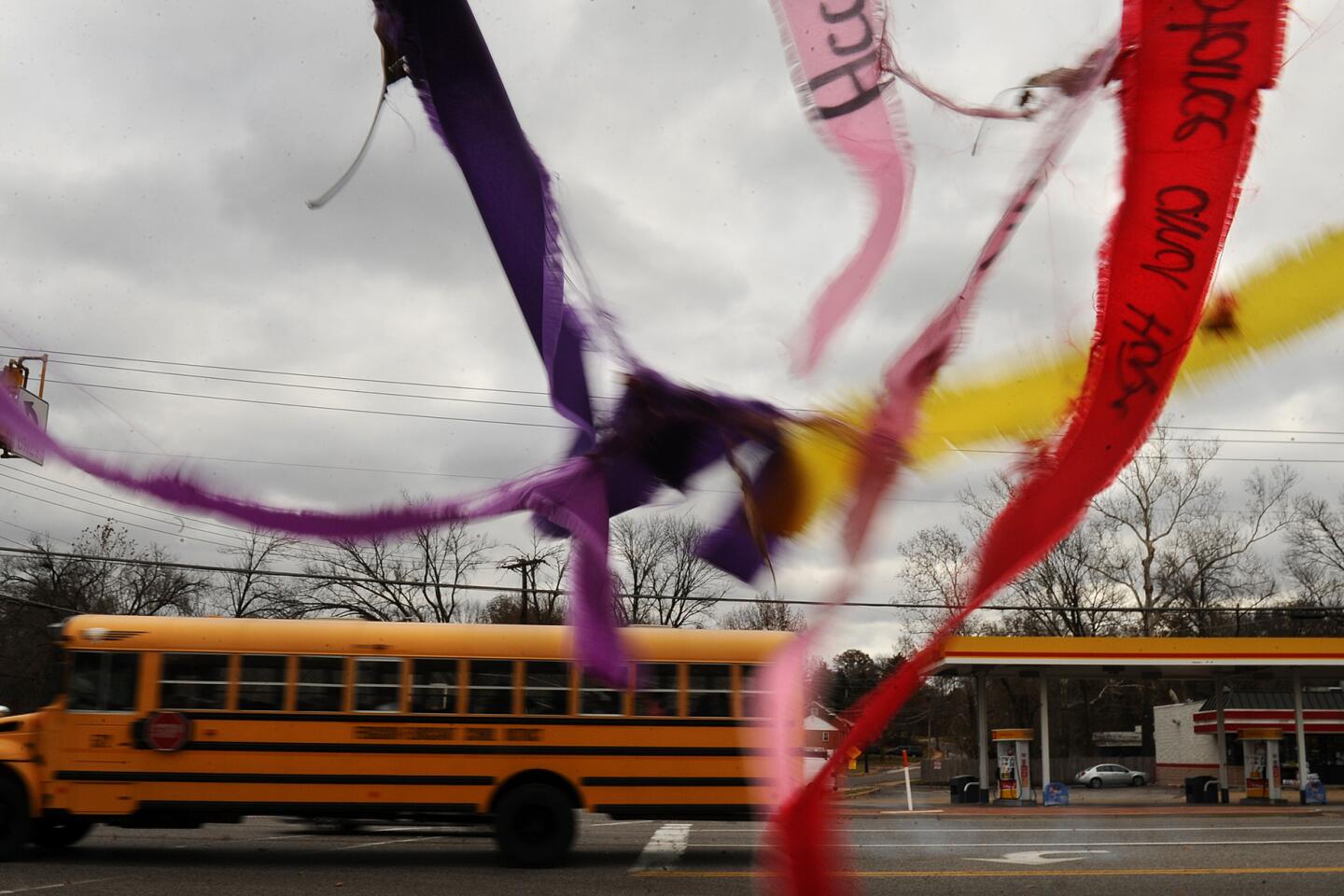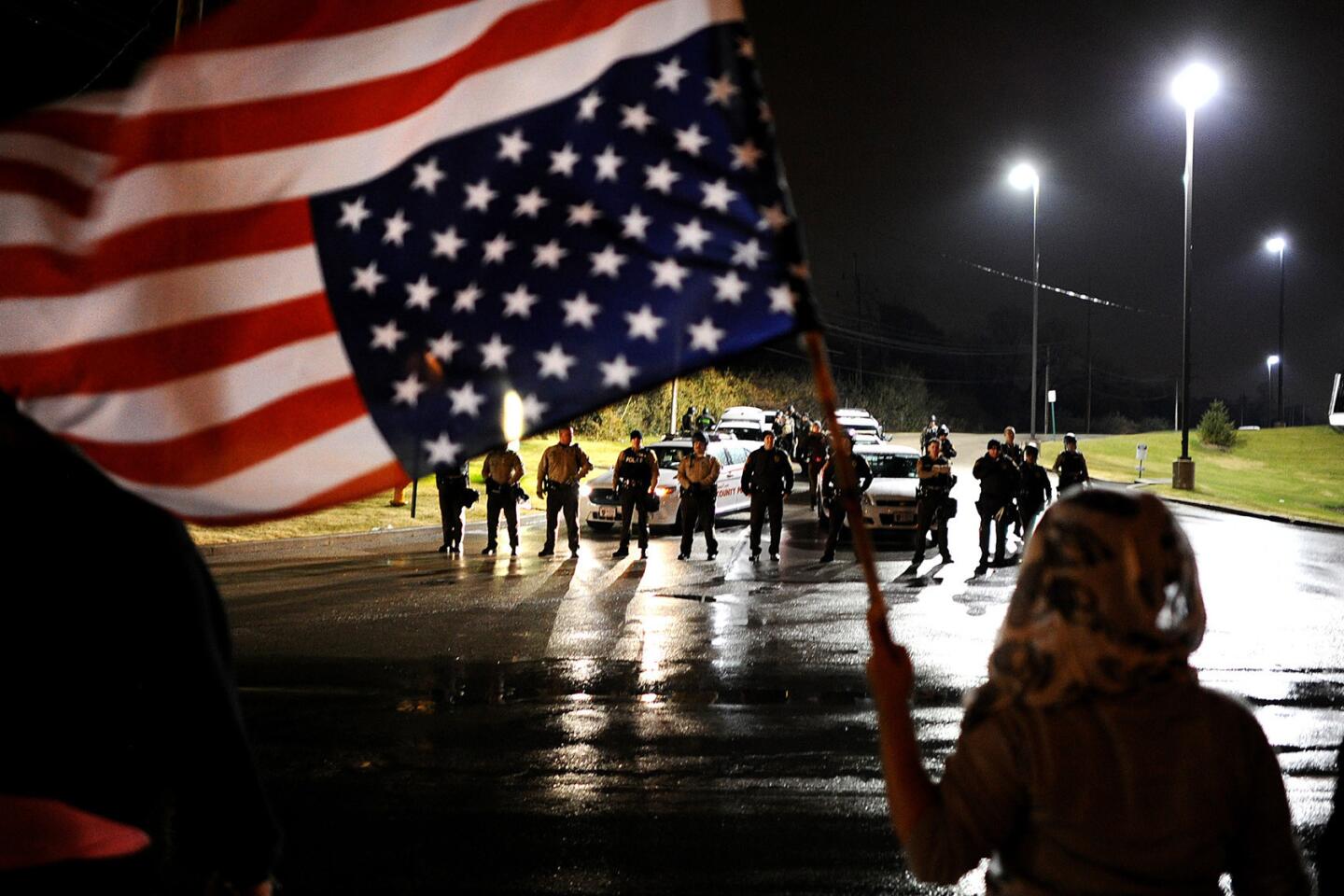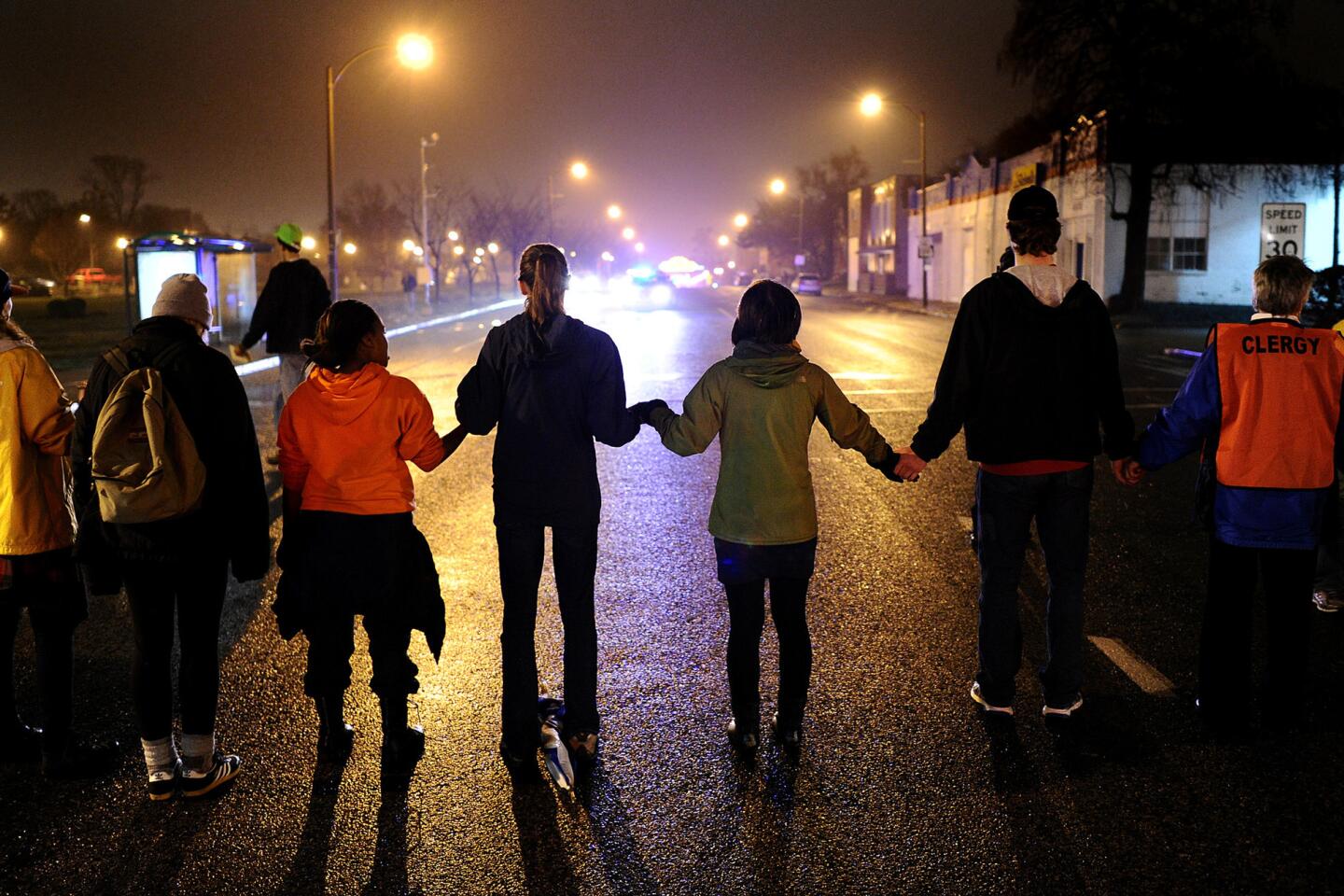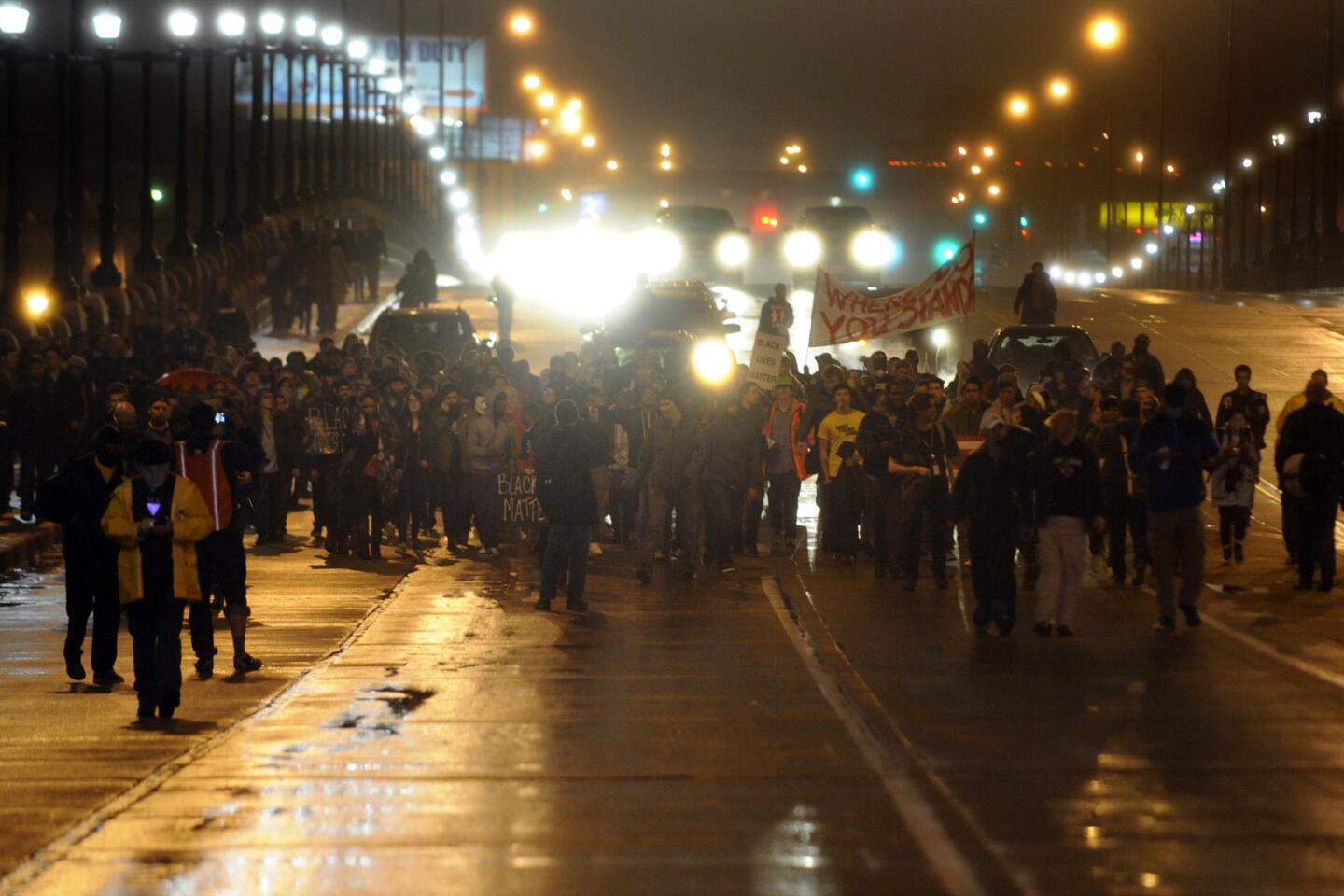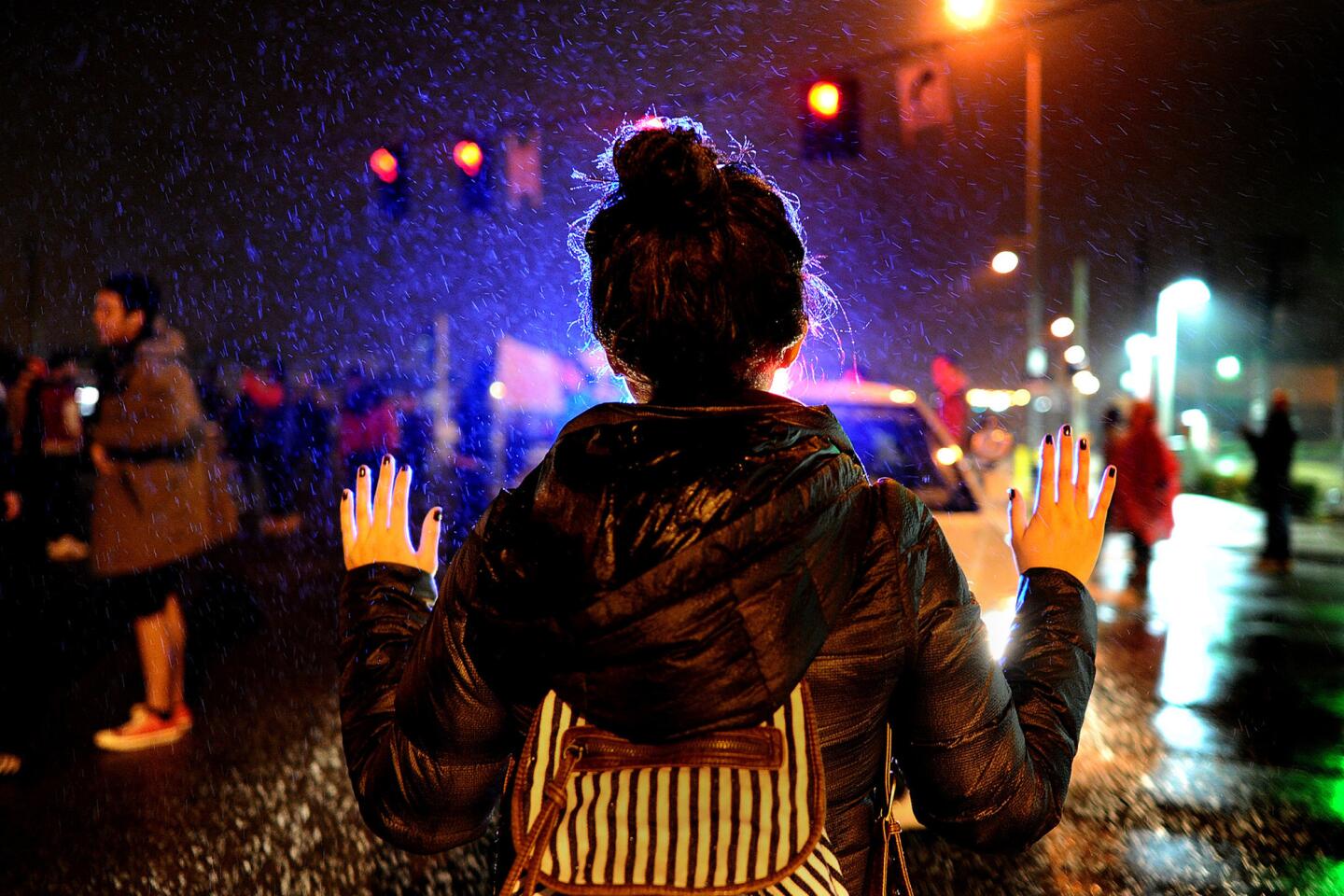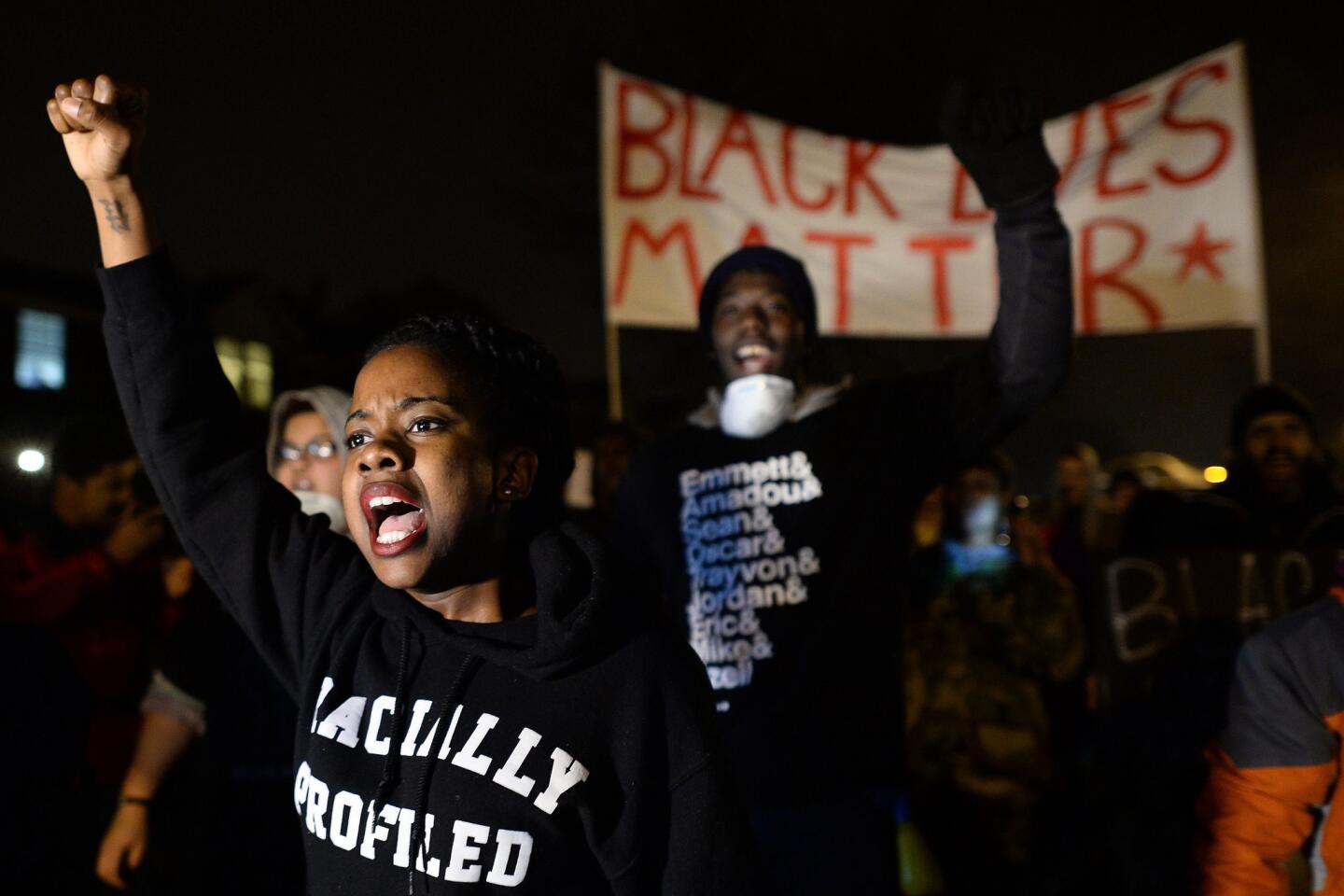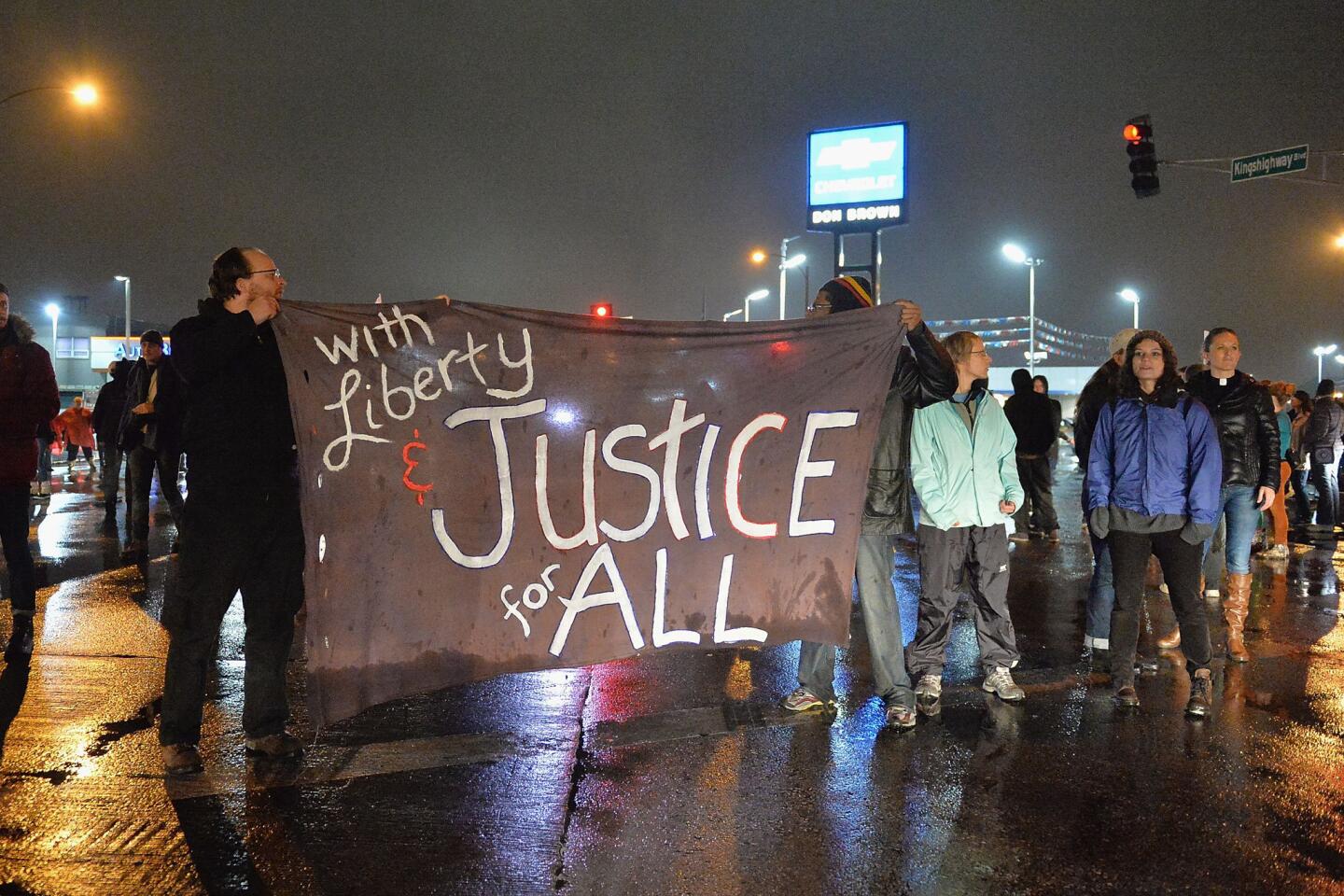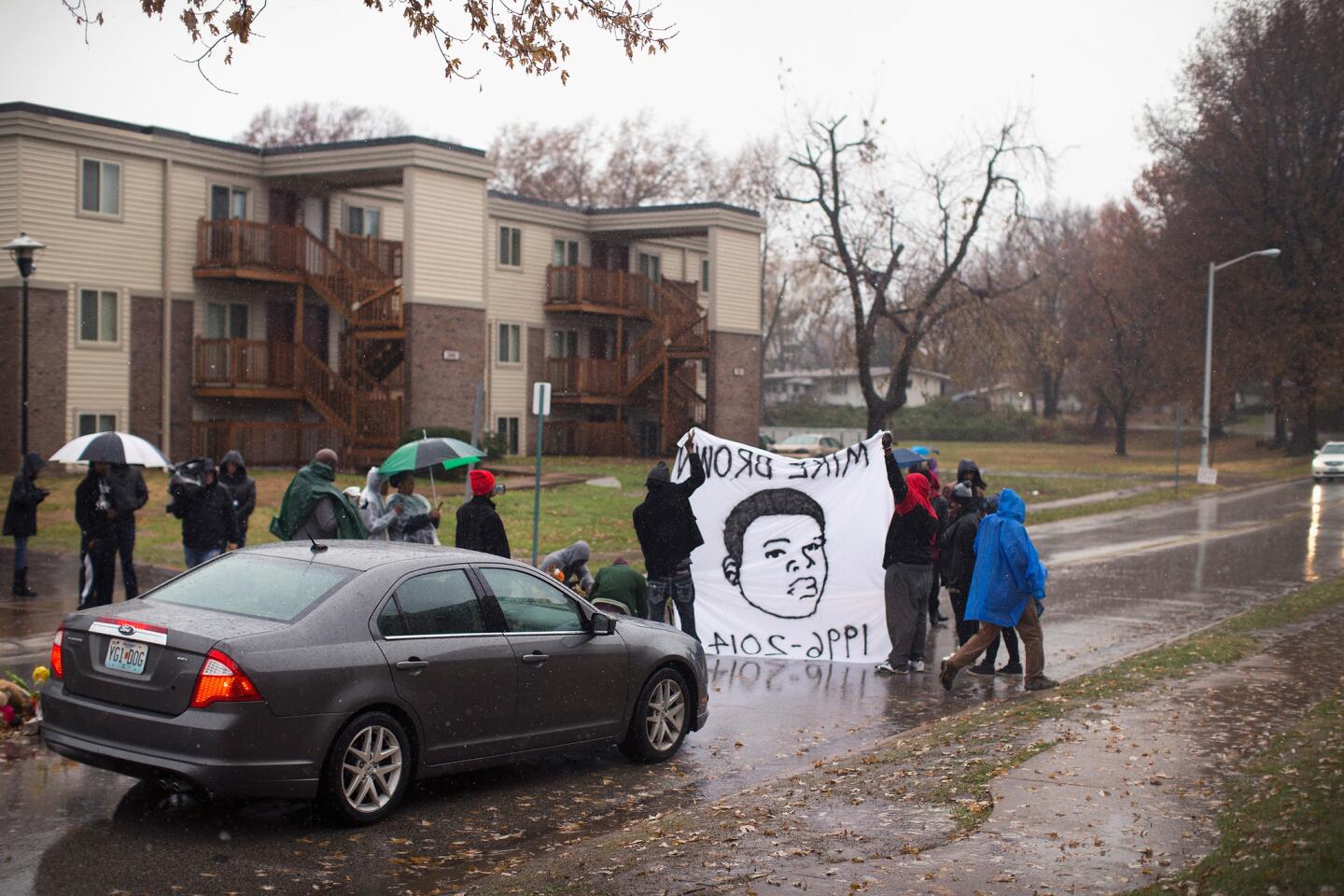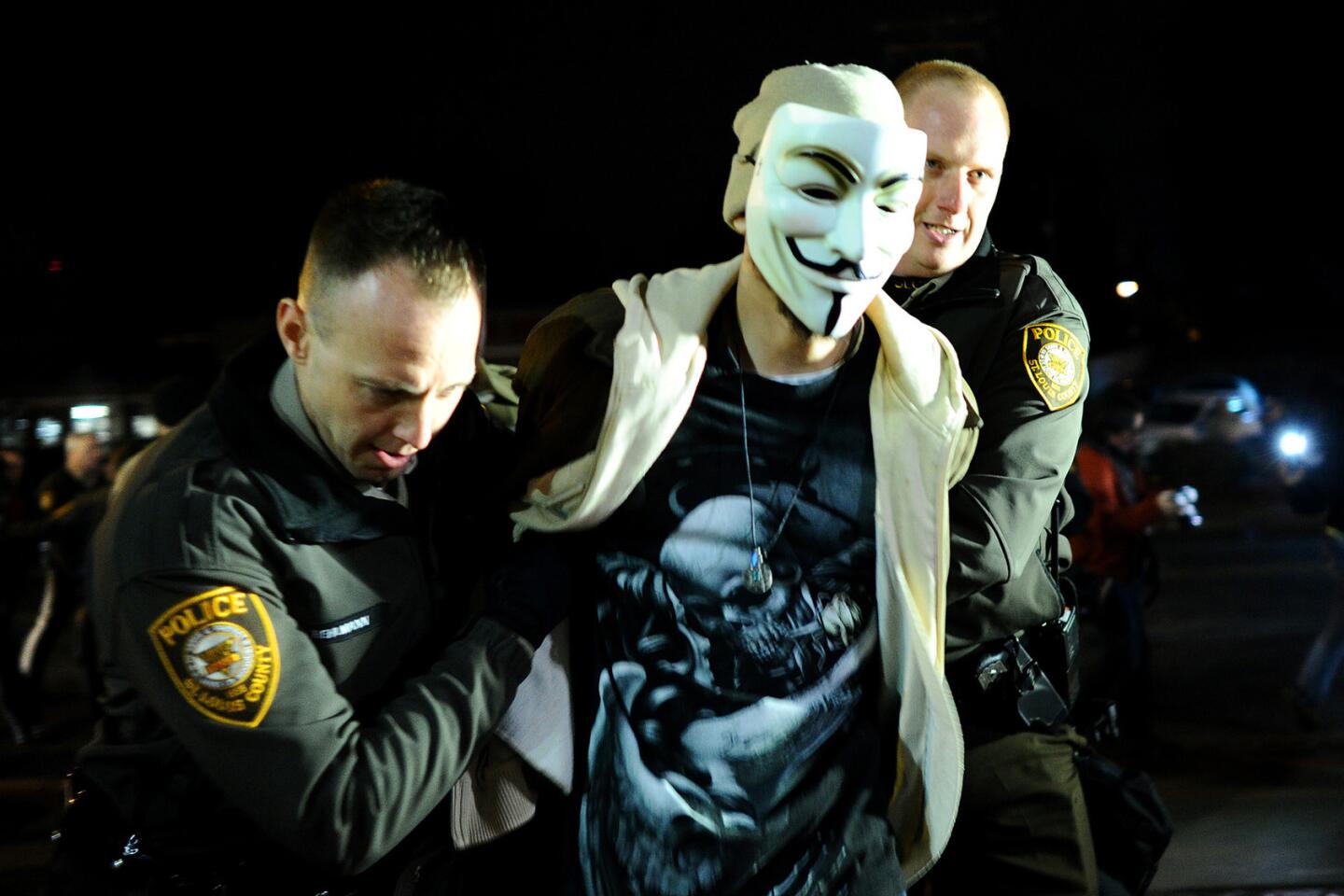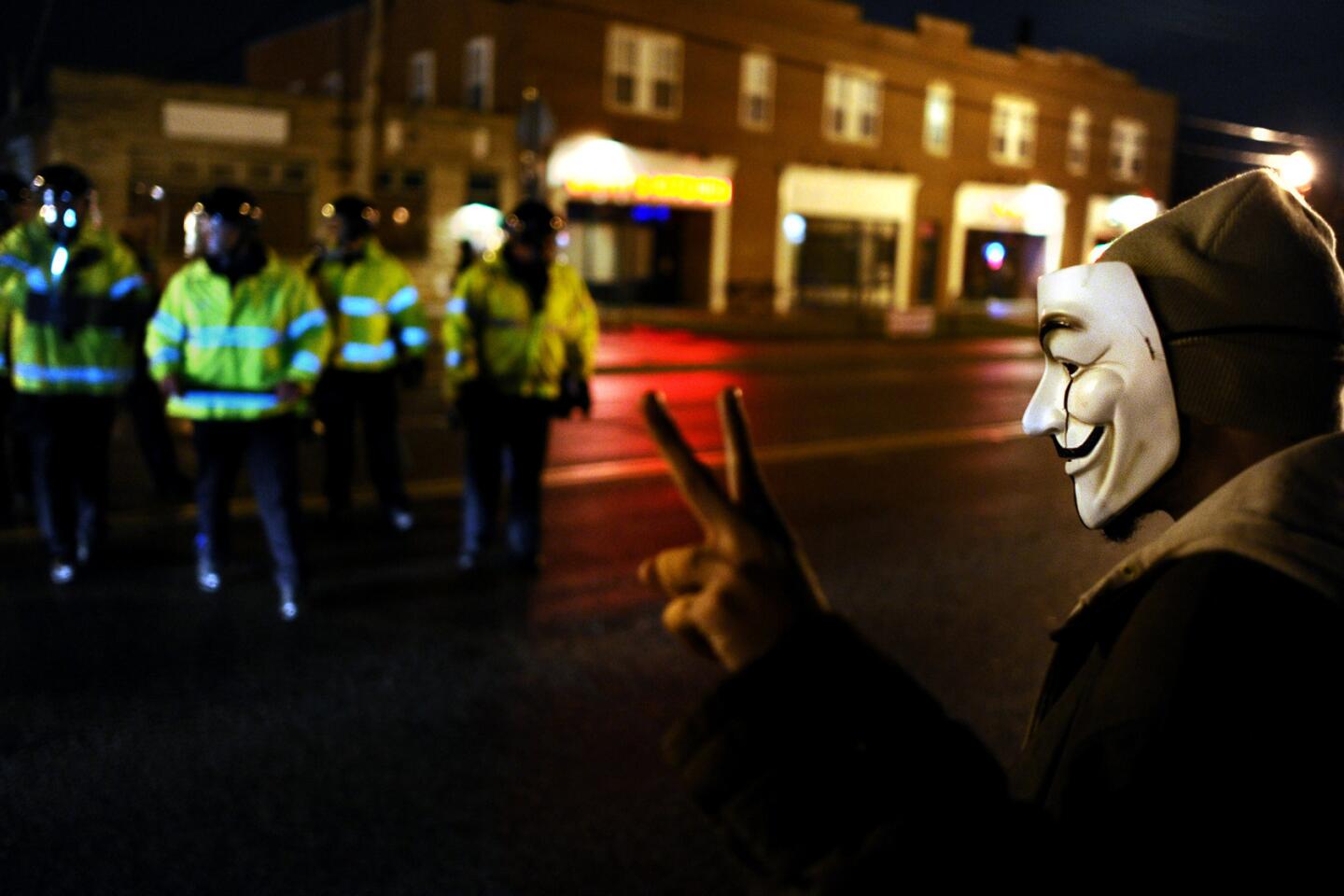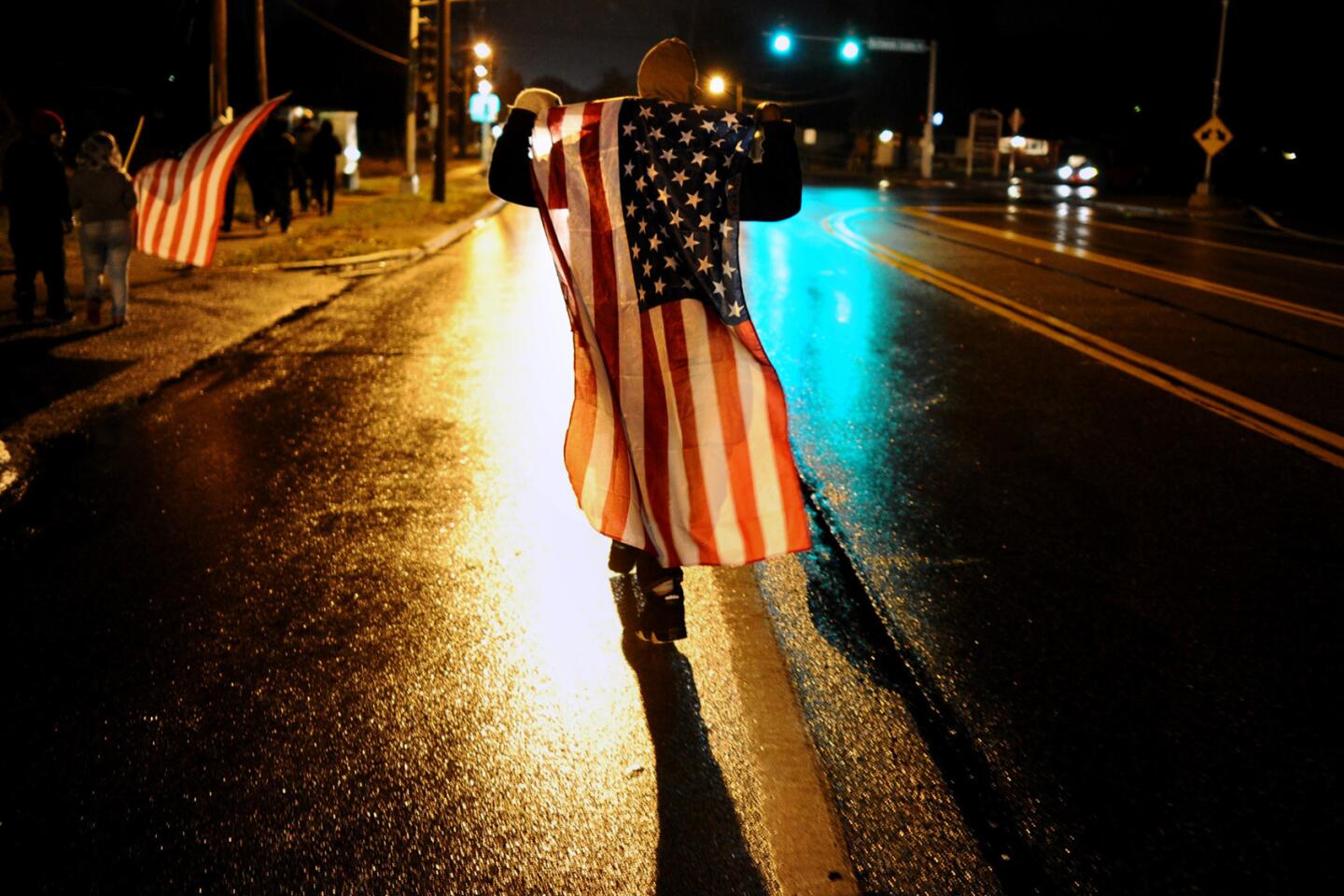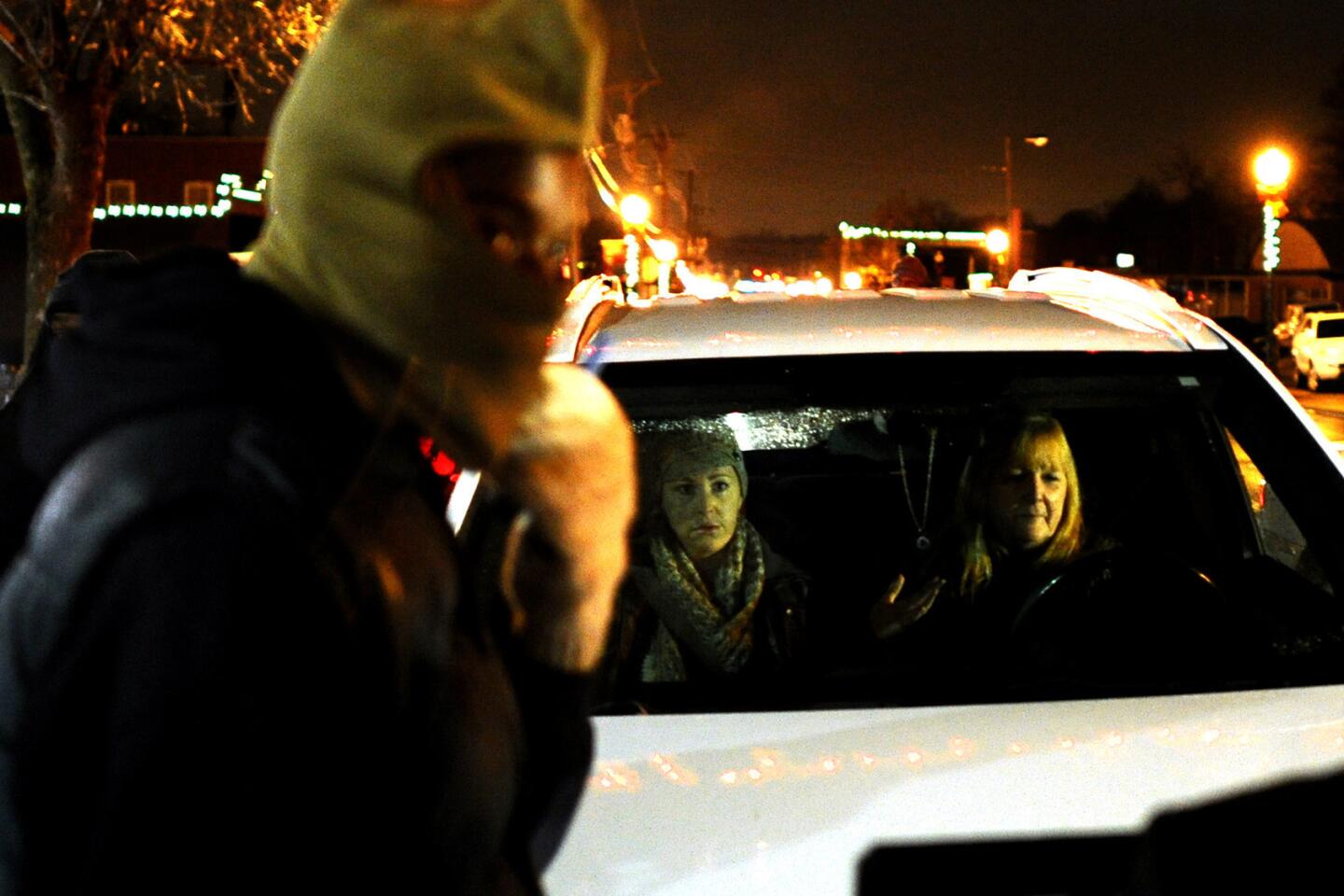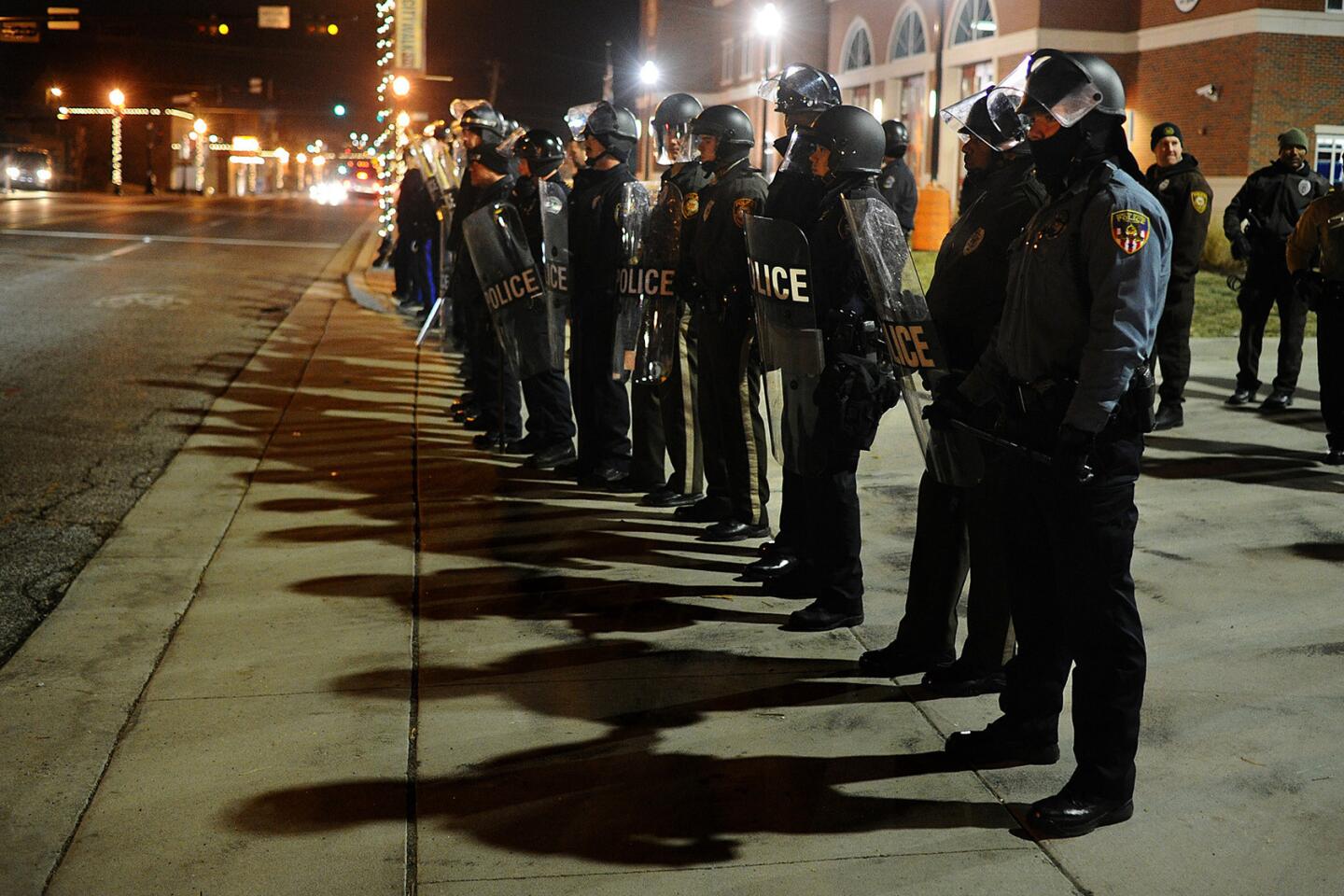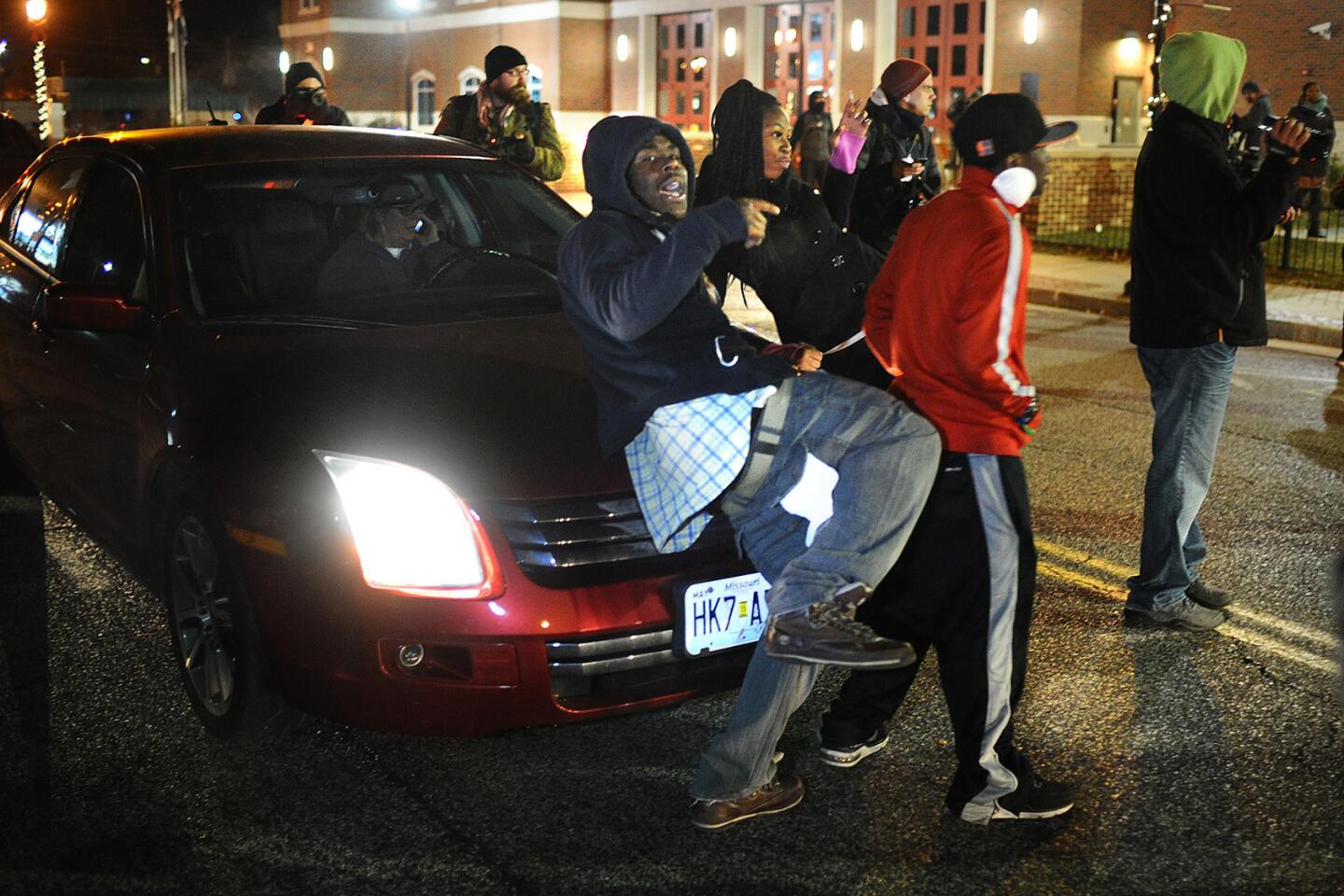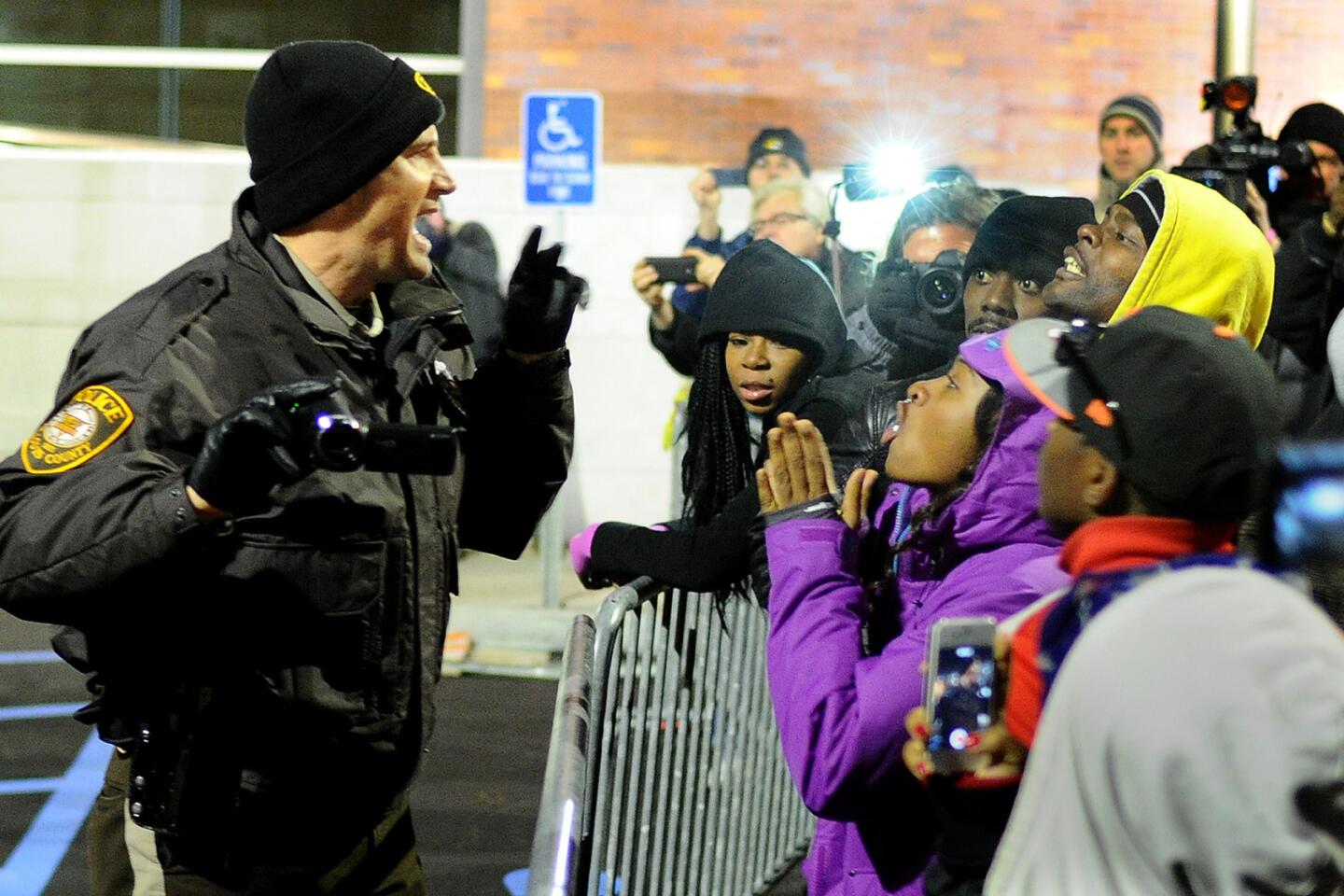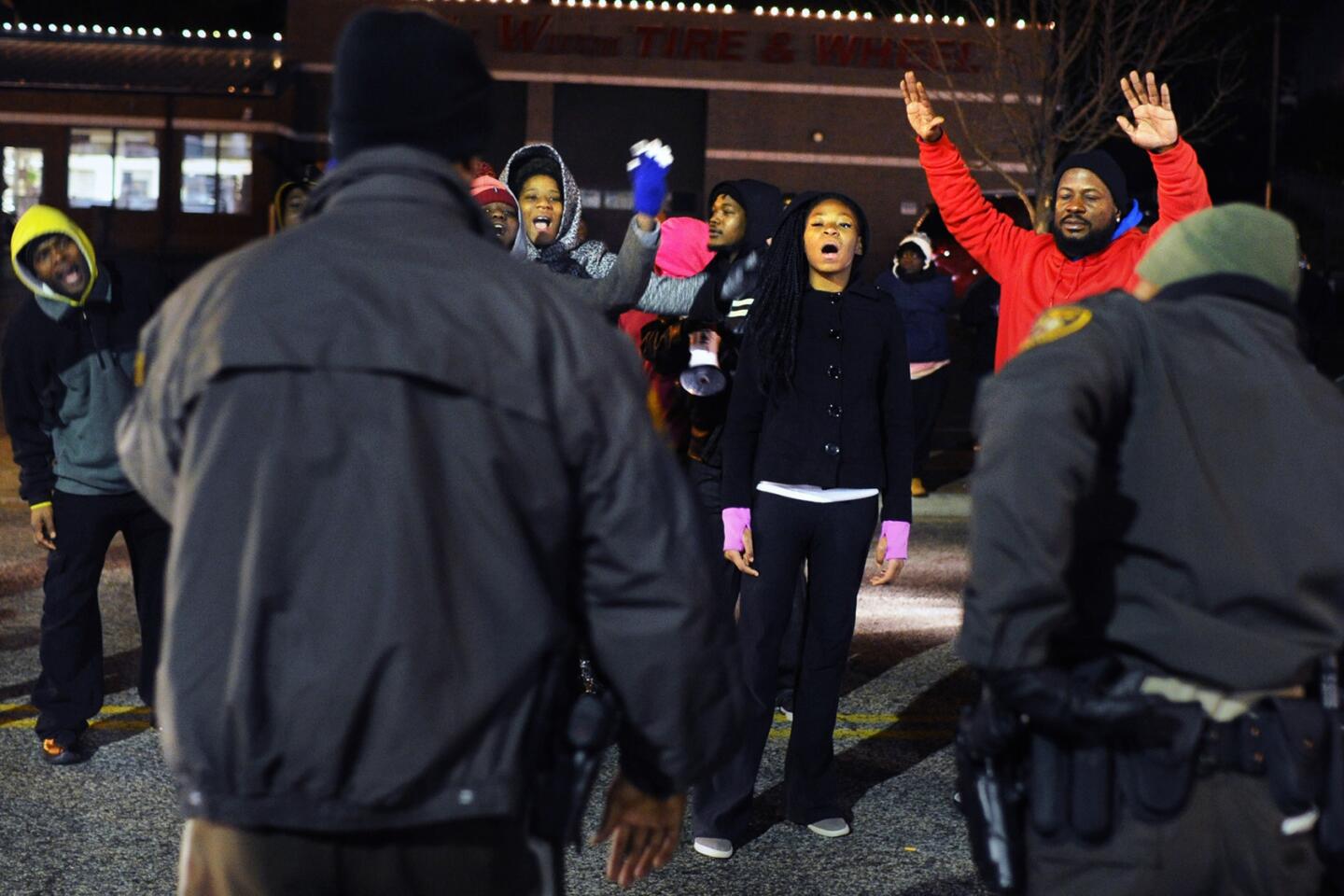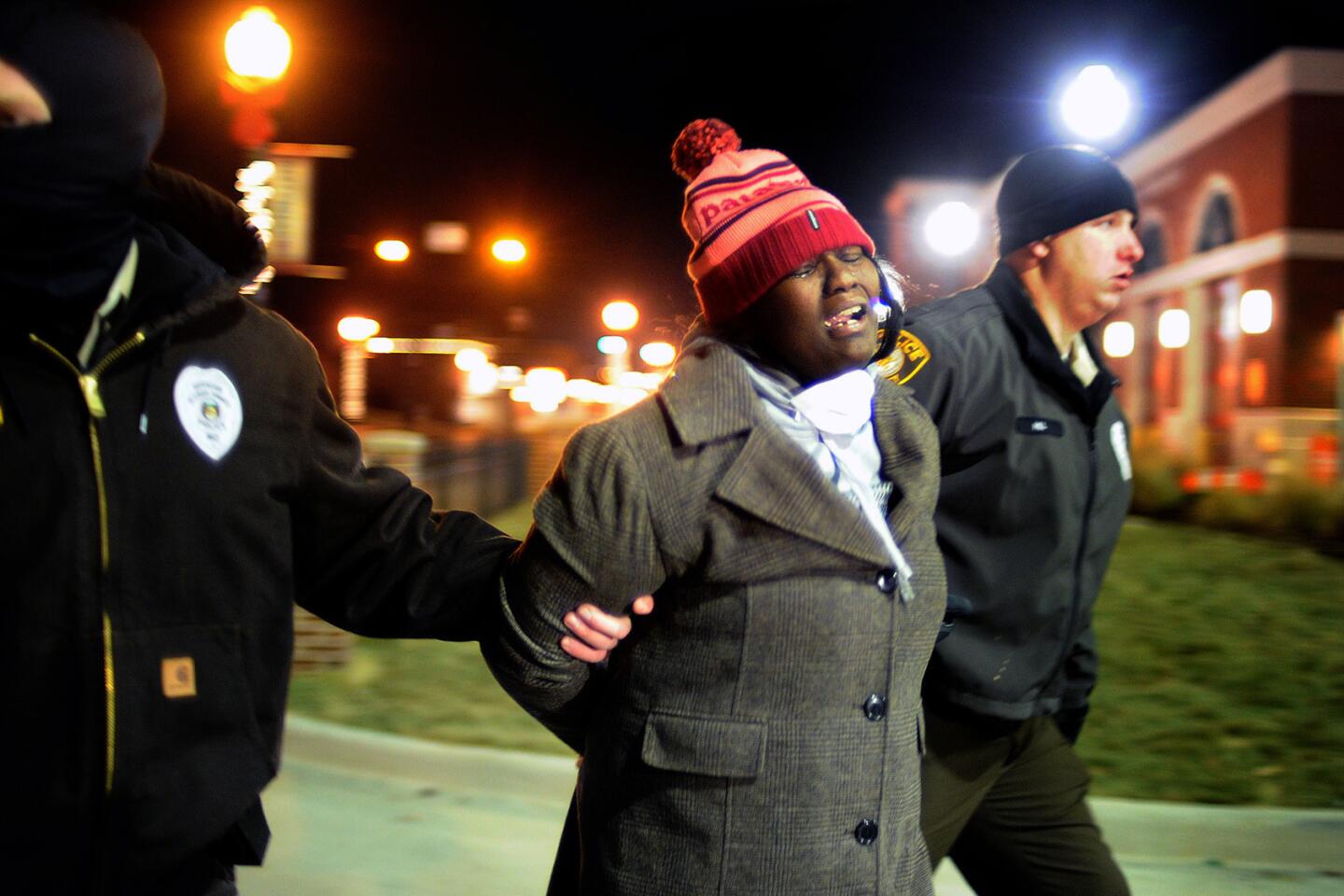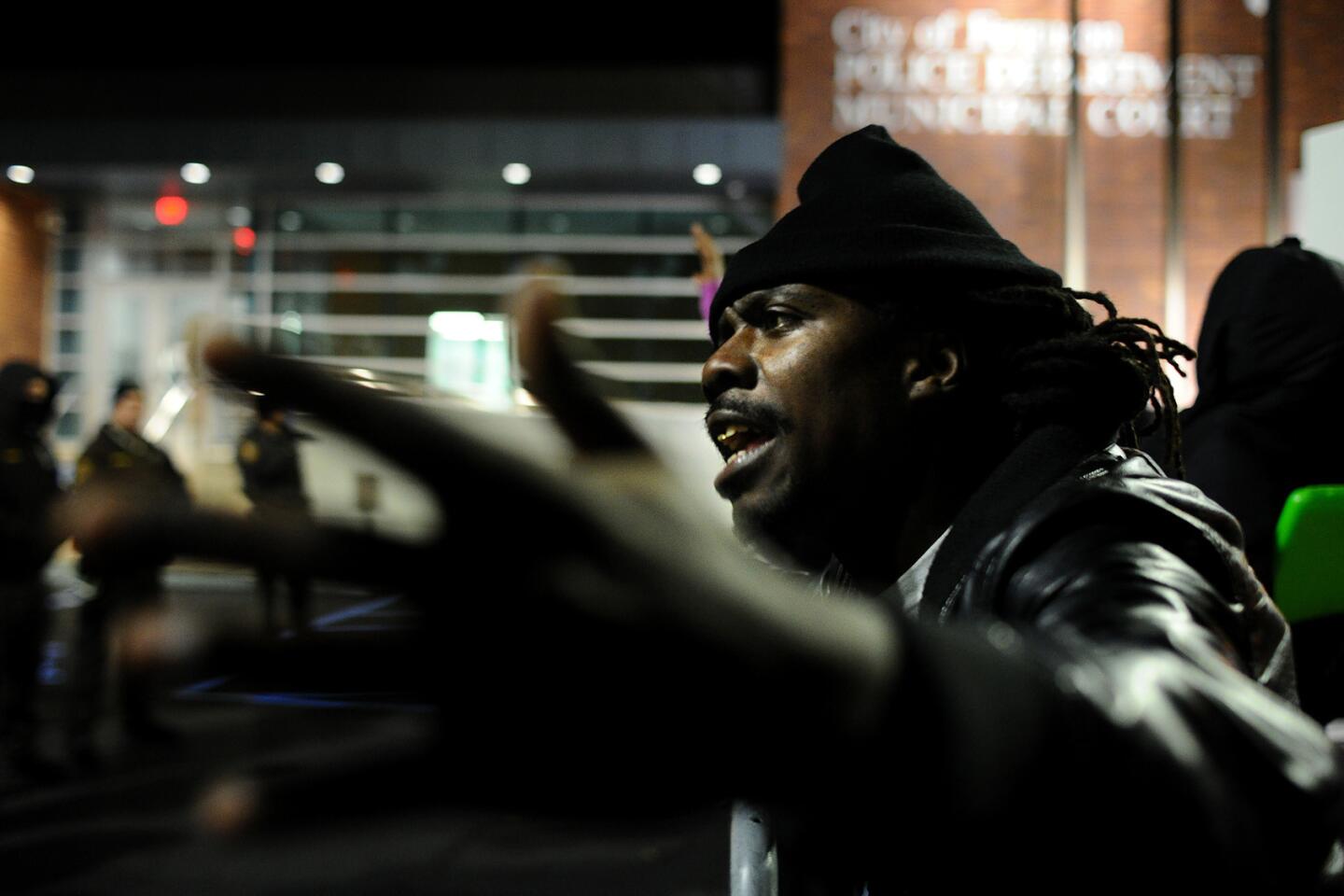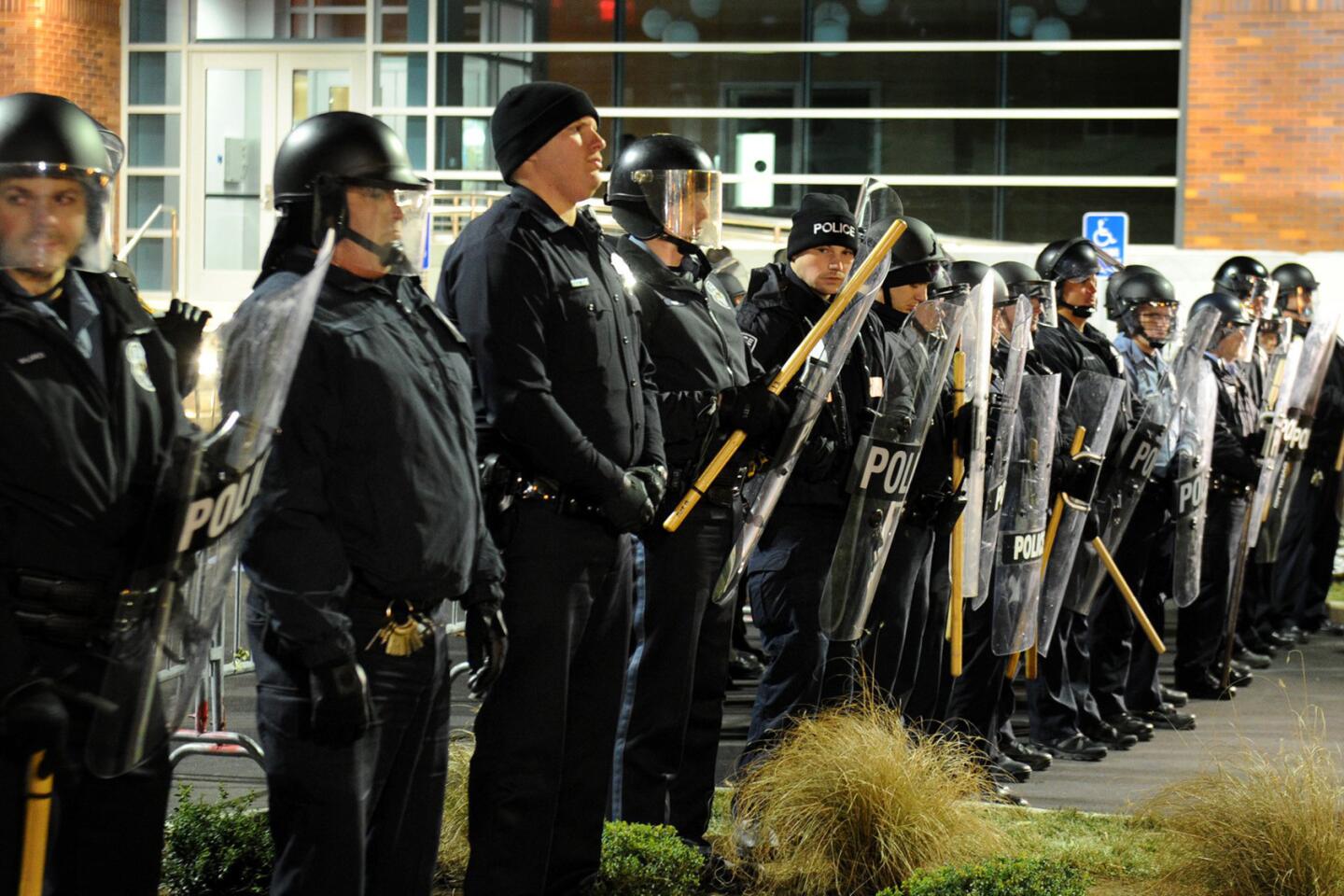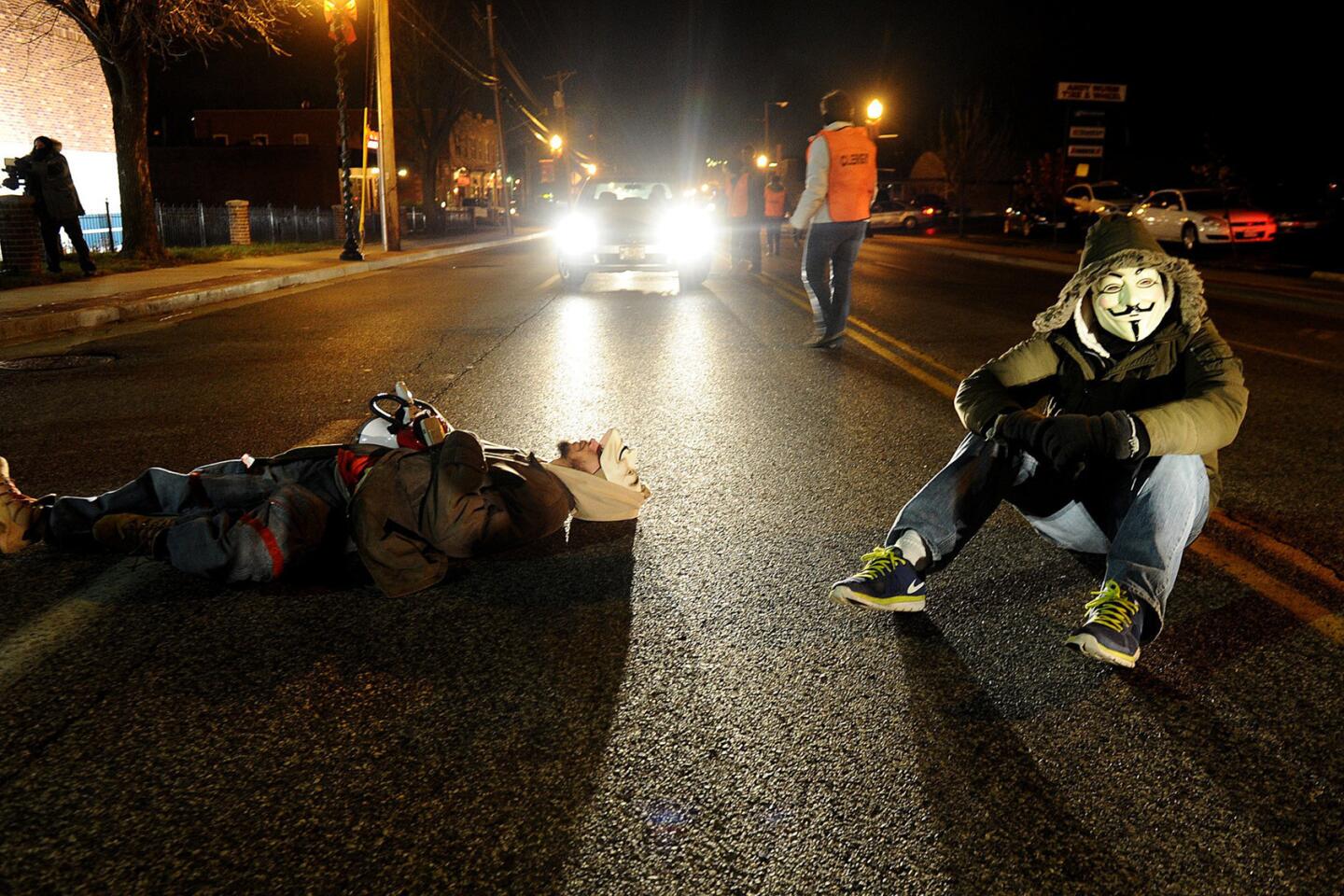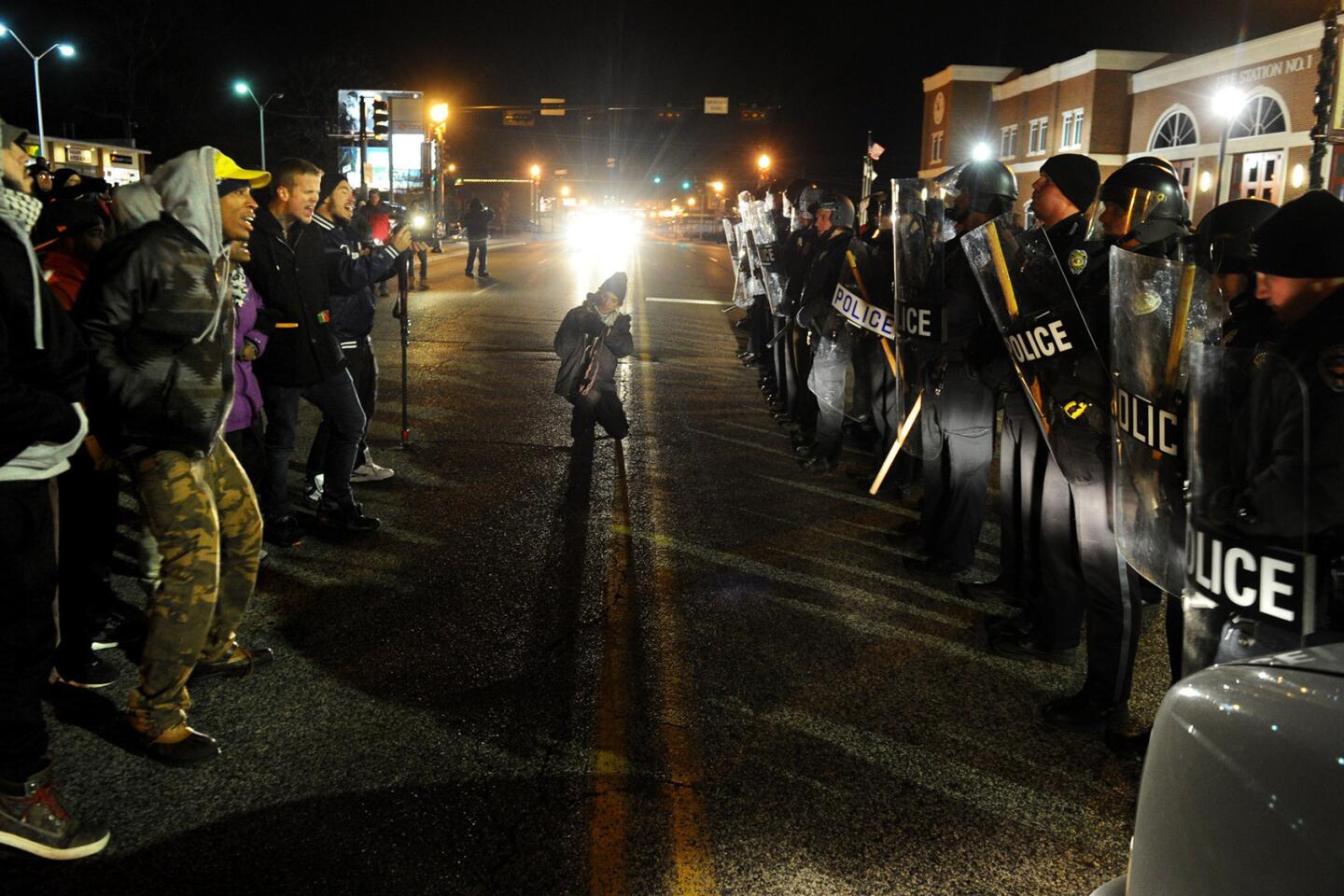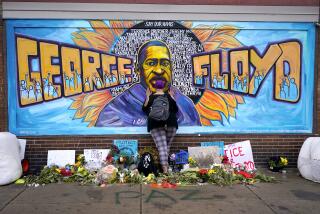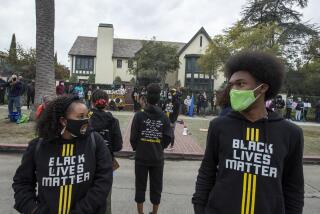Ferguson reaction continues across U.S.; N.Y. protests calm
- Share via
Reporting from New York — The recipe was there for things to turn ugly. An angry crowd protesting a grand jury’s decision to not indict Ferguson, Mo., Police Officer Darren Wilson in the shooting of Michael Brown surged into the streets of Manhattan. Marchers pushed against traffic and carved a furious path through Midtown and into Times Square.
But instead of shattered shop windows and damaged police cars, the most visible damage from the protests so far have been traffic tie-ups and the fake blood that was splattered on Police Commissioner William J. Bratton.
At a news conference Tuesday, Mayor Bill de Blasio called the incident “a cowardly act” and credited Bratton’s leadership in part for ensuring that New York did not see the same kind of violence that Ferguson has seen. He noted that Bratton was in the streets with marchers, overseeing the action as it unfolded.
“We approach policing and the relationship between police and community very differently here in New York City,” said De Blasio.
If any place would seem ripe for rage to boil over, it is New York. A month before Brown died in Ferguson, a New York police officer was accused of using an illegal chokehold on an unarmed black man named Eric Garner. Garner died, and a grand jury is still weighing whether to indict the officer.
Just last Thursday, another unarmed black man, Akai Gurley, was shot to death by a cop on patrol in a Brooklyn public housing project. Bratton has called it a tragic error.
De Blasio said the protests in Ferguson showed that change was needed there – change that, he said, has helped New York keep anger from exploding into violence.
“We have to make profound changes in our society,” the mayor said. “We have to make profound changes in our city. But they will not be achieved through violence, they’ll be achieved through a peaceful protest, they’ll be achieved through legislation, they’ll be achieved through elections, and this city actually is an example of that.”
De Blasio, who took office in January, said New York had much more to do. But he said recent moves toward reforming the Police Department’s use of stop-and-frisk and reducing the enforcement of marijuana laws were bearing fruit.
“And obviously it’s been a very tortured path in Ferguson,” said De Blasio, who vowed to improve race relations when he became mayor and whose multiracial family – De Blasio is white and his wife is black – is seen as a symbol of New York’s diversity.
As the mayor spoke, protesters were planning new marches across the country, including in New York. This time, instead of heading directly north from Union Square to Times Square, the crowd pushed west toward the Lincoln Tunnel. The goal was to shut down traffic between Manhattan and New Jersey.
It succeeded for a while. Police who had allowed them to march in the streets closed the tunnel to traffic as rush-hour drivers tried to creep home. But officers also prevented protesters from swarming into the tunnel, and within an hour, some traffic was again moving through it.
Later, marchers began taking over FDR Drive, which runs along the eastern edge of Manhattan. Traffic ground to a halt as police stood by, watching and waiting for the trouble they hoped would not come.
Protests broke out in other cities around the nation, including Washington, D.C., Boston, Los Angeles and Oakland.
In Los Angeles, some protesters converged near USC, where authorities closed entrances to the 110 Freeway.
In Washington, about 400 protesters marched through the city for hours, said Lt. Sean Conboy, a spokesman for the Metropolitan Police Department. Protesters briefly entered a Walmart but left peacefully. They made their way to the White House, where they stood outside the fence chanting, “Whose house? Our house.”
In Boston, about 1,500 protesters marched through the streets. Some of them tried to get onto Interstate 93 but were stopped by a line of police guarding the on-ramp, police spokesman Lt. Michael McCarthy said. There were several arrests late Tuesday for disorderly conduct, said police spokesman Officer James Kenneally.
In Dallas, demonstrators briefly closed I-35 in both directions. Seven protesters were arrested and charged with obstructing a highway, and I-35 was reopened shortly before 10 p.m., police said.
In Detroit, protesters briefly shut down northbound Interstate 75 until police escorted them off. No arrests were made, the Detroit Free Press reported.
In Oakland, protesters blocked a freeway for the second day in a row. Demonstrators stopped traffic in both directions on Interstate 980, chanting, “Shut it down for Michael Brown.”
A group of 200 protesters broke off from a peaceful march of 1,500 in downtown Portland, Ore., briefly blocked traffic on Interstate 5, and began throwing rocks and bottles at police officers, said police spokesman Pete Simpson.
One driver stuck in traffic near downtown Portland was punched in the face when he honked at a protester, Simpson said. There have been about 10 arrests.
And in Denver, police said they used pepper spray “on a small group” of protesters and arrested three people when a crowd refused to disperse near Colfax Aveue and Interstate 25.
Times staff writer Javier Panzar in Los Angeles contributed to this report.
More to Read
Sign up for Essential California
The most important California stories and recommendations in your inbox every morning.
You may occasionally receive promotional content from the Los Angeles Times.
